EdMc
Active Member
- Joined
- Oct 24, 2009
- Messages
- 323
- Reaction score
- 680
Indianapolis, A Bike Haven City:
Indianapolis is probably best-known for the Indianapolis 500 Mile Race,
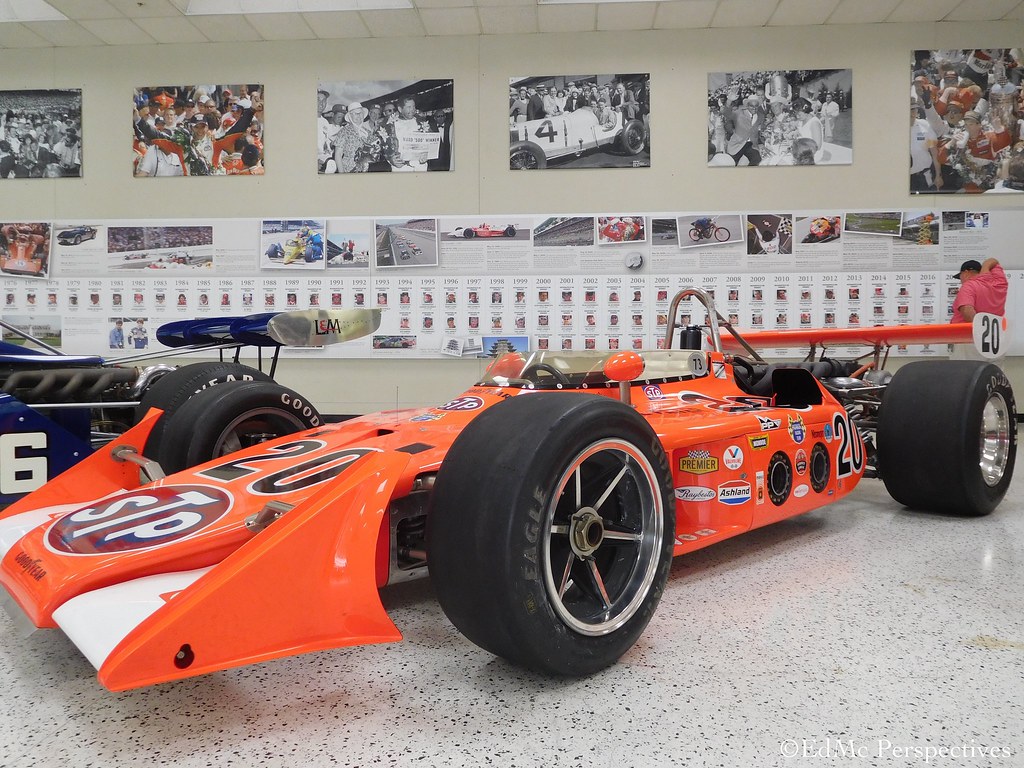
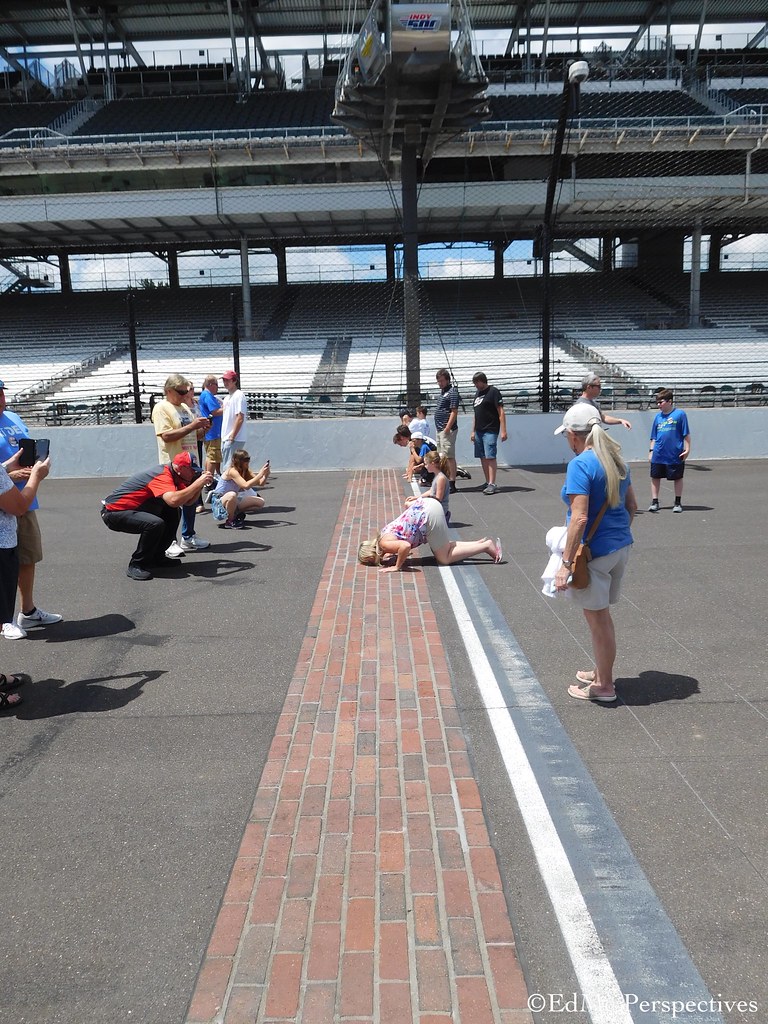
but, should also be recognized for its ambitious downtown Cultural Trail.
A beautiful bike and pedestrian trail with an eight mile length, I don’t think that this trail takes a back seat to any city. Visit Indy - $2 million dollars in public art, 5 acres of plants and trees, transforming the landscape, impacting the environment, bioswales, natural storm water management, promoting fitness, connecting people and places, the Journey is the Destination.
With a lead gift of $15 million dollars from Eugene and Marilyn Glick, ground-breaking began in 2007 and the trail was completed in 2013.
In February, 2008, the organization, Projects for Public Spaces, published the article, BOLD MOVES AND BRAVE ACTIONS, and stated, ”Indianapolis, Indiana, is taking what may be the boldest step of any American city towards supporting bicyclists and pedestrians”. After looking at before-and-after pictures, one can reach the conclusion that this trail was a game-changing project for Indianapolis.
Indianapolis Star, July 23, 2015
Study: Property values along Cultural Trail up $1B
“Property values have increased by $1 billion, businesses report more customers and higher sales, and residents feel safer Downtown since construction of the 8-mile Cultural Trail, according to a survey conducted by Indiana University Public Policy Institute.”
“Twenty-six percent of businesses said they now open on weekends, and 23 percent said they close later.”
“You can look around today, especially on Virginia Avenue, and see how the Cultural Trail already has changed our city,” Mayor Greg Ballard said in a prepared statement. “The impact is significant, and it will continue to grow in the years ahead.”
“The $63 million Cultural Trail was created through a public-private partnership between the city of Indianapolis and Central Indiana Community Foundation, which raised $27.5 million in private support. An additional $35.5 million came from federal transportation grants.”
Indianapolis Business Journal, Nov 4, 2017
Cultural Trail becomes unique drawing card for conventions and trade shows
“Indianapolis’ Cultural Trail has been called “a linear welcome mat,” “a directional sign” and “a marketer’s dream.”
“Of the $63 million total, $6 million was set aside in an endowment, which pays out 5 percent—or $300,000—annually for maintenance and improvements.”
“In 2014, the Indiana University Public Policy Institute placed counters on the Cultural Trail that estimated 1 million people used it that year.”
““We see people on the trail at all hours,” said Visit Indy Vice President Chris Gahl. “At 9 or 10 o’clock on a warm night, the trail can be pretty crowded.”
“About 4,500 volunteers also signed up to help maintain the trail.”
“There are already more than 20 cities that want to copy it.”
“Then the New York Times weighed in with two articles. One came in an early 2014 travel section that touted Indianapolis as one of 52 must-see destinations around the world. The reason, the Times raved, was the Cultural Trail.”
“You can’t buy publicity like that,” “... we realized what the Cultural Trail would mean from the standpoint of attracting visitors. But The New York Times article blew the lid off of that.”
“But there’s an important distinction between Indianapolis’ Cultural Trail and those urban trails (High Line in New York, the BeltLine in Atlanta, and the 606 in Chicago).” “We built this trail where people wanted to go, not just where there was a rail corridor or other available land,”
All views are from the trail except where noted. They are interspersed with photos of the trail.
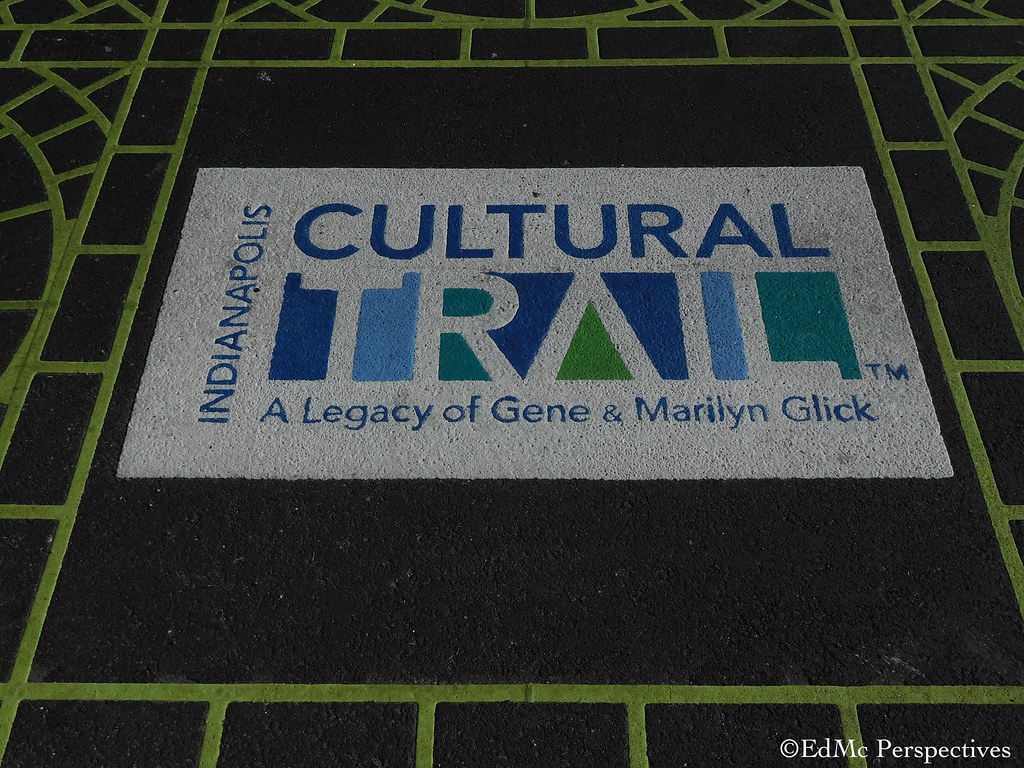
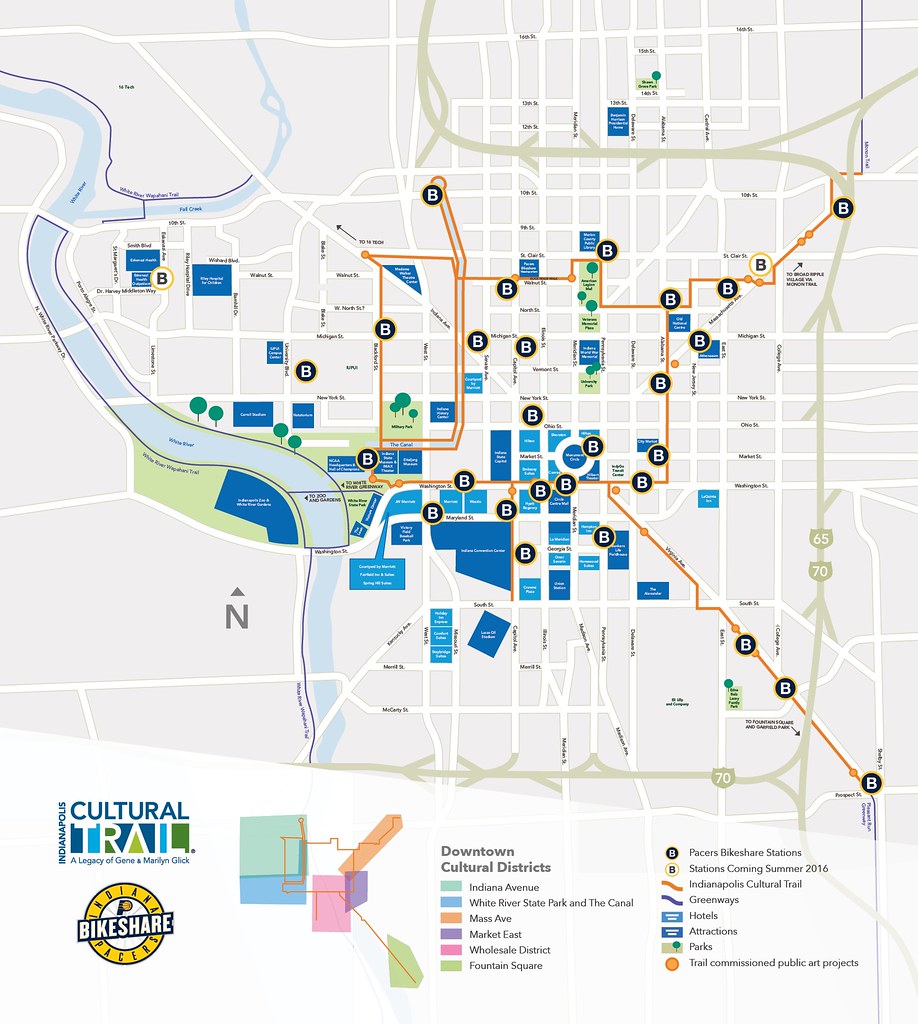
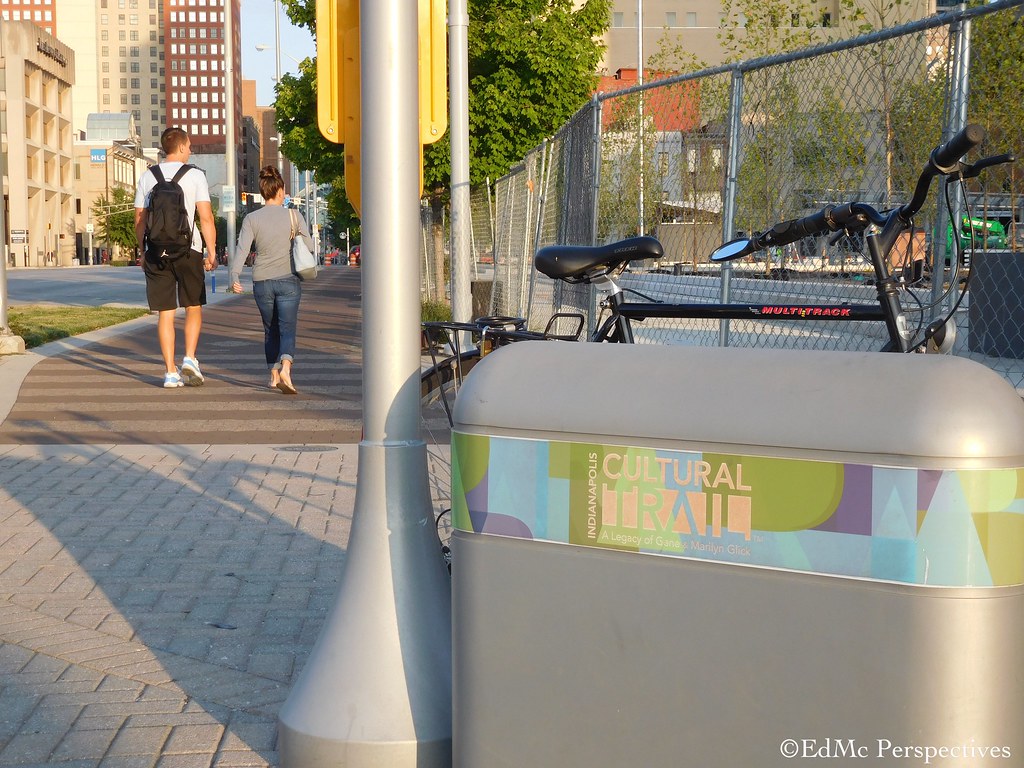
On Washington Street looking east
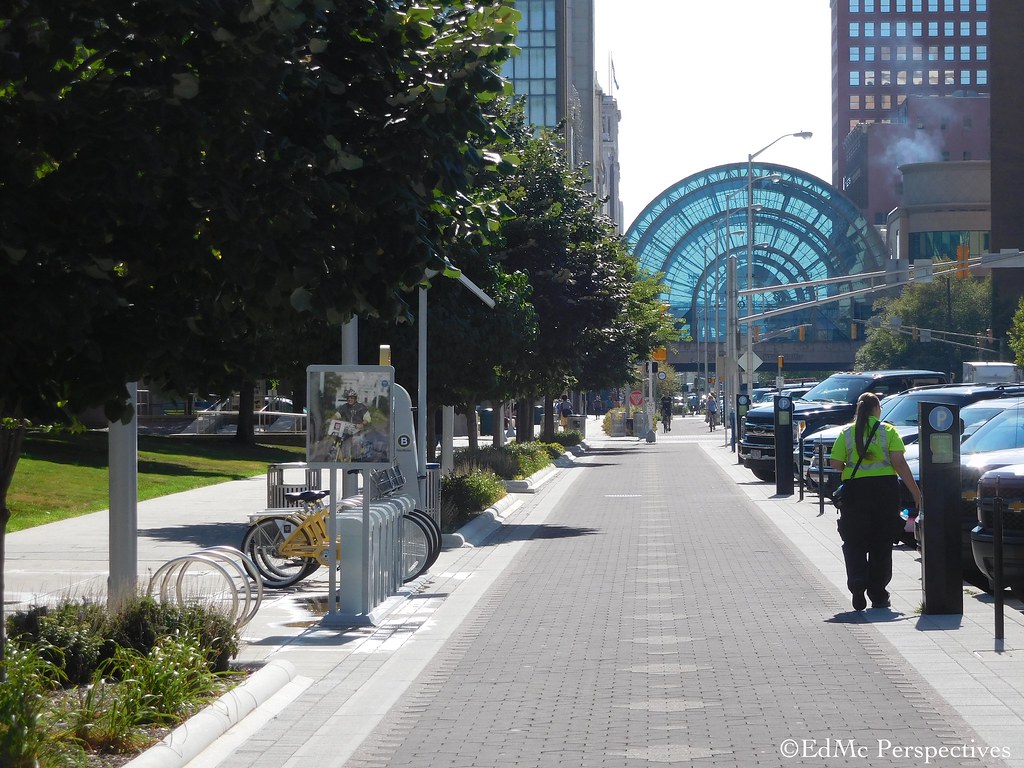


Artsgarden over Washington Street, Cultural Trail on right side of picture
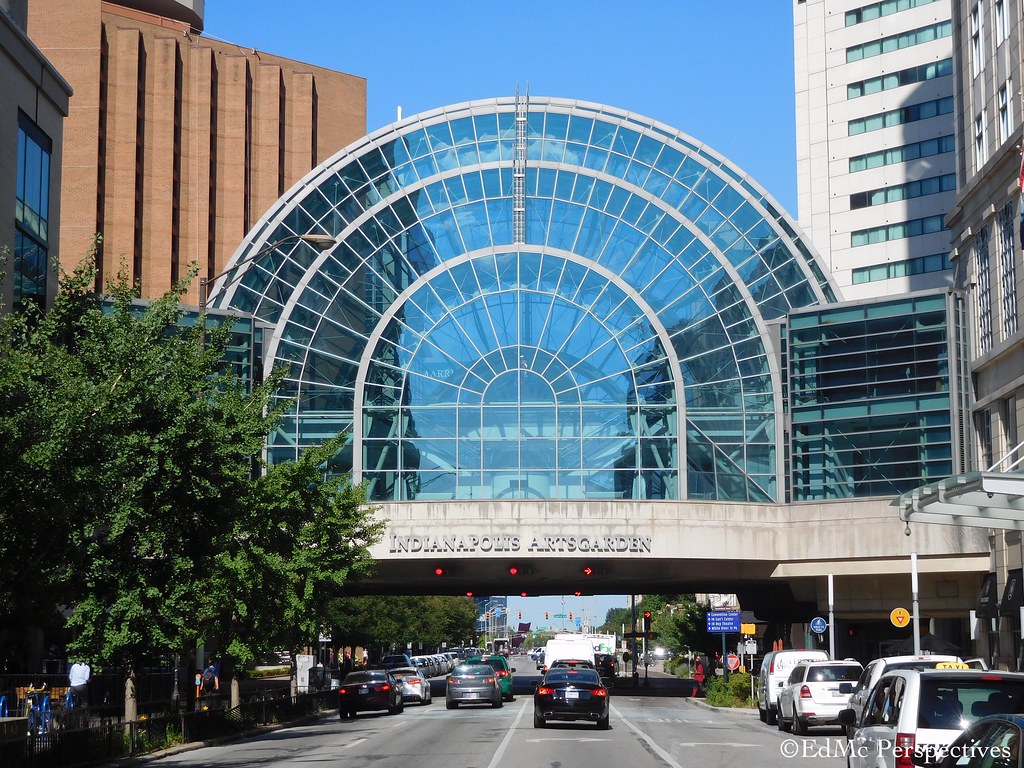
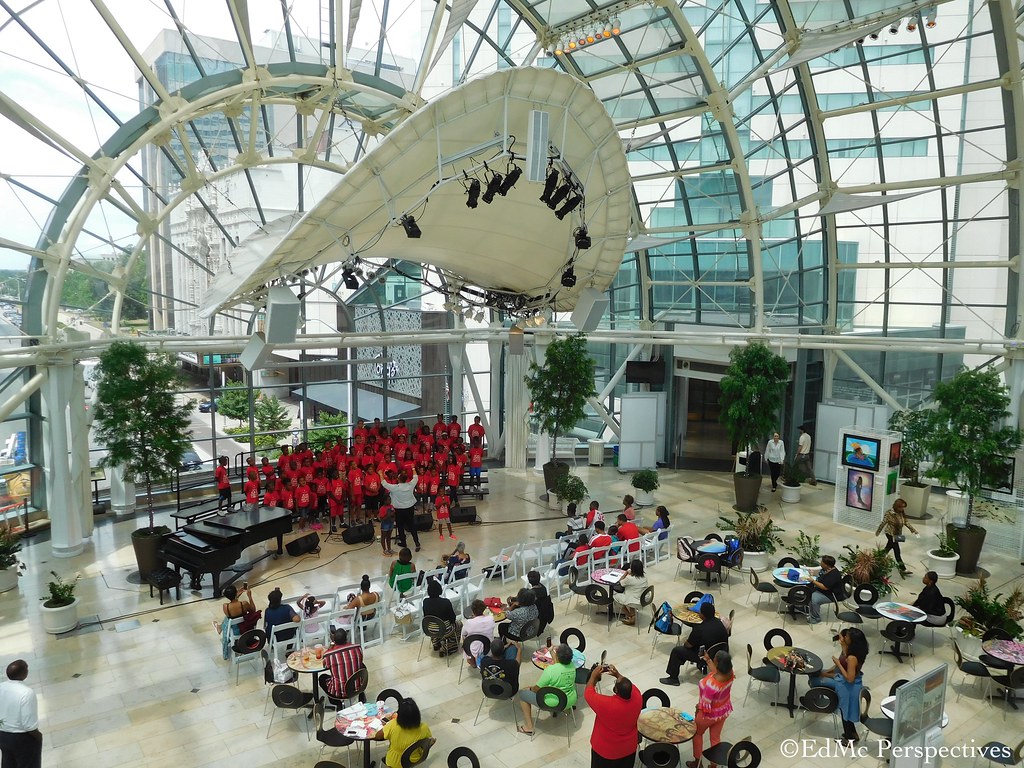
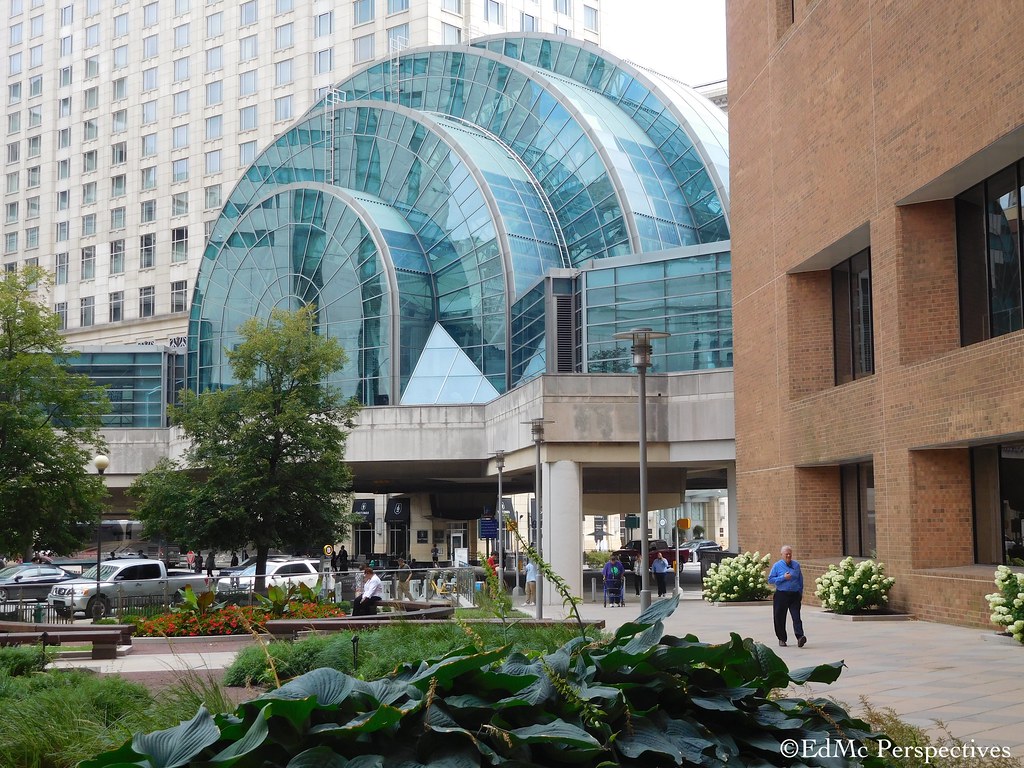
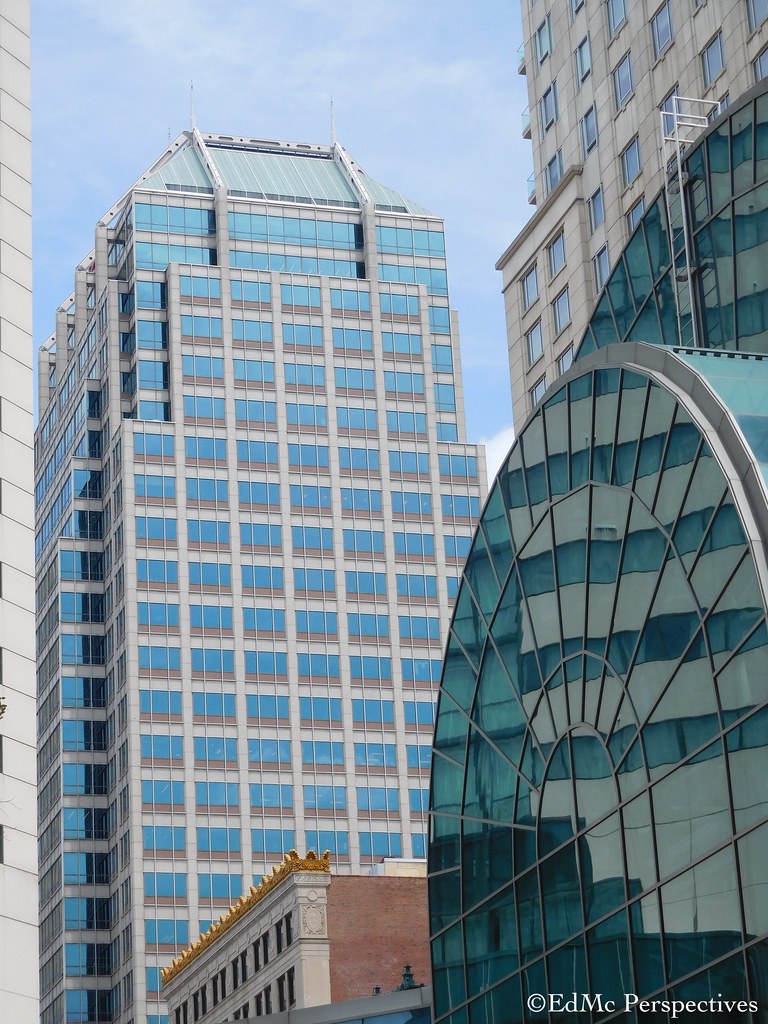
Circle Centre Mall is an attractive, solid-looking mall, I liked the food court setting.
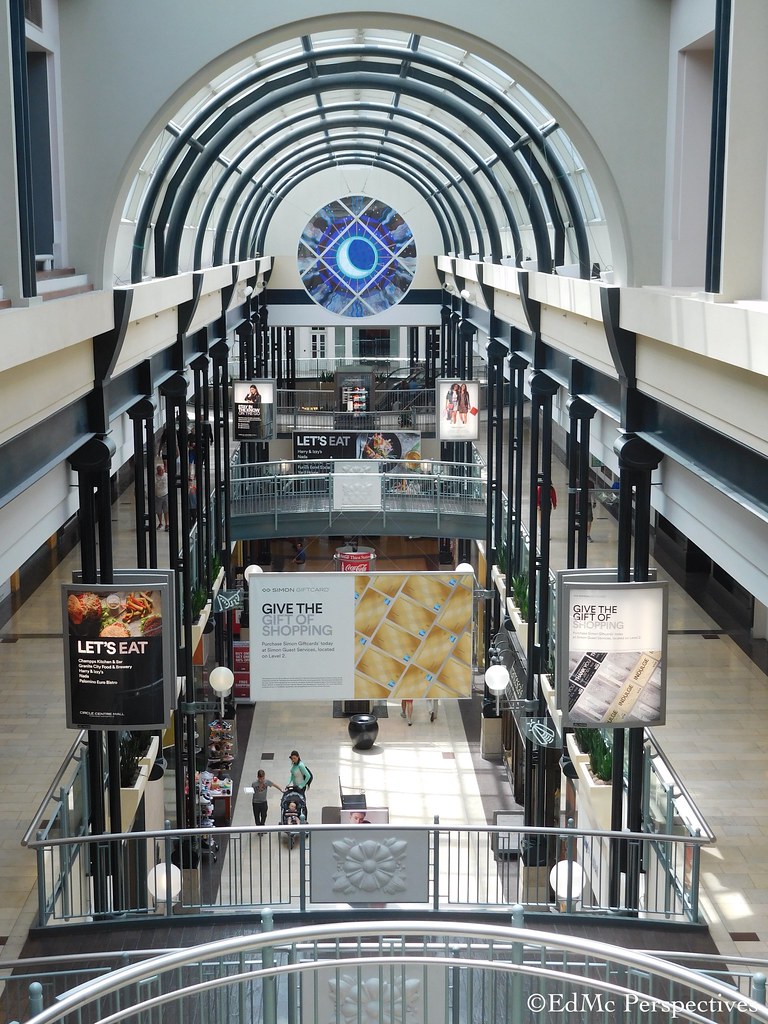
This picture is from the Circle Centre Mall garage, parking starts at $3 for up to 3 hours - take that Boston! Mall opened in September, 1995. Garage one block off the Trail, mall entrance across the street from the Trail.

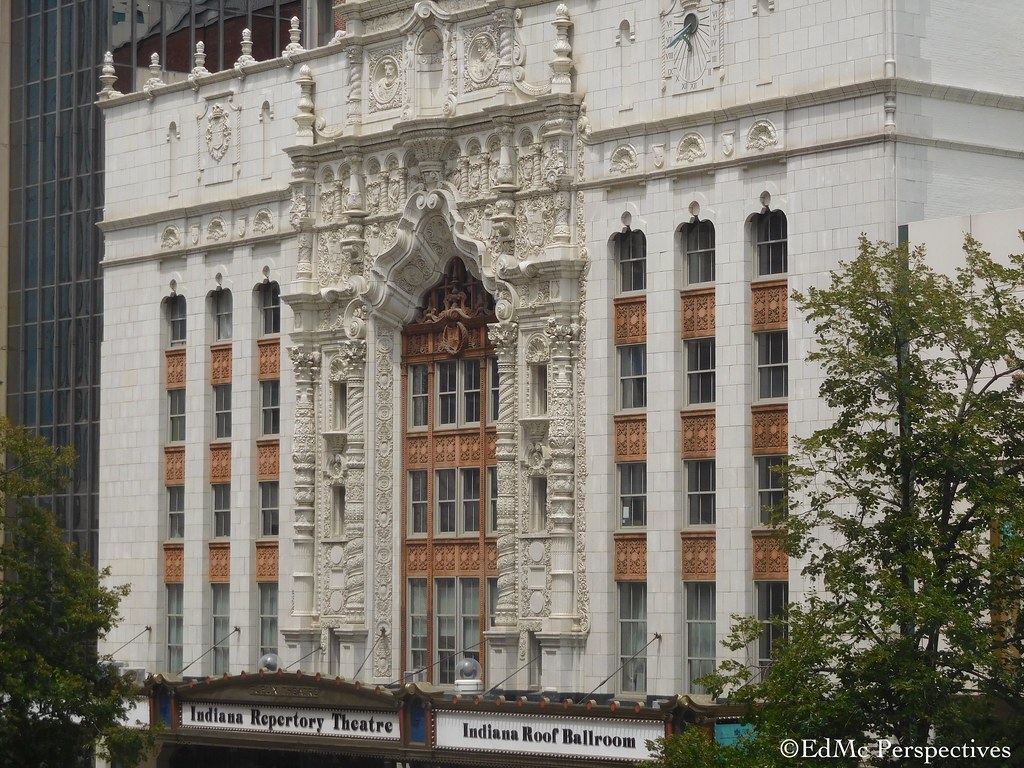
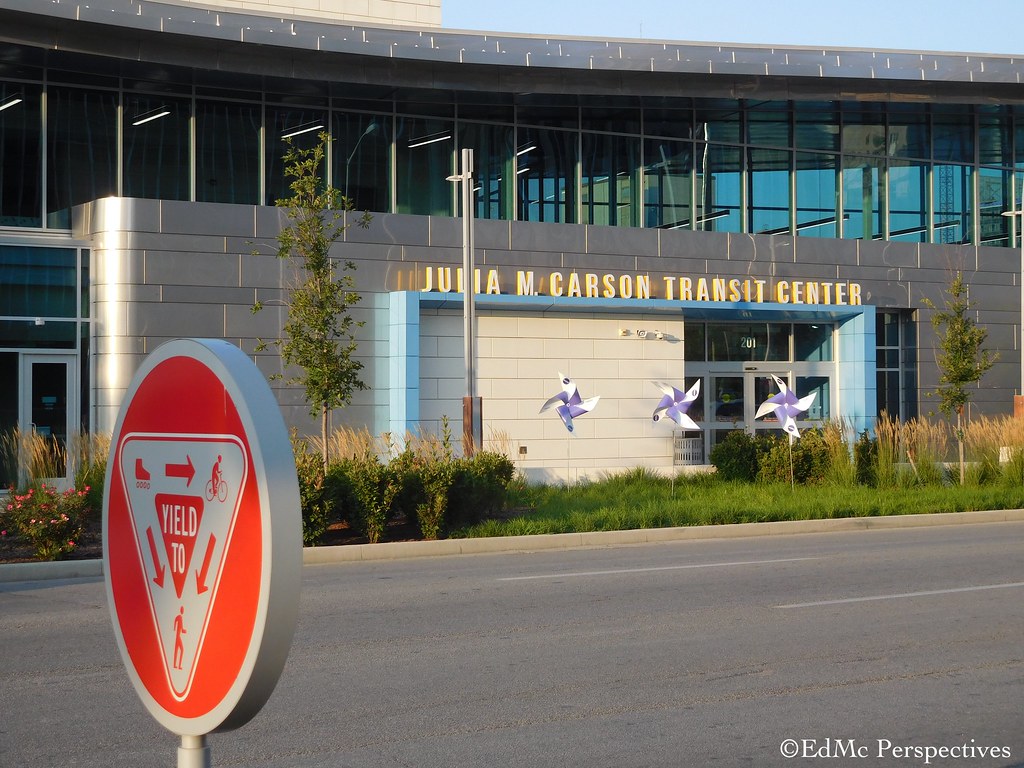
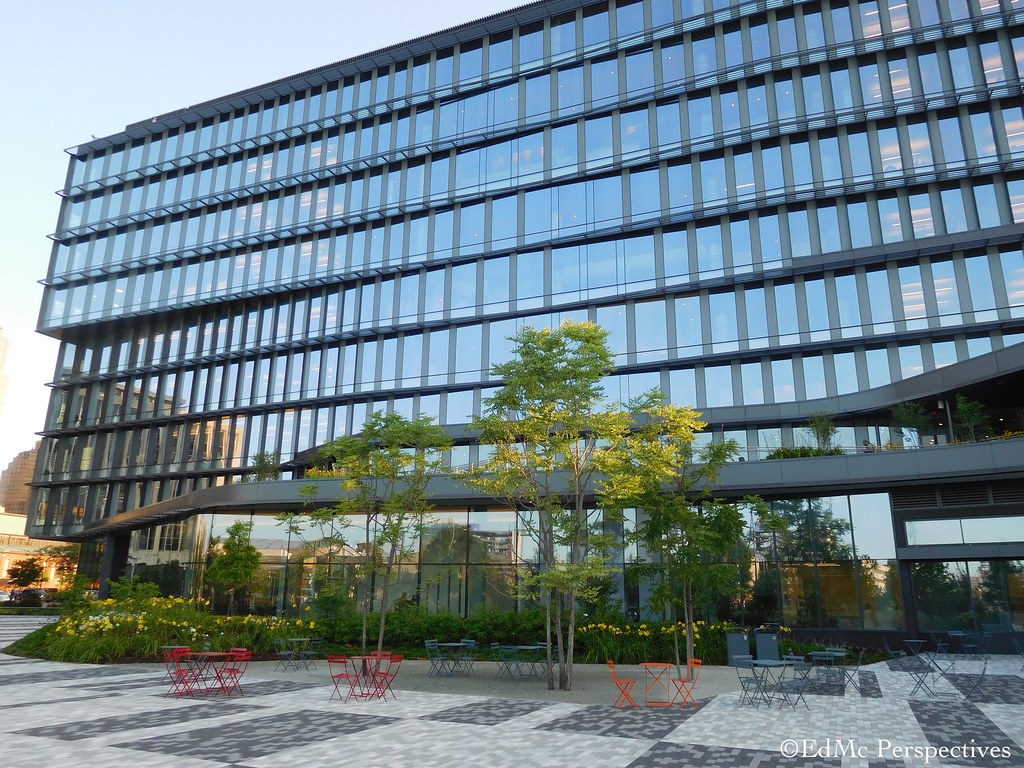
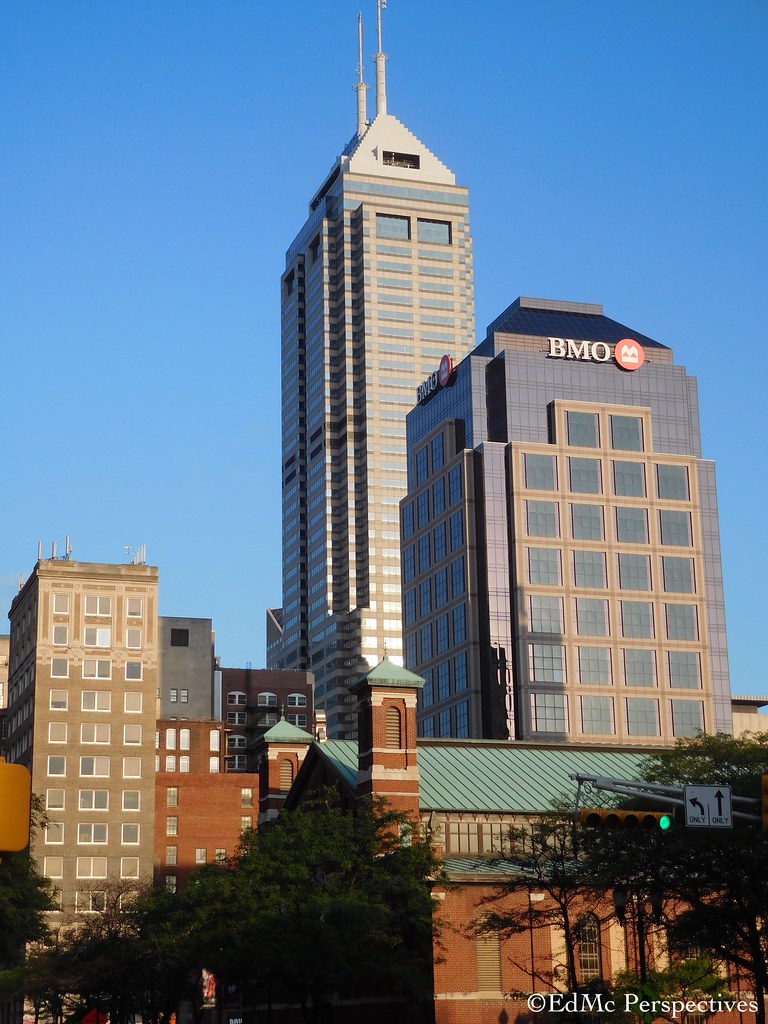
East side of downtown looking west
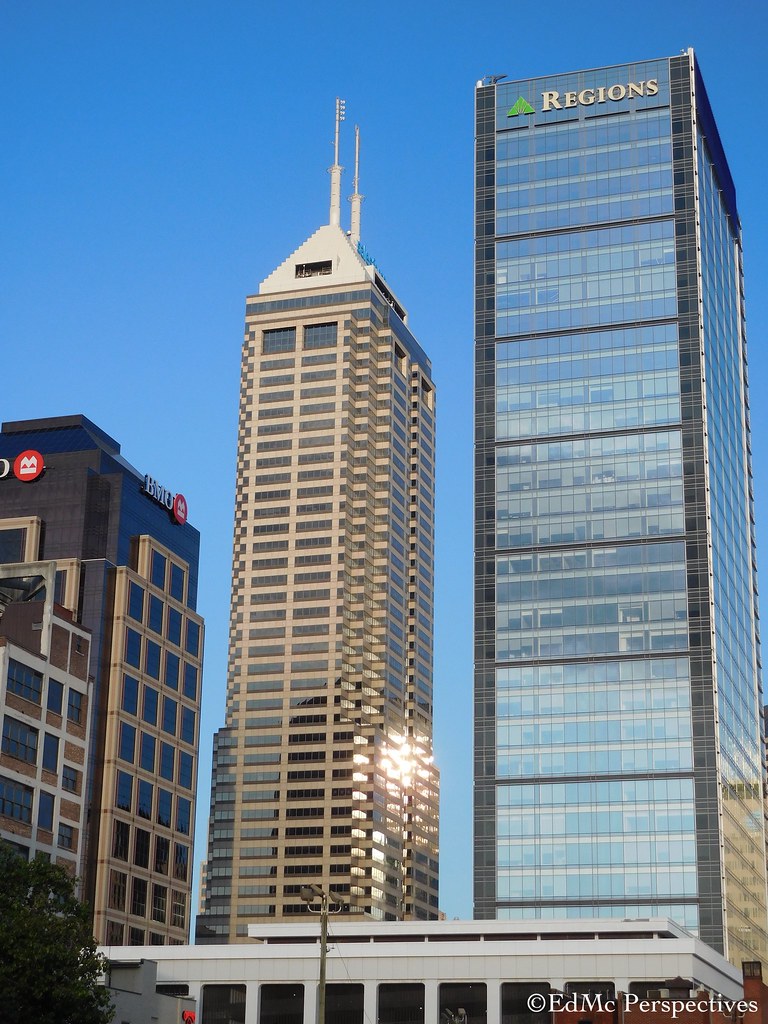
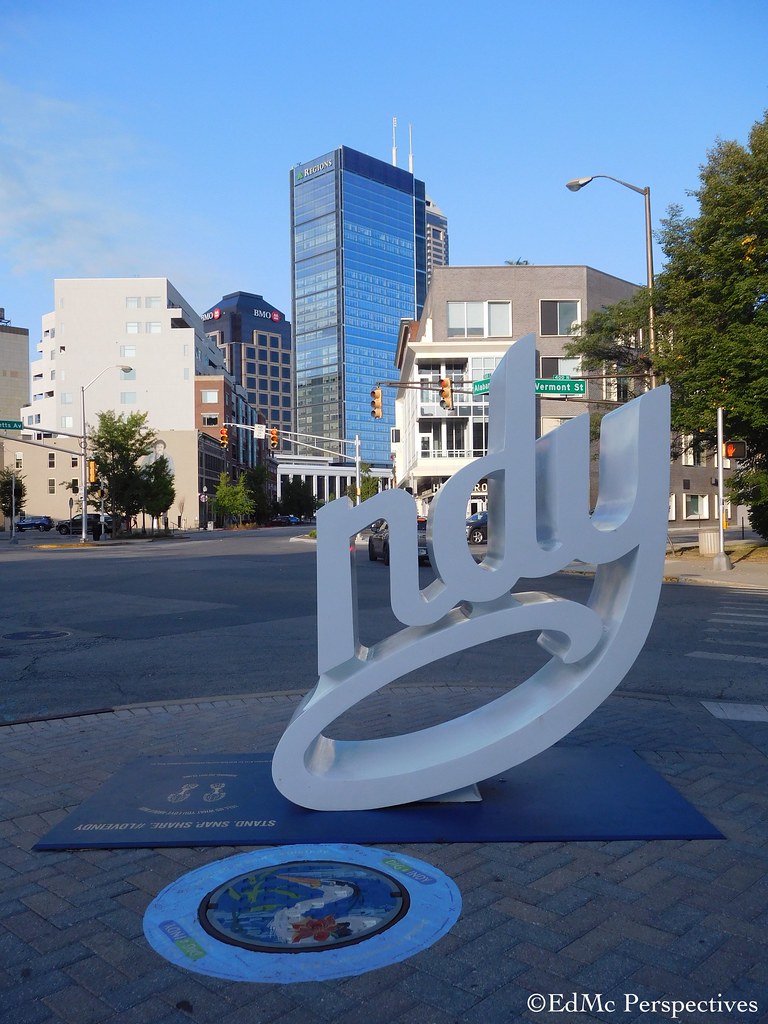
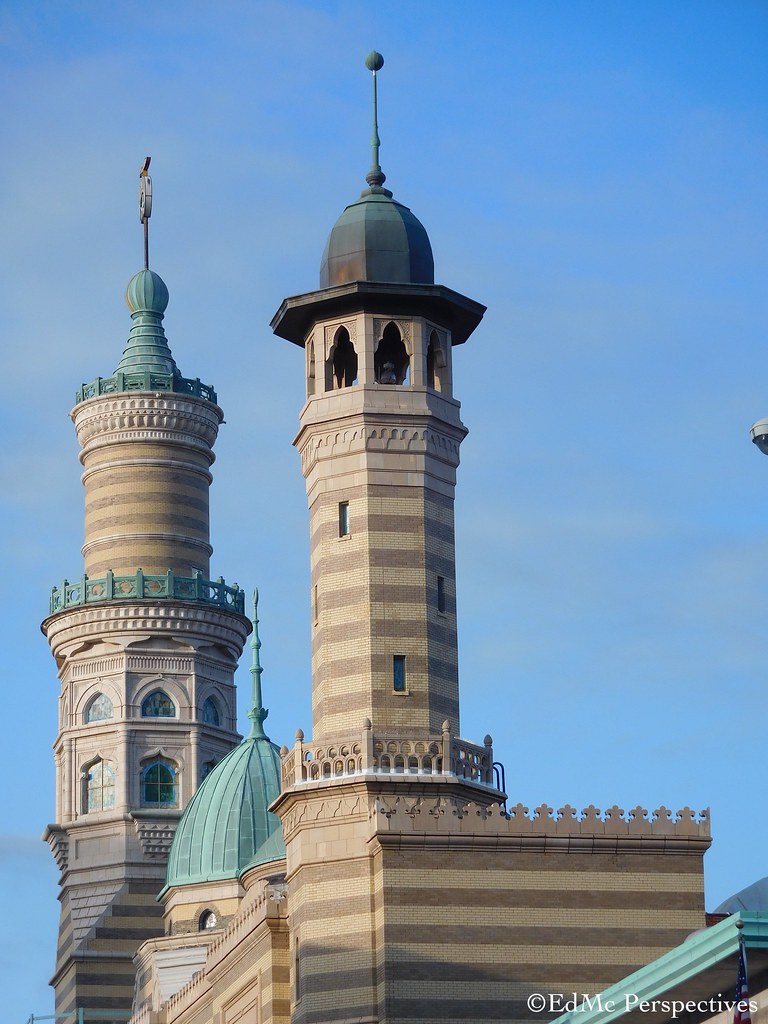
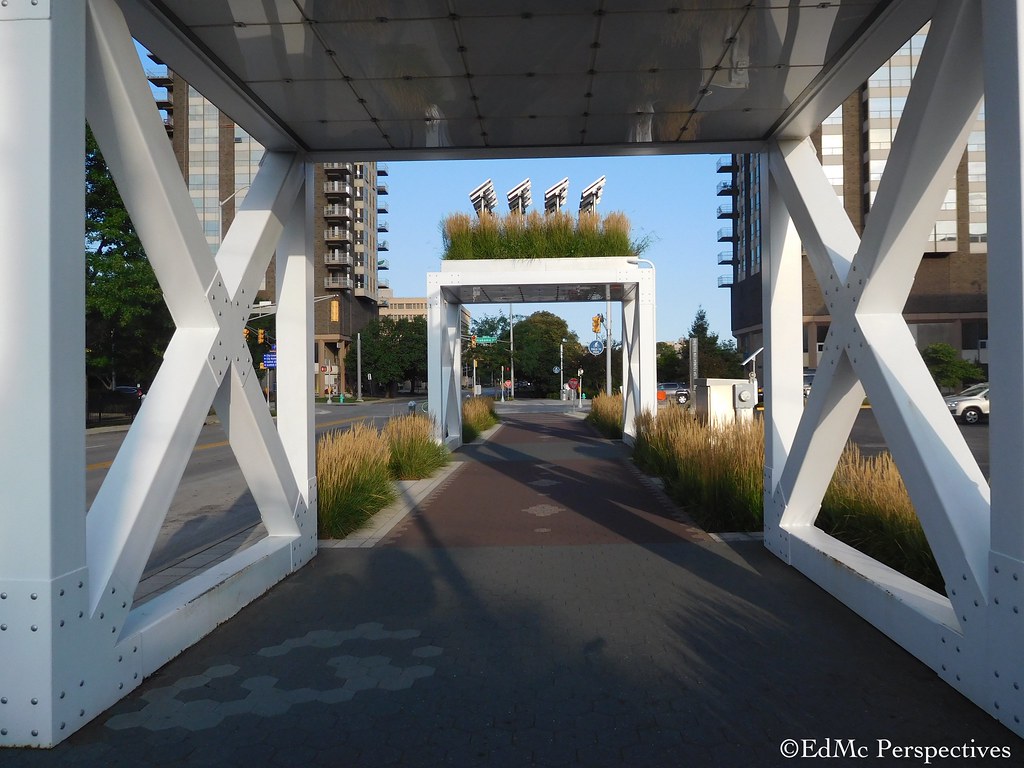
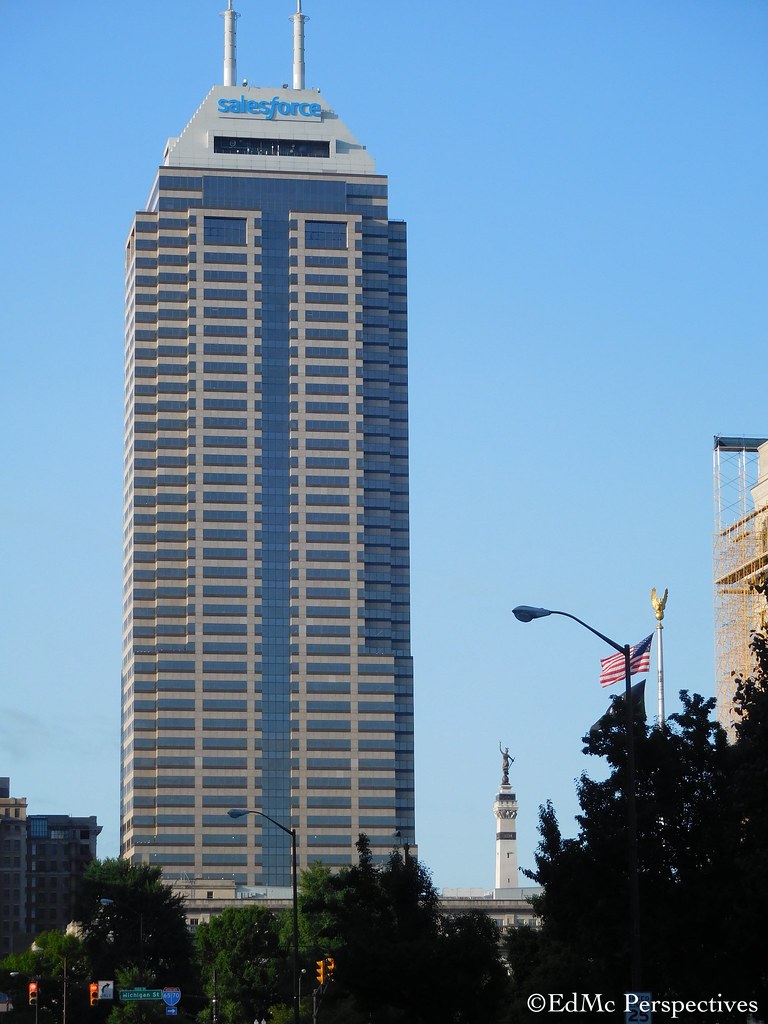
North side of downtown looking south

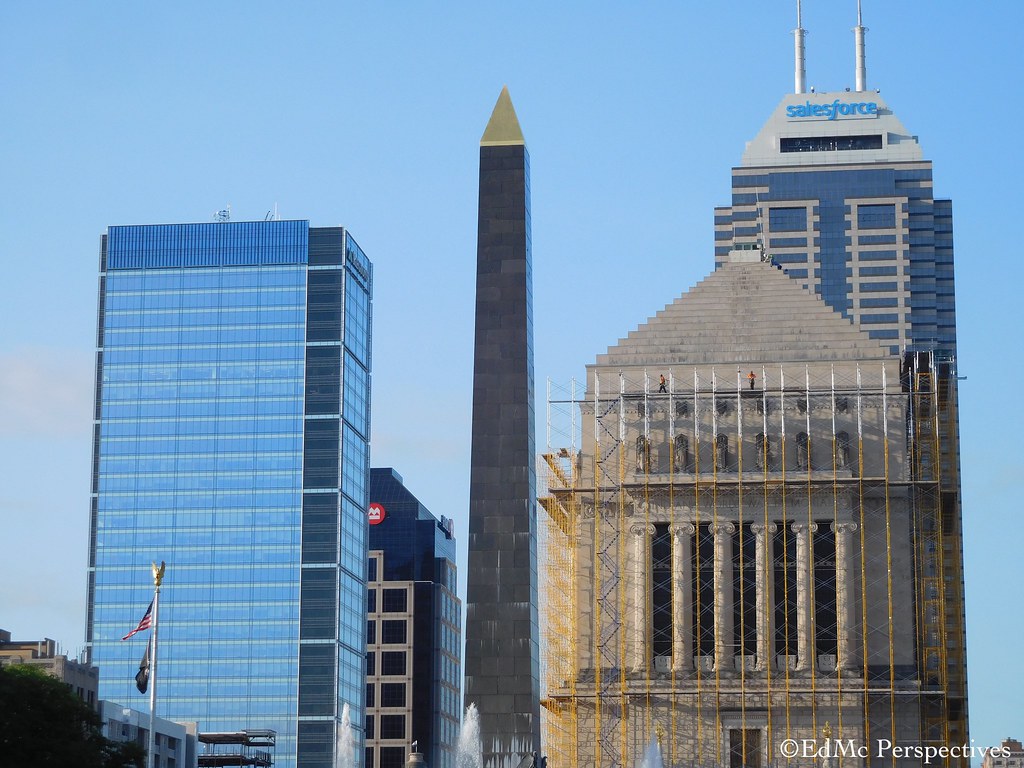
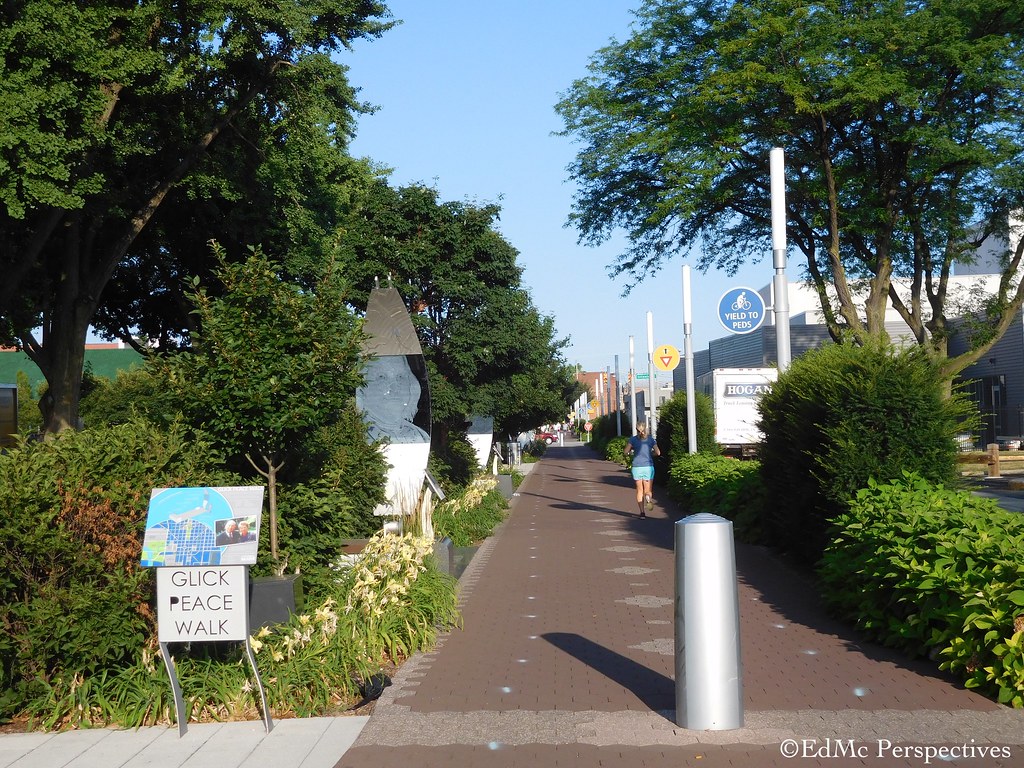
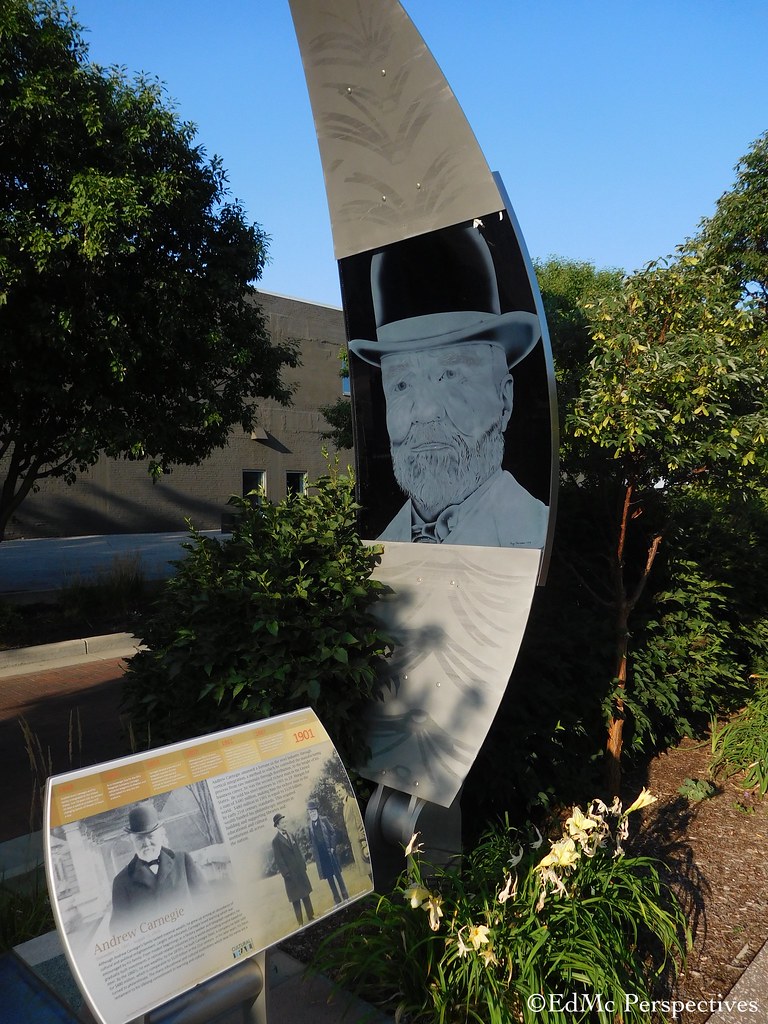
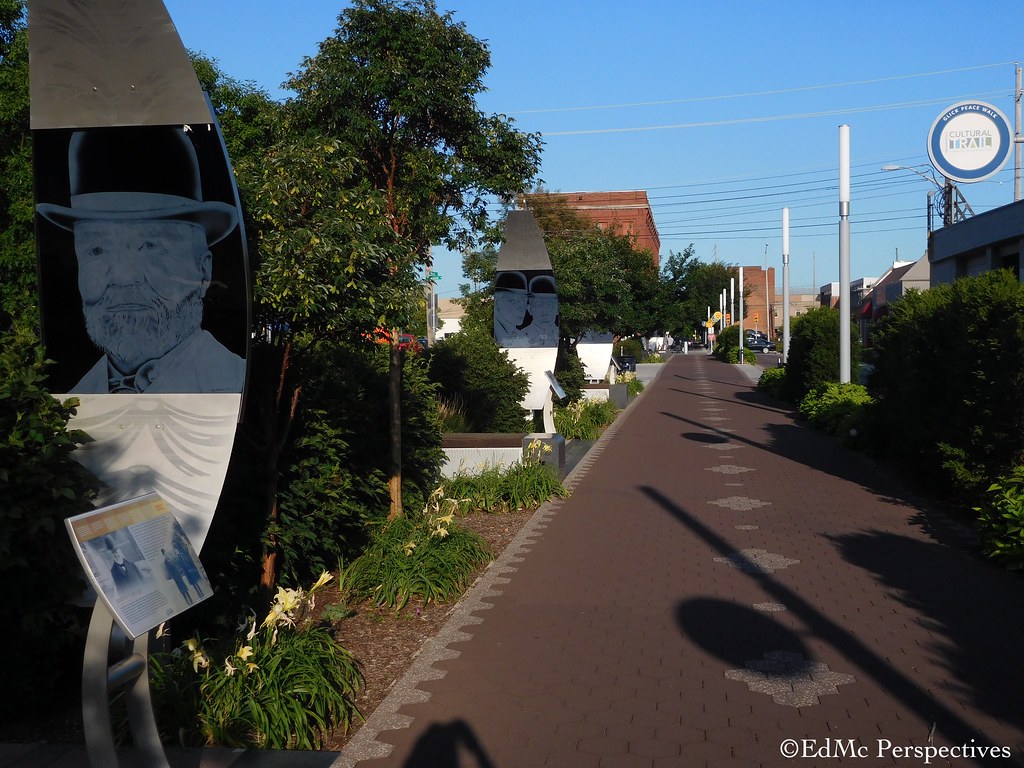
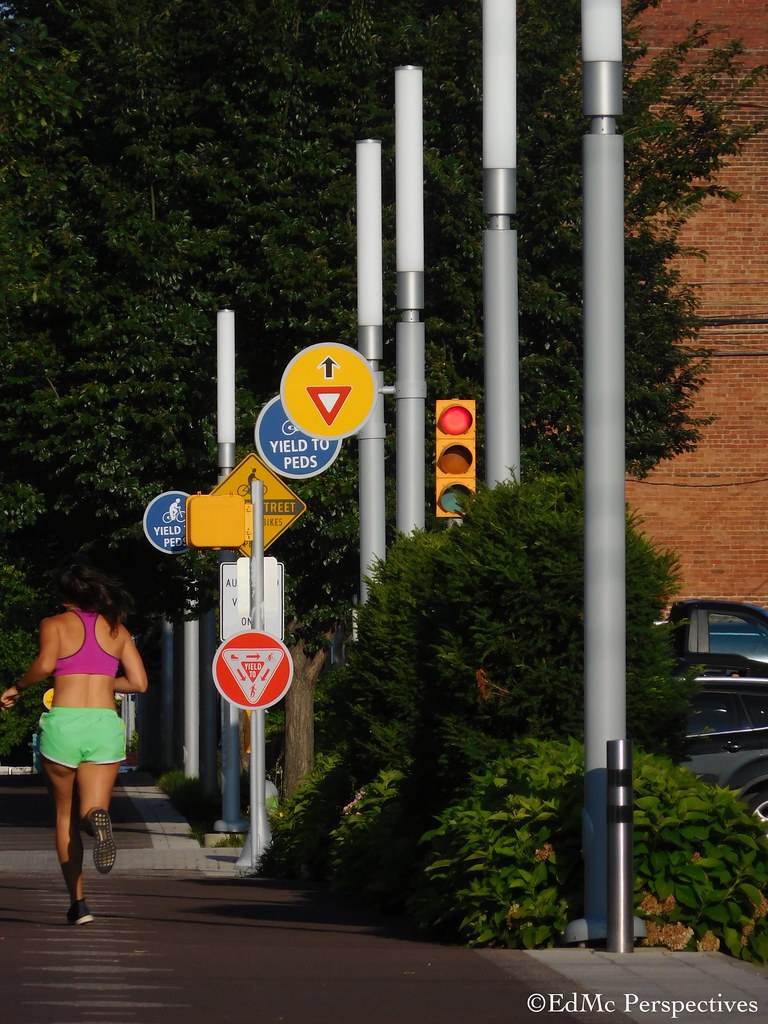
Memorial for the World War II heavy cruiser USS Indianapolis, accessible via a ramp off the Trail.

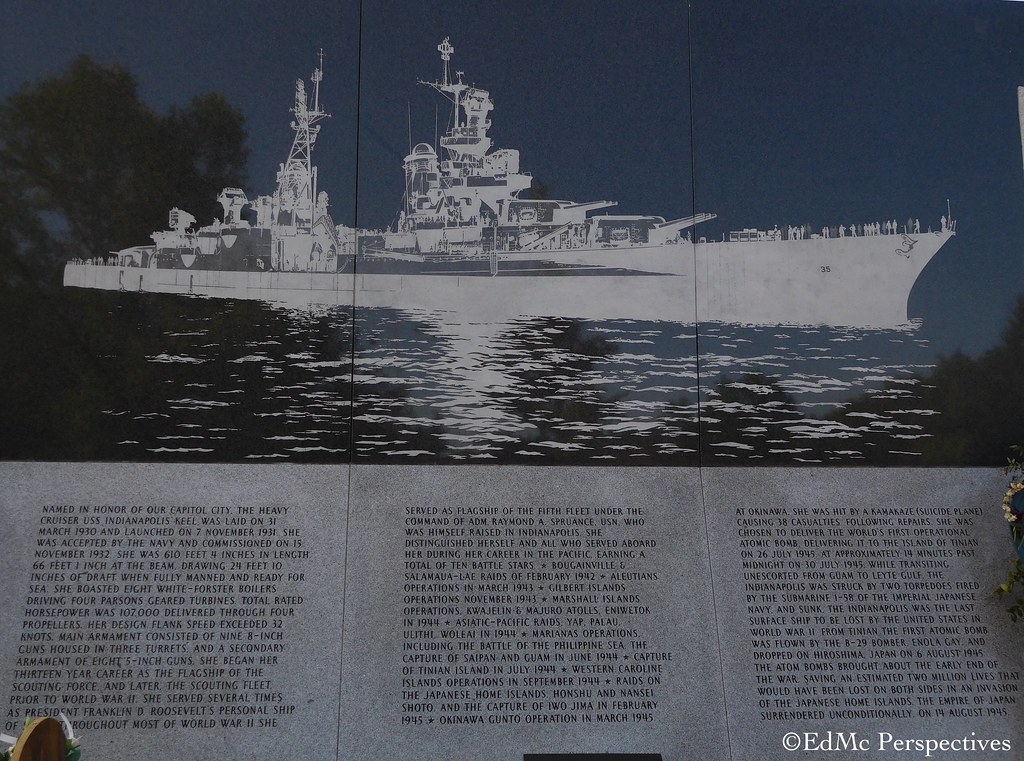
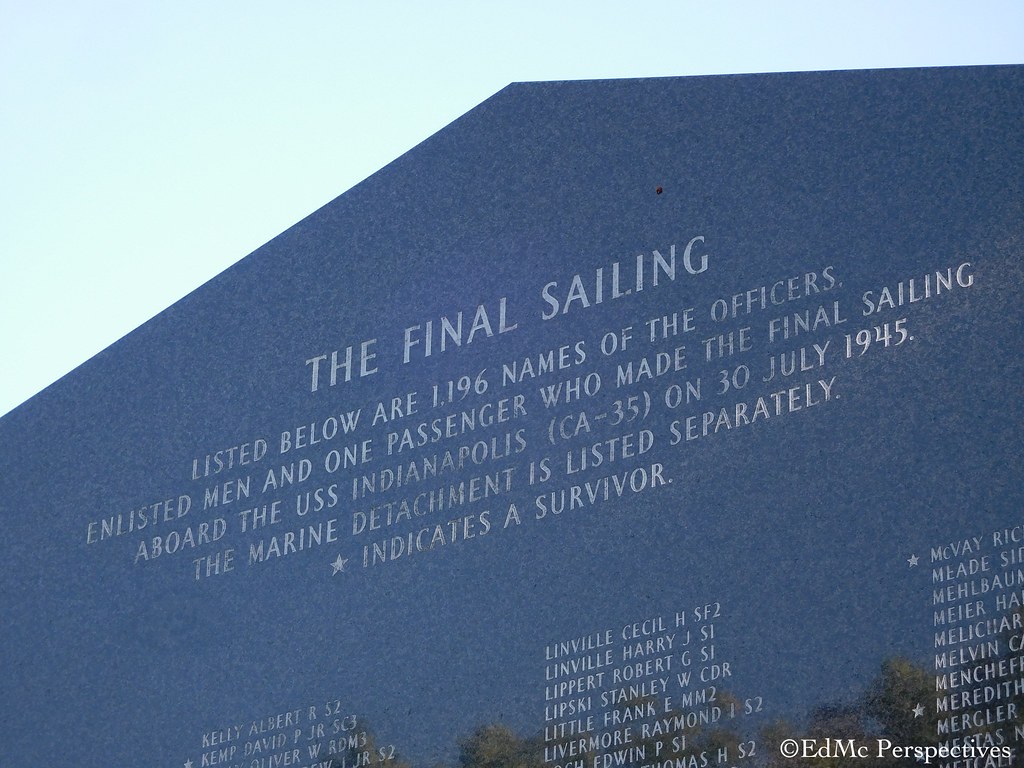
Movie clip of actor Robert Shaw’s monologue describing the USS Indianapolis sinking from the blockbuster 1975 movie, “Jaws”. Some people think that it is the best scene in the movie.
https://m.youtube.com/watch?v=u9S41Kplsbs
The date mentioned of the ship sinking is one day off and the number of men onboard is 1196 according to the memorial, not 1100 as spoken in the movie. The tour guide for the Indianapolis Speedway tour said that 17 survivors were alive as of July 27, 2018. They have a yearly reunion at the Memorial Day race.
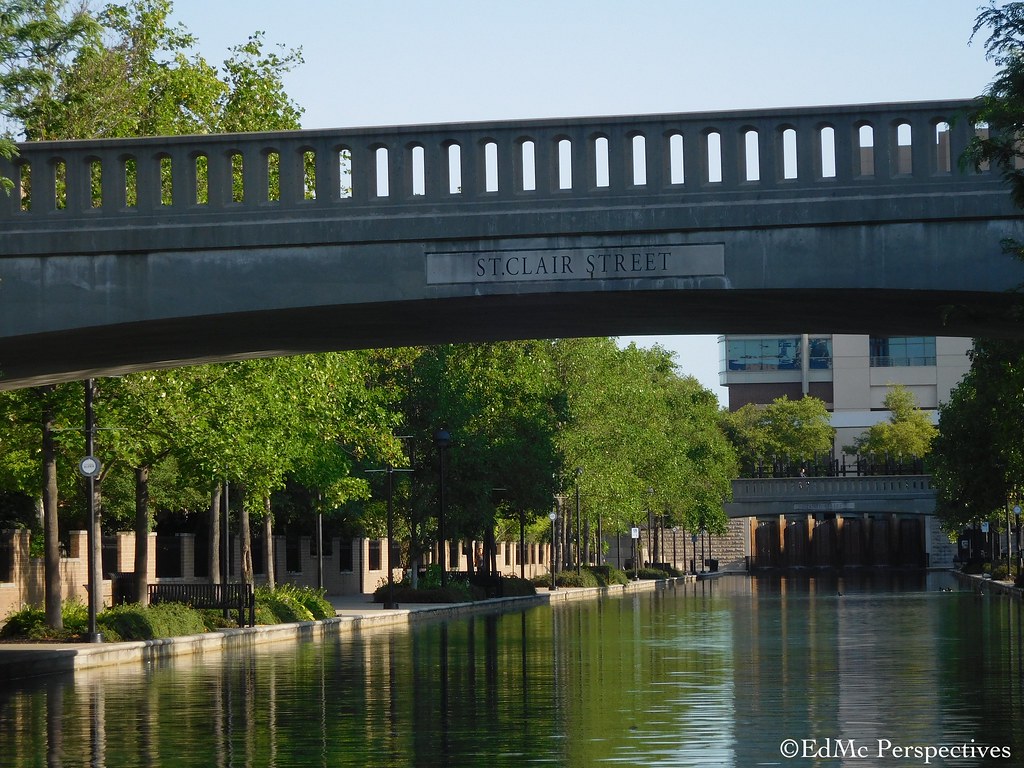
Trail passes over canal
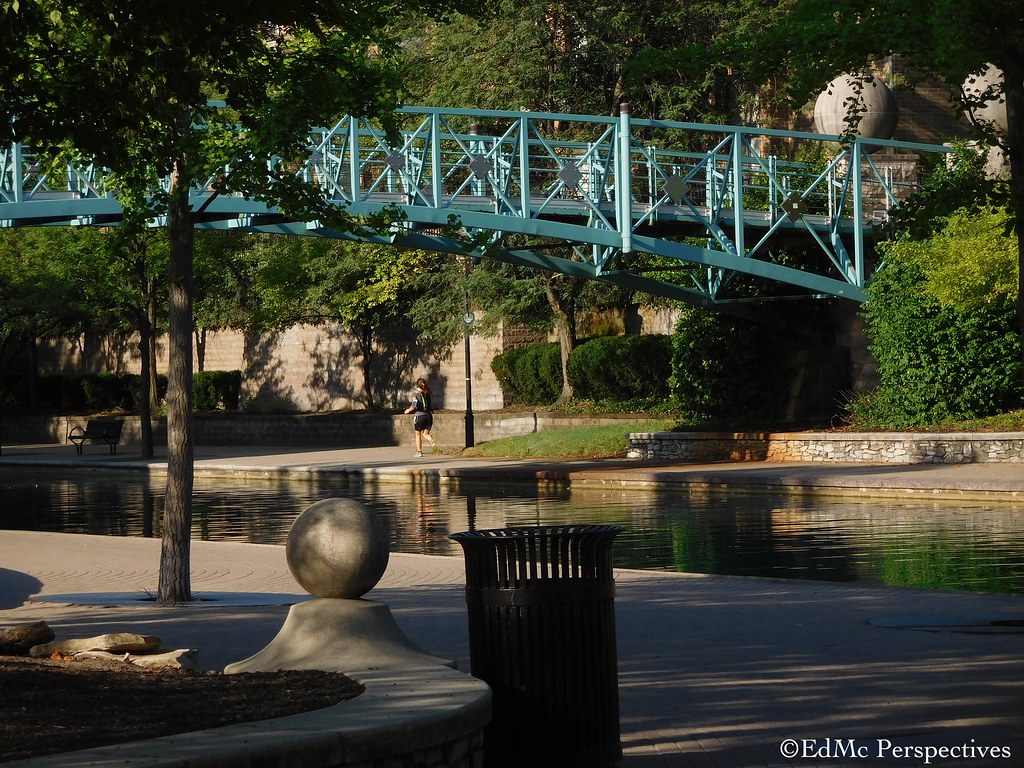
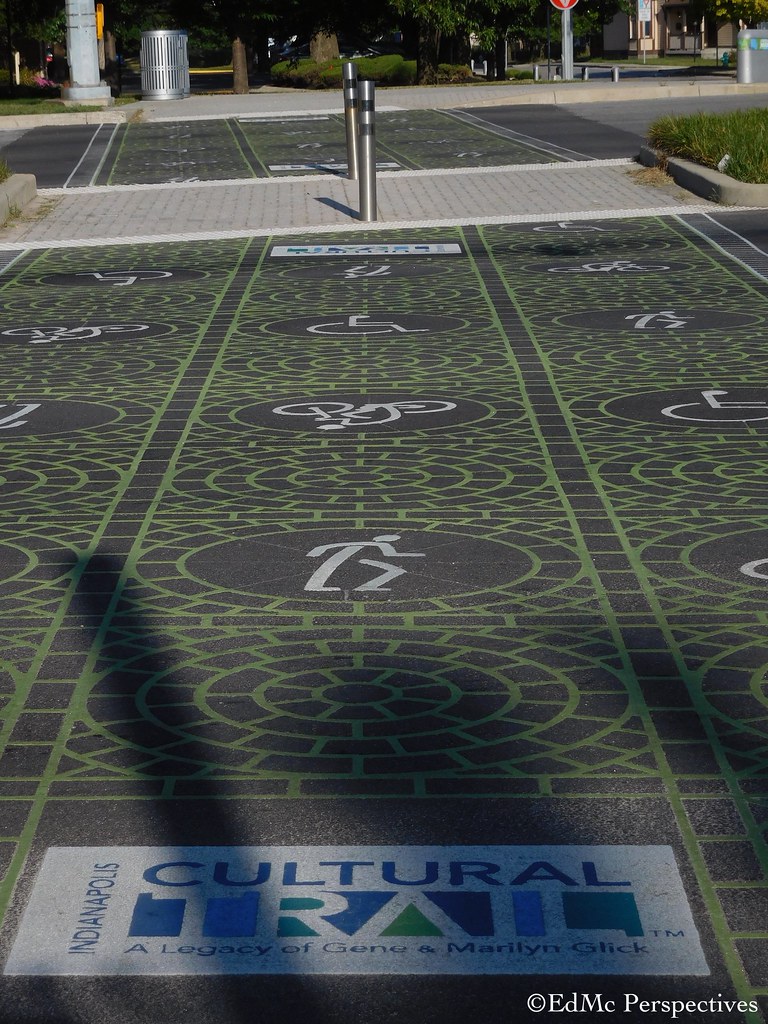
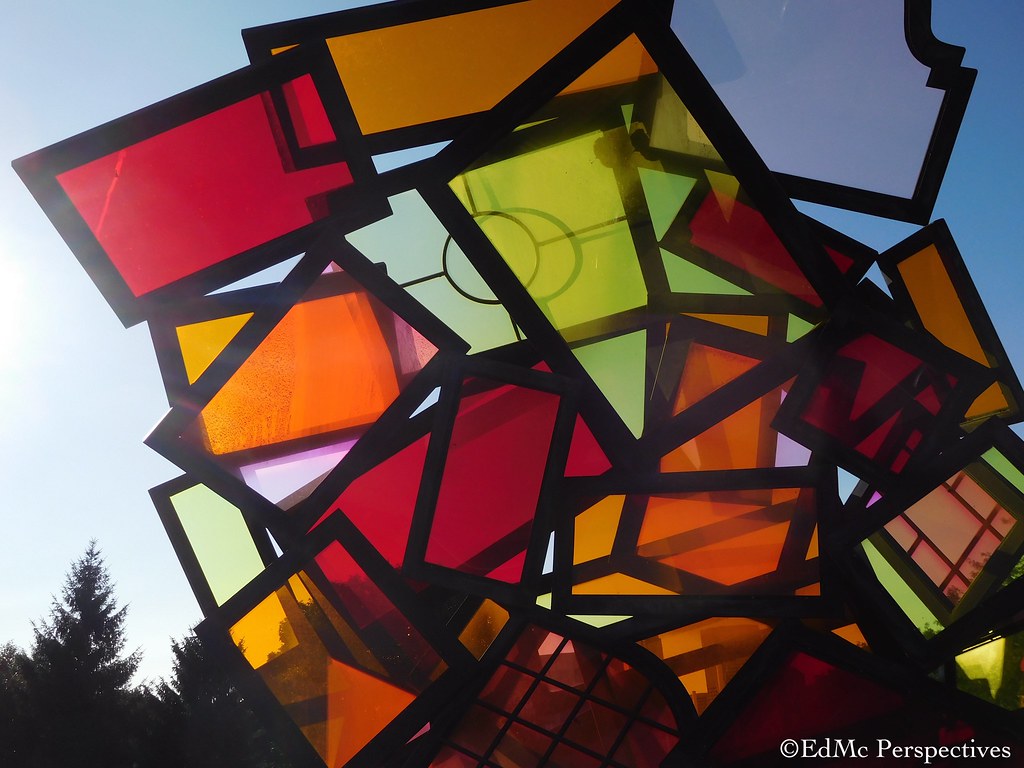
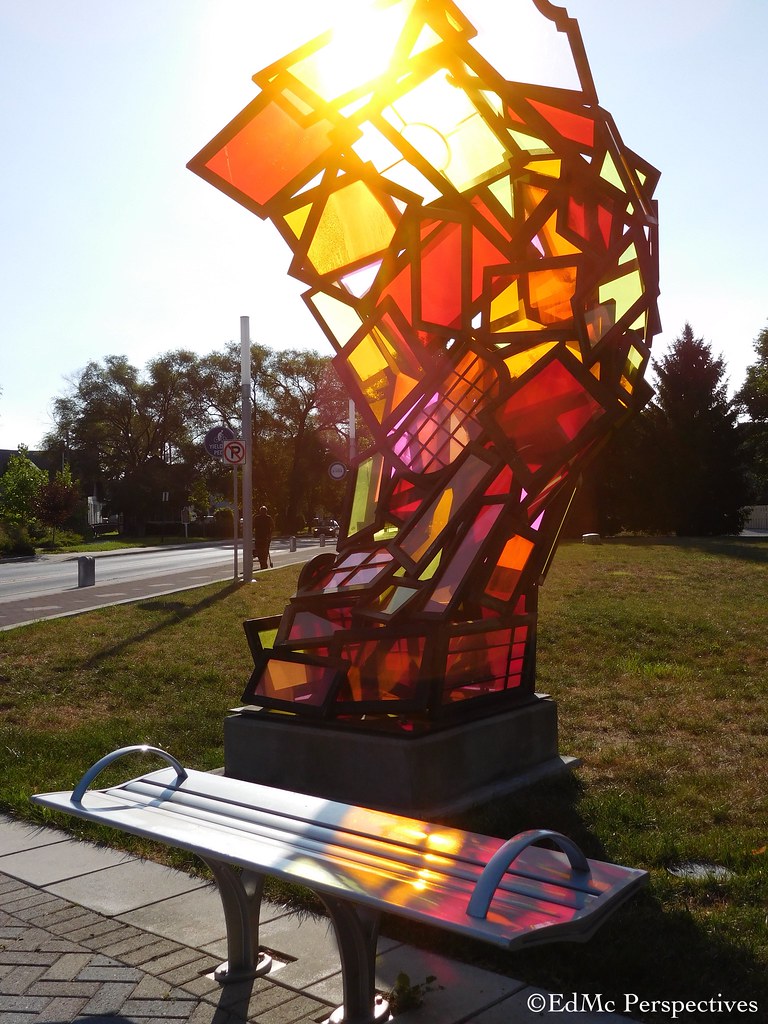
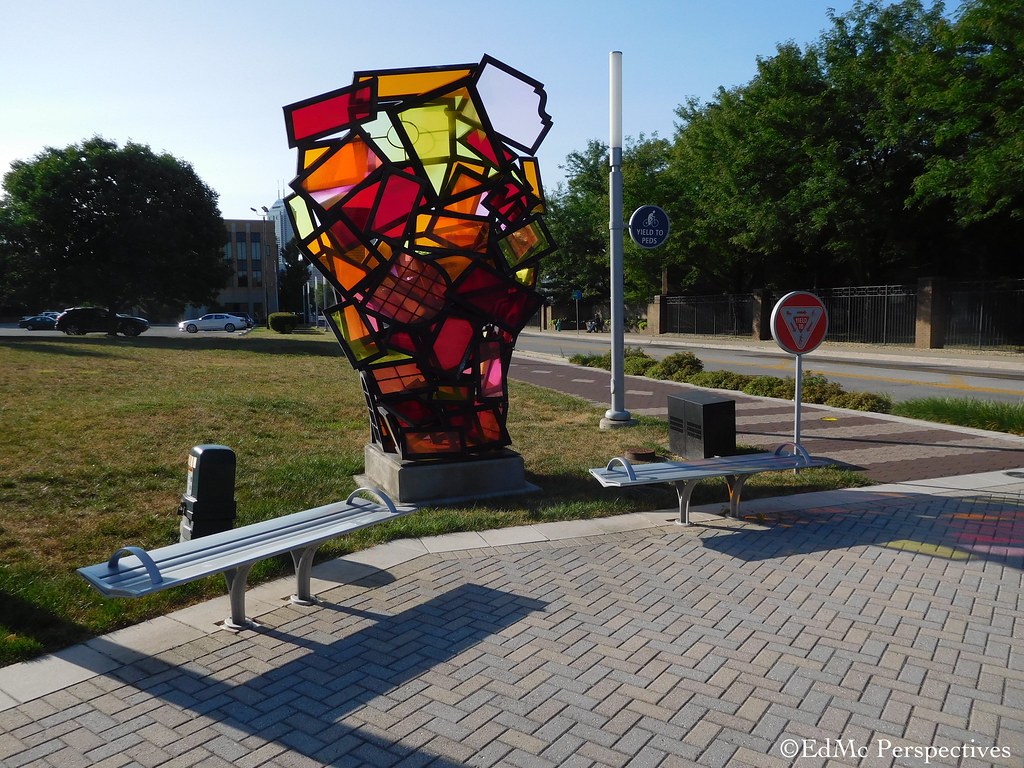
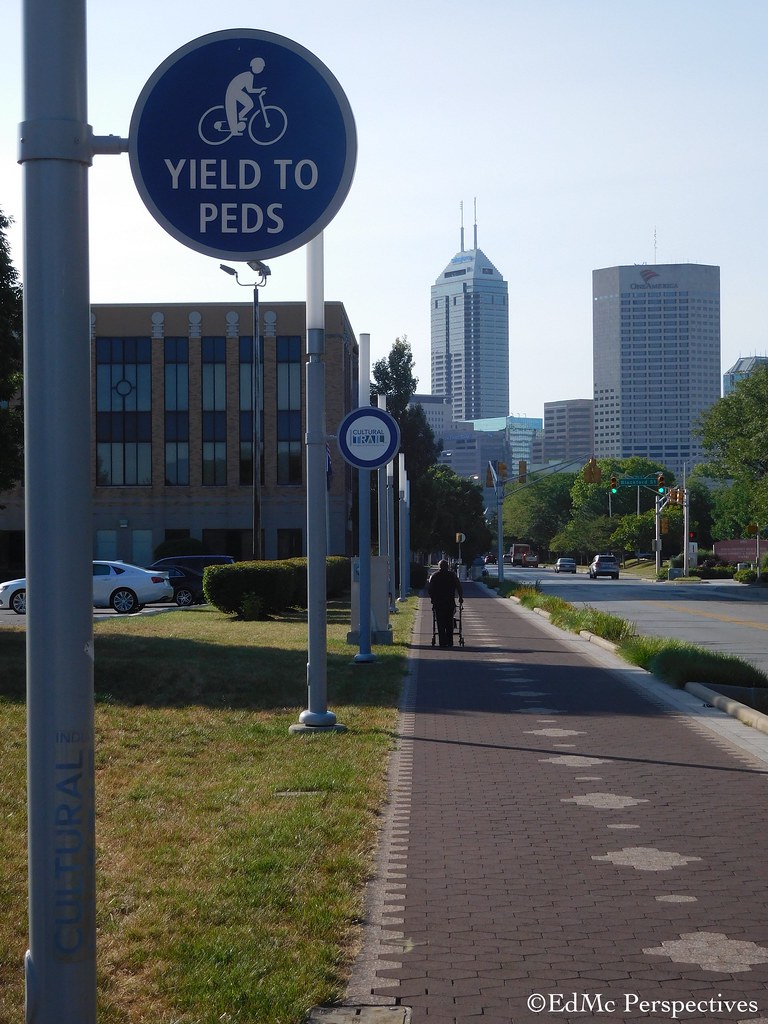
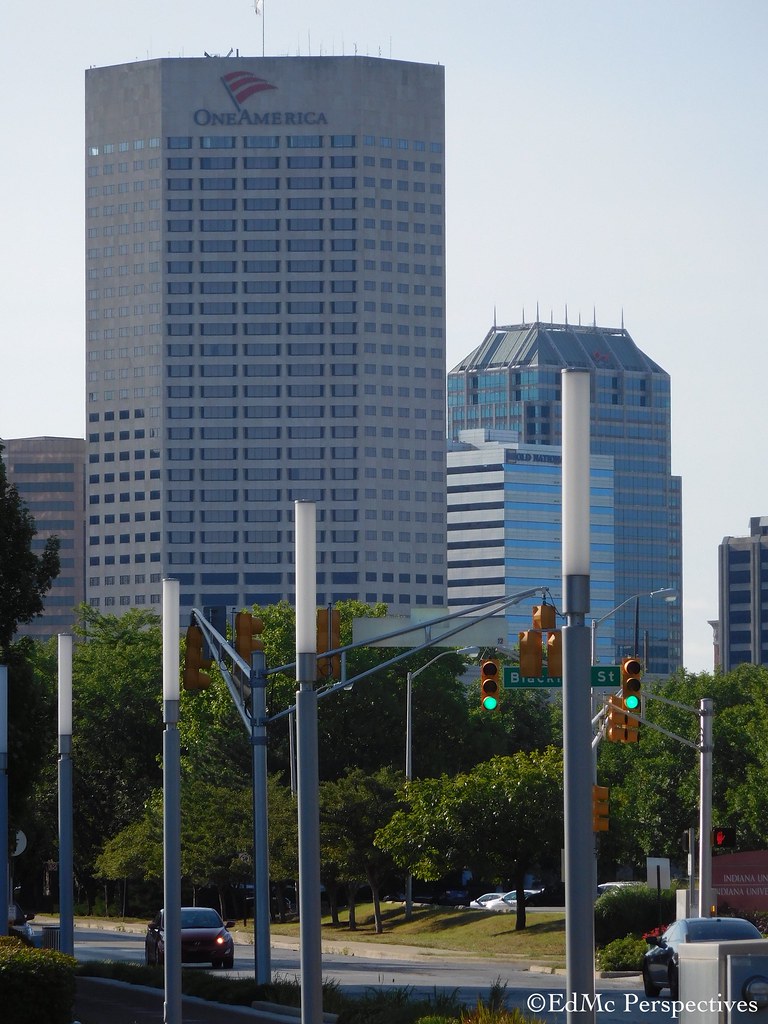
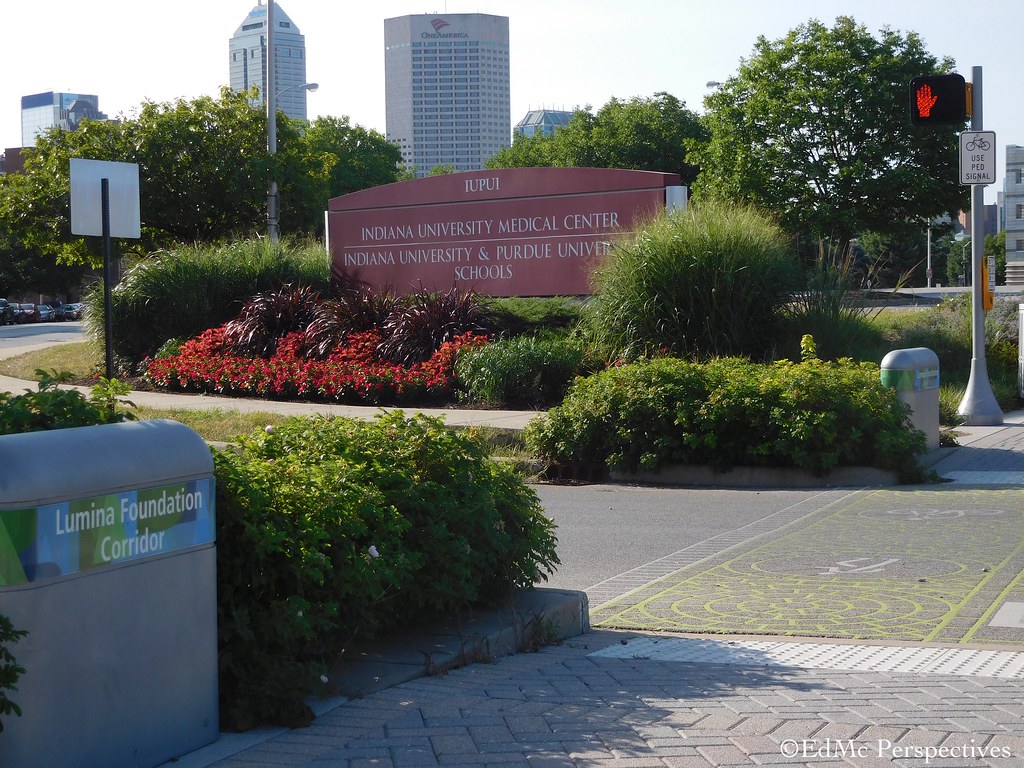
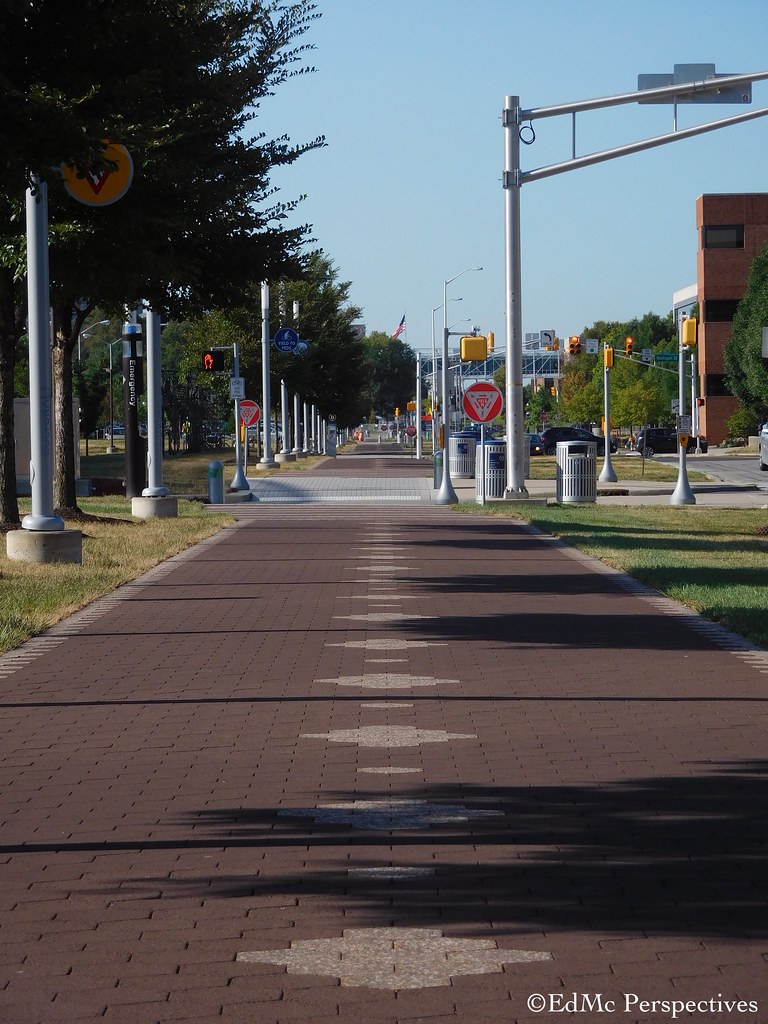
Pacers Bikeshare
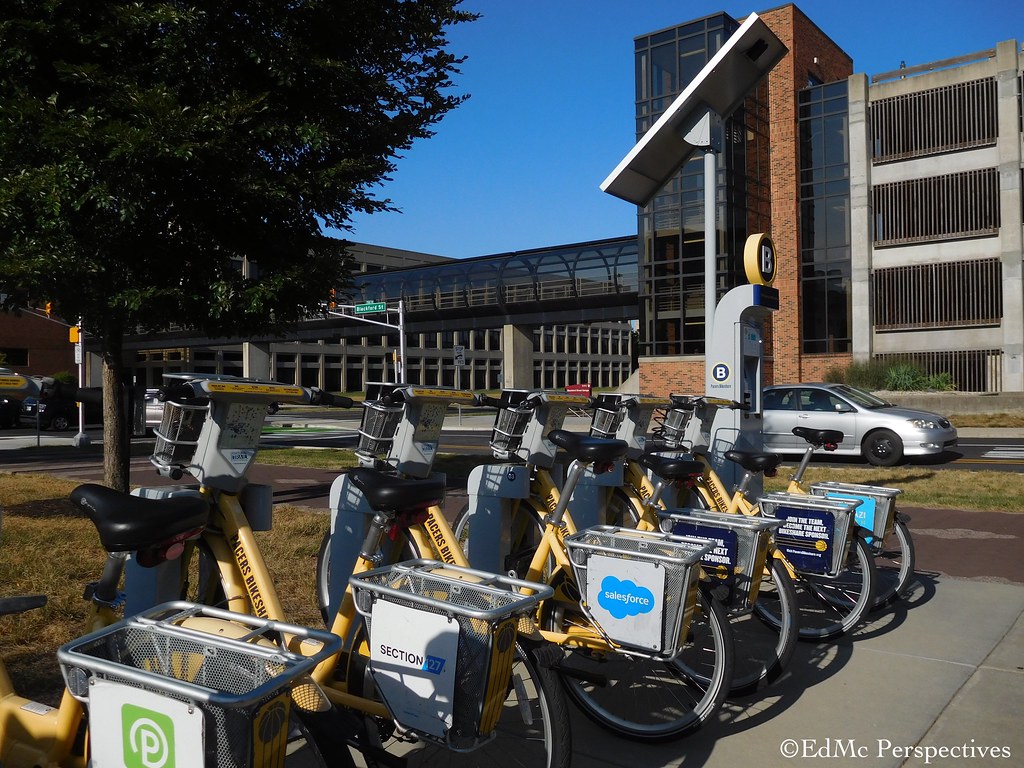
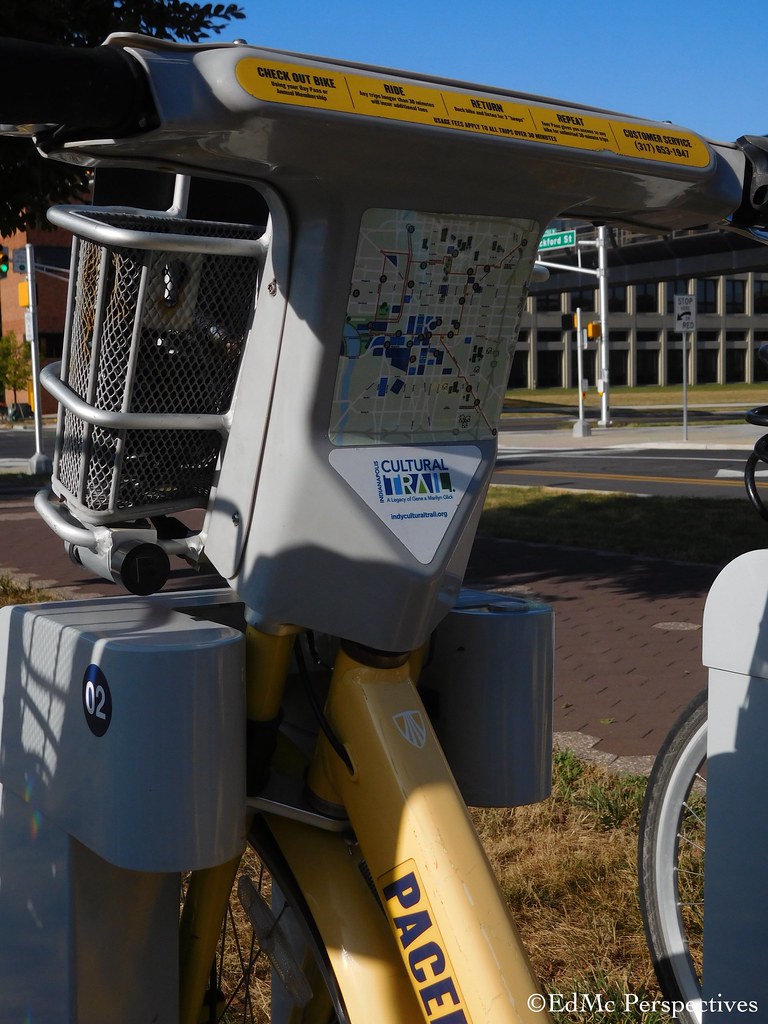
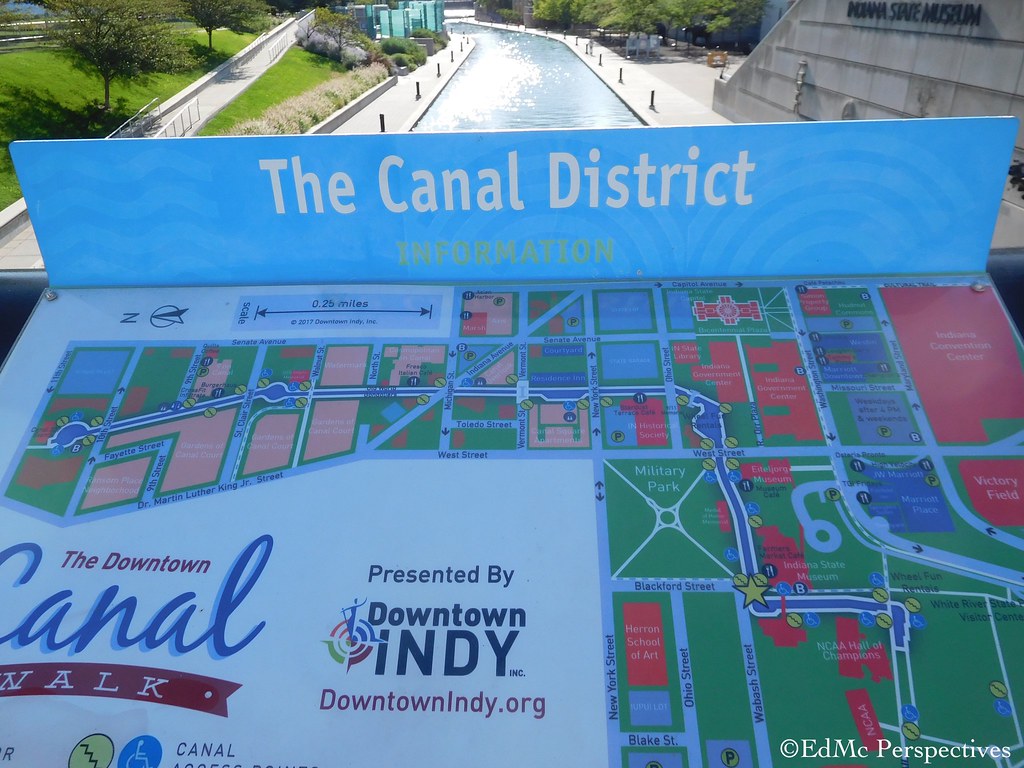
The Downtown Canal Walk is a 3-mile loop.
West side of downtown looking east
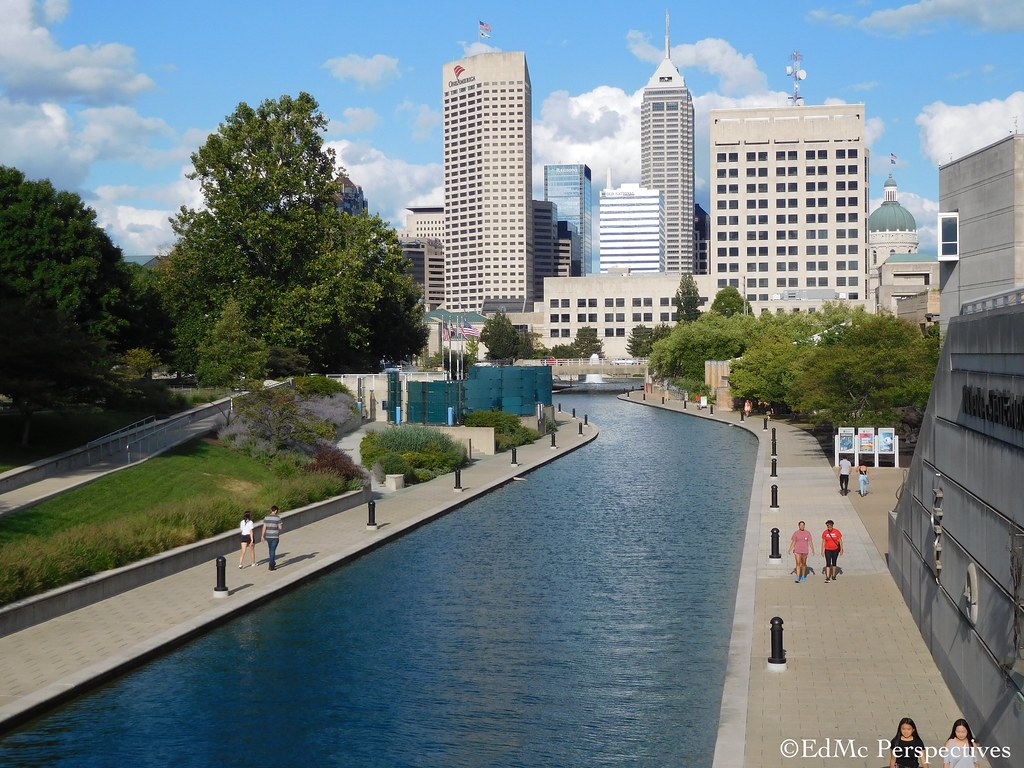
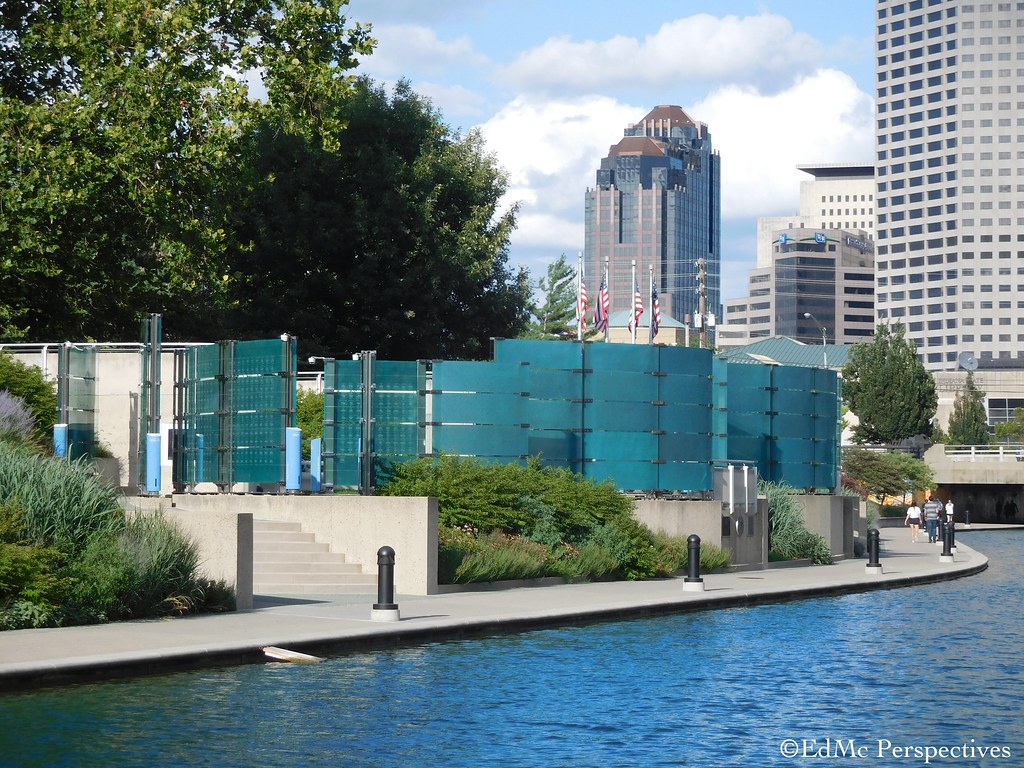
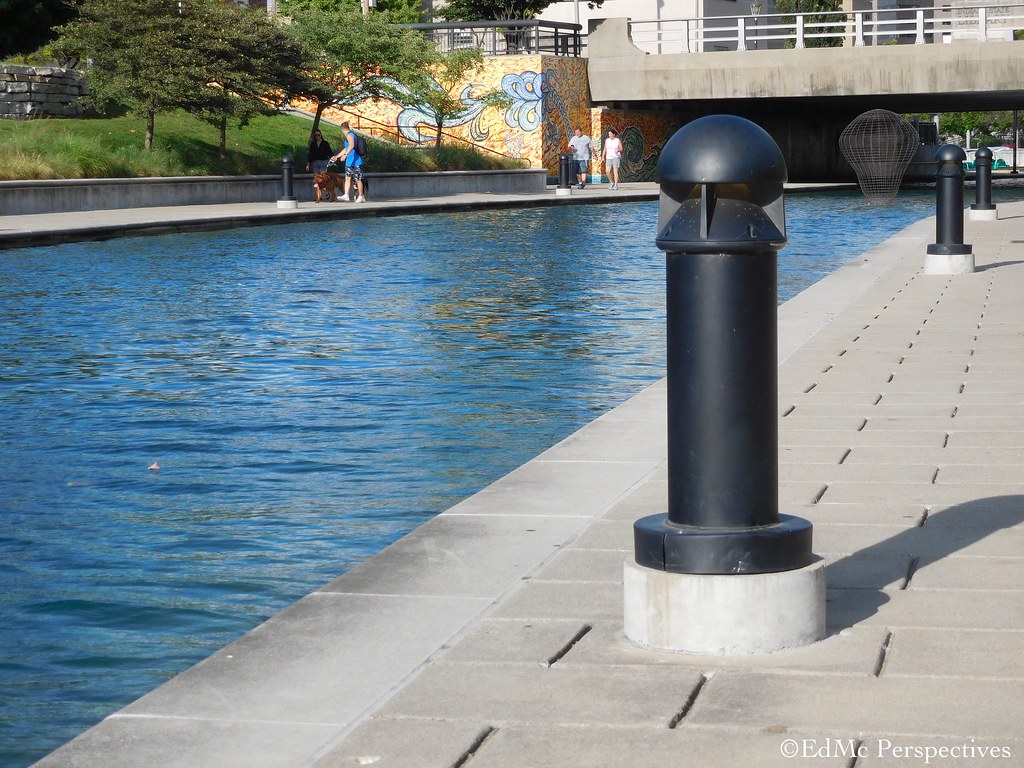
This part of The Canal Walk is a couple of blocks from the Trail

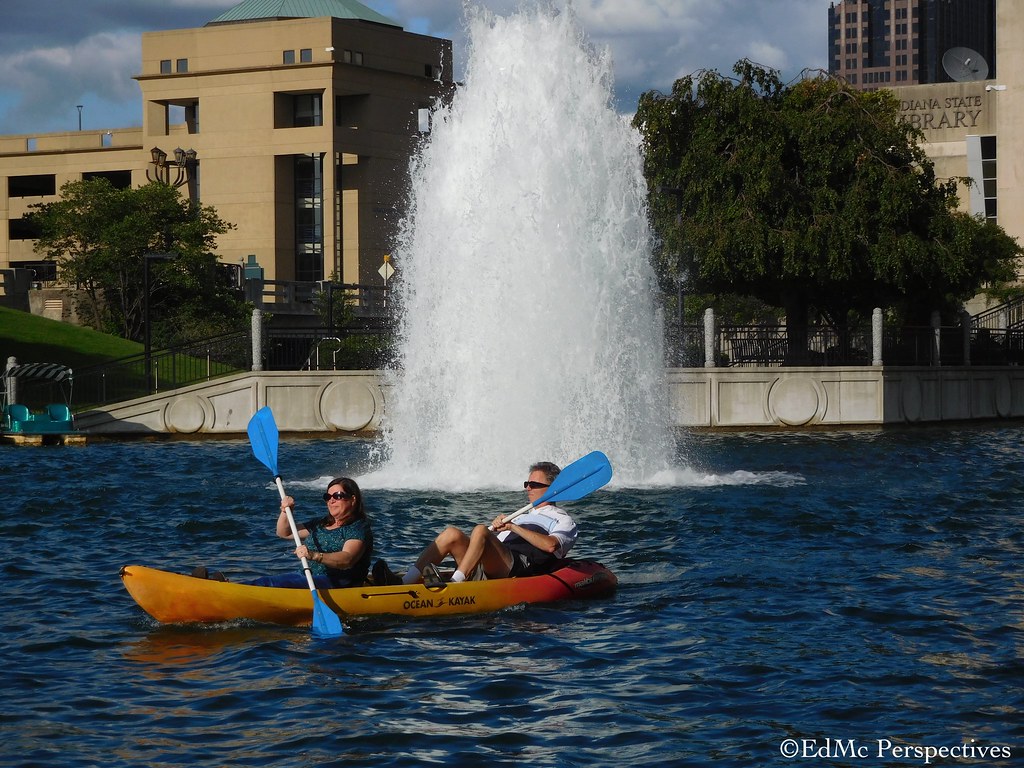
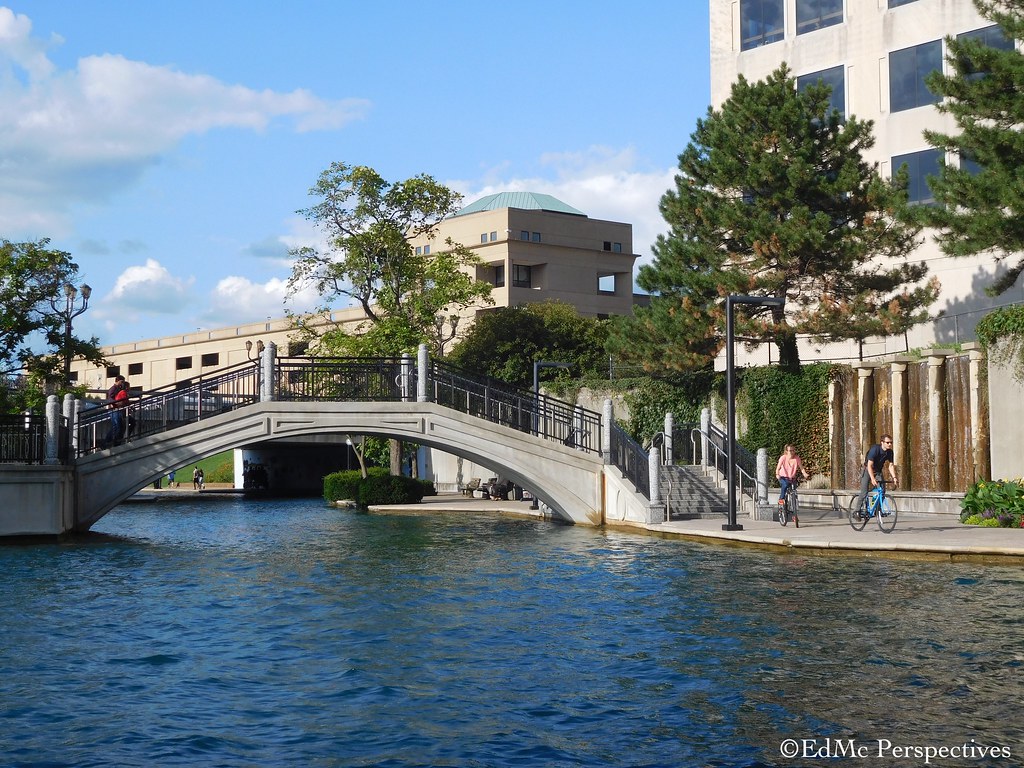
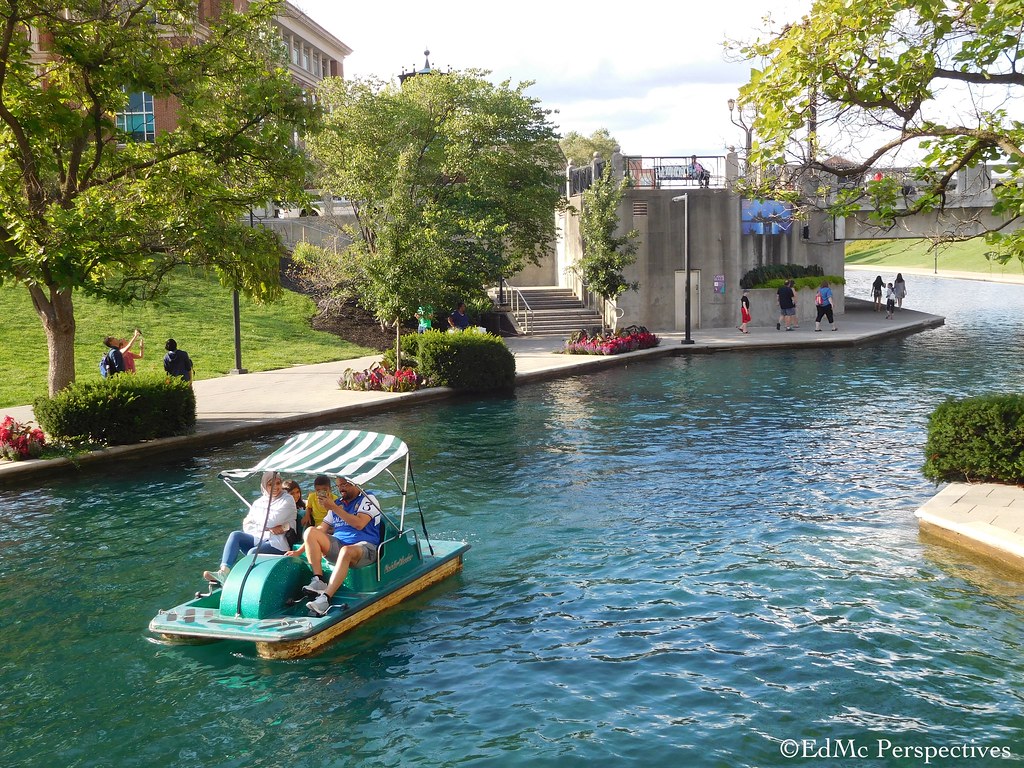

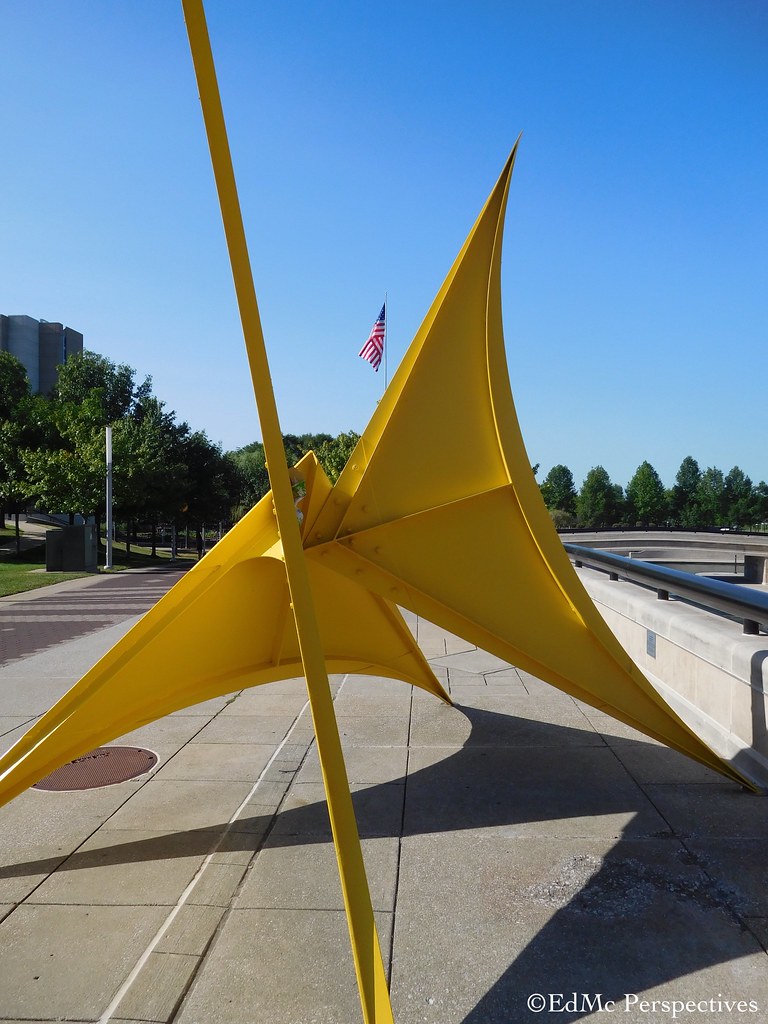
This walkway connects the Cultural Trail to the east side of the White River Trail
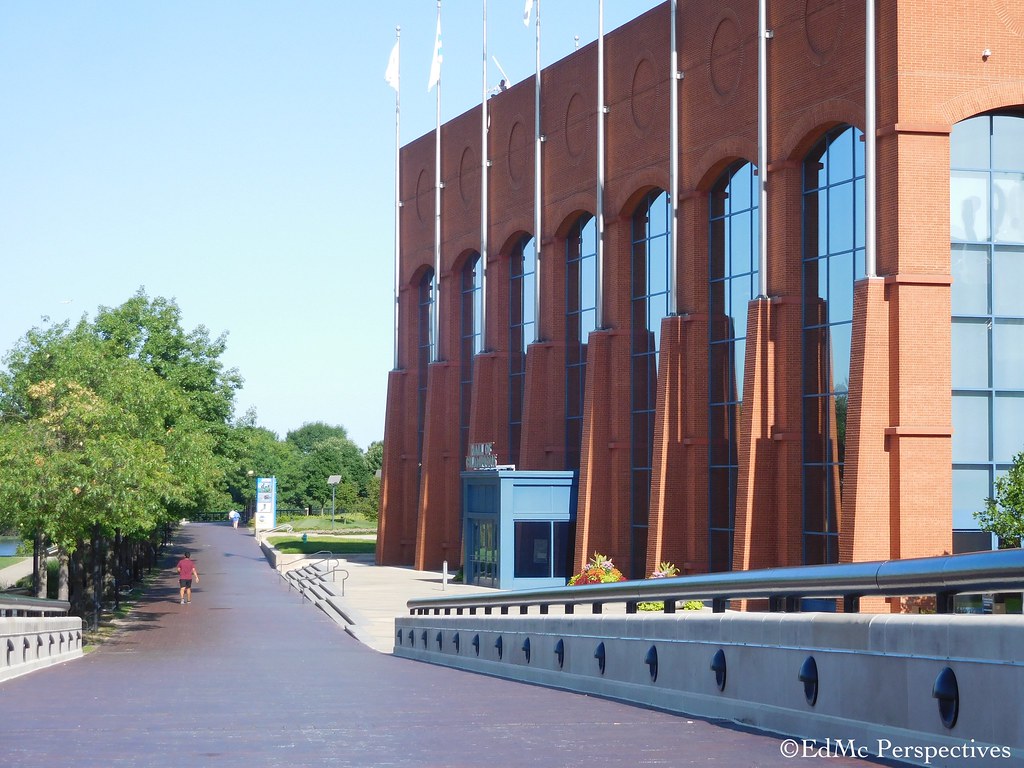
The art installations make the trail more interesting
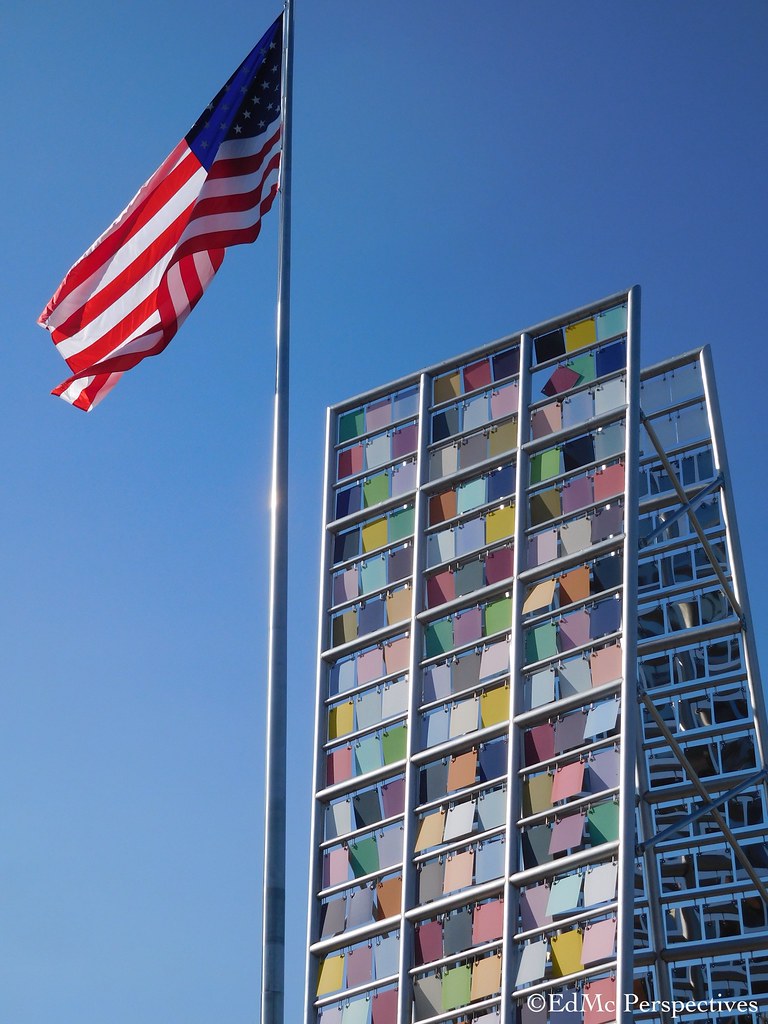

A short piece of the Cultural Trail runs through White River State Park
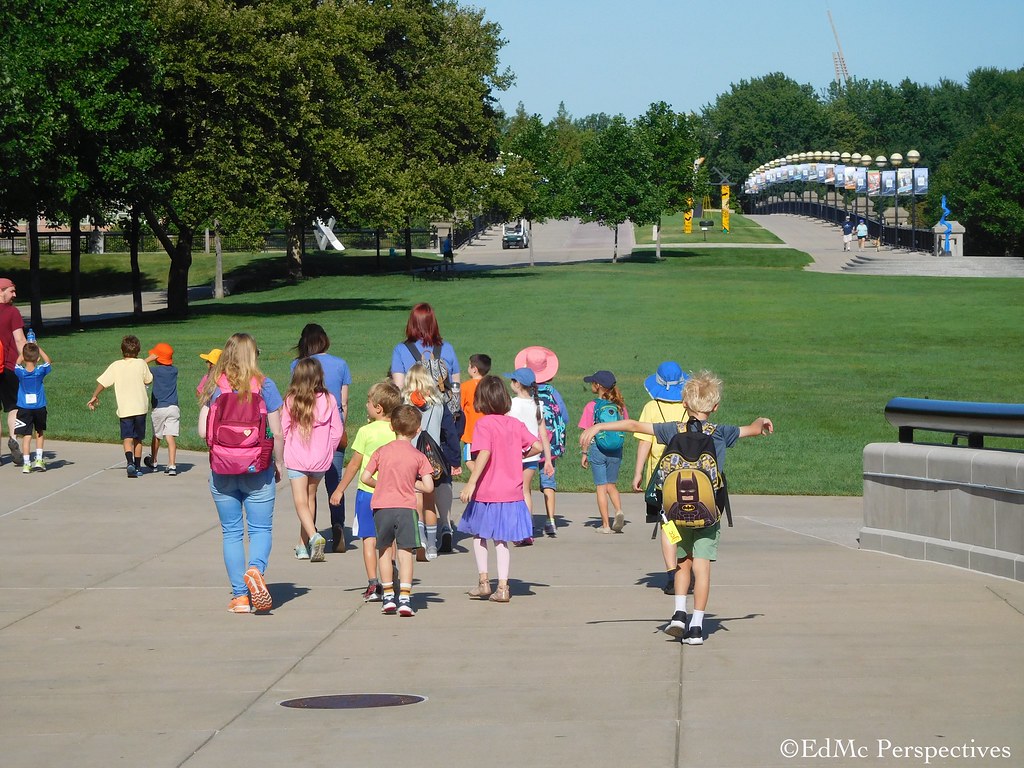
The Cultural Trail connects with the west side of the White River Trail and the Indianapolis Zoo over this bridge.
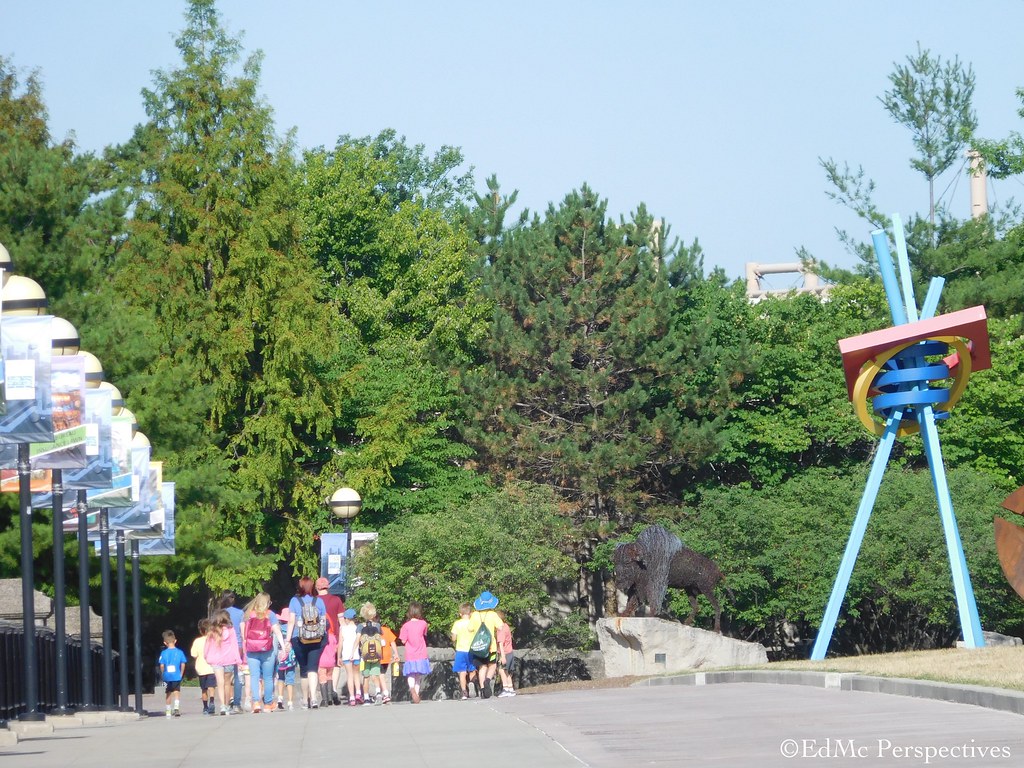
White River, there is a bike trail on each side.
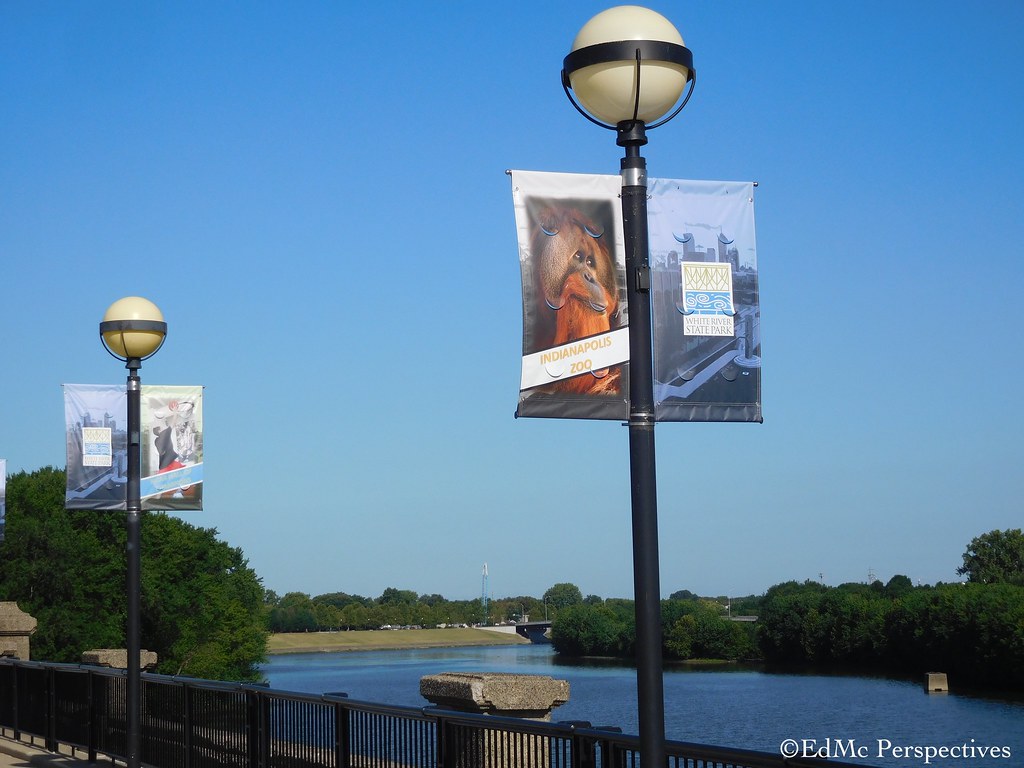

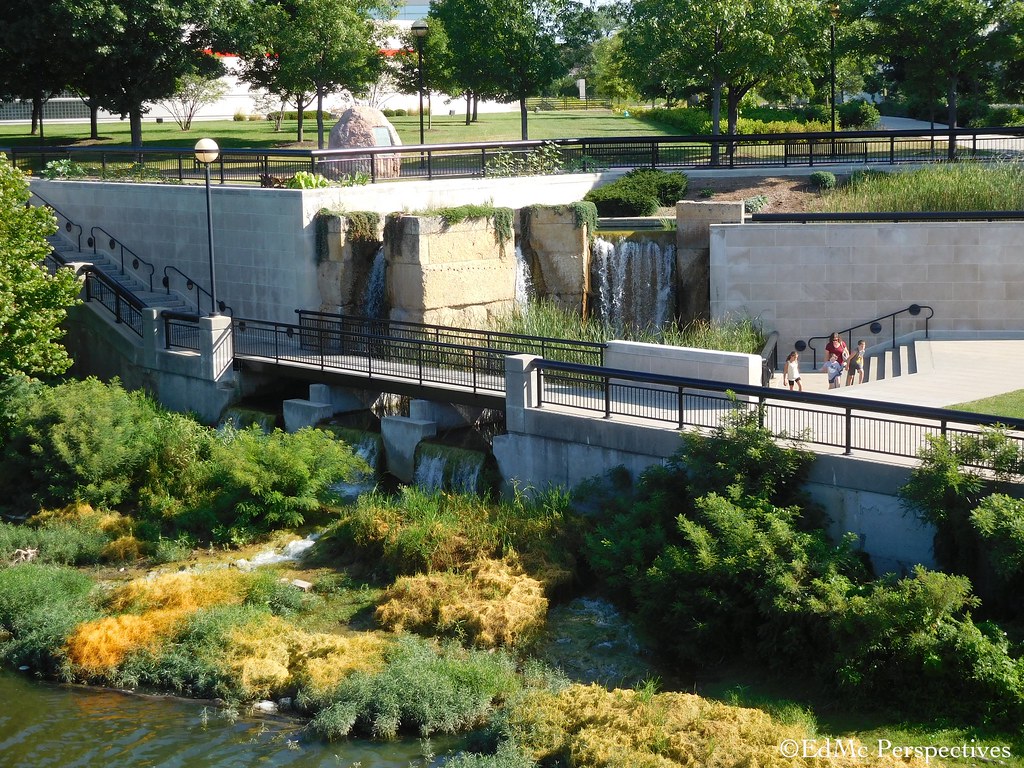
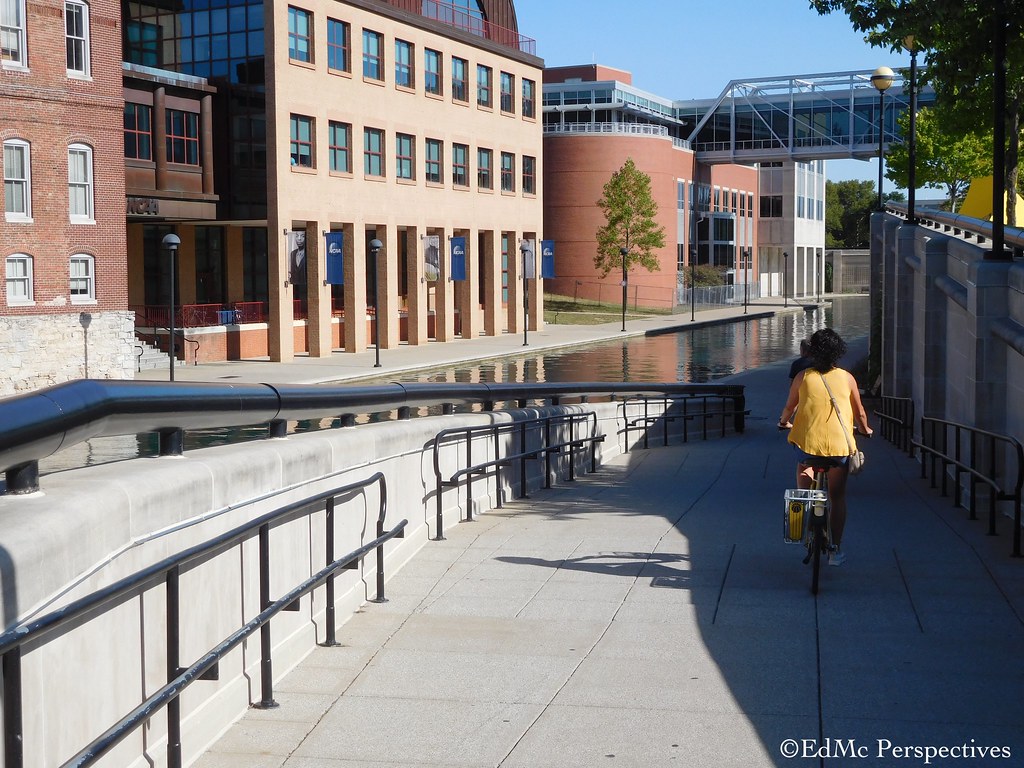
Looking back at White River State Park
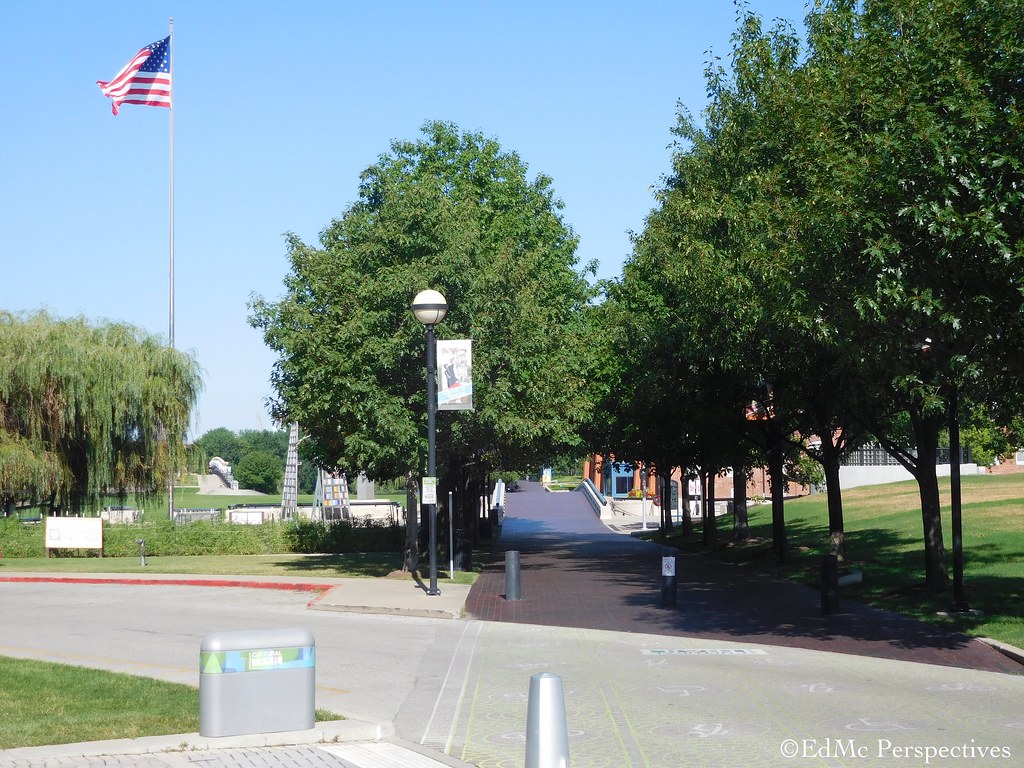
South side of the trail looking north, have looped around downtown
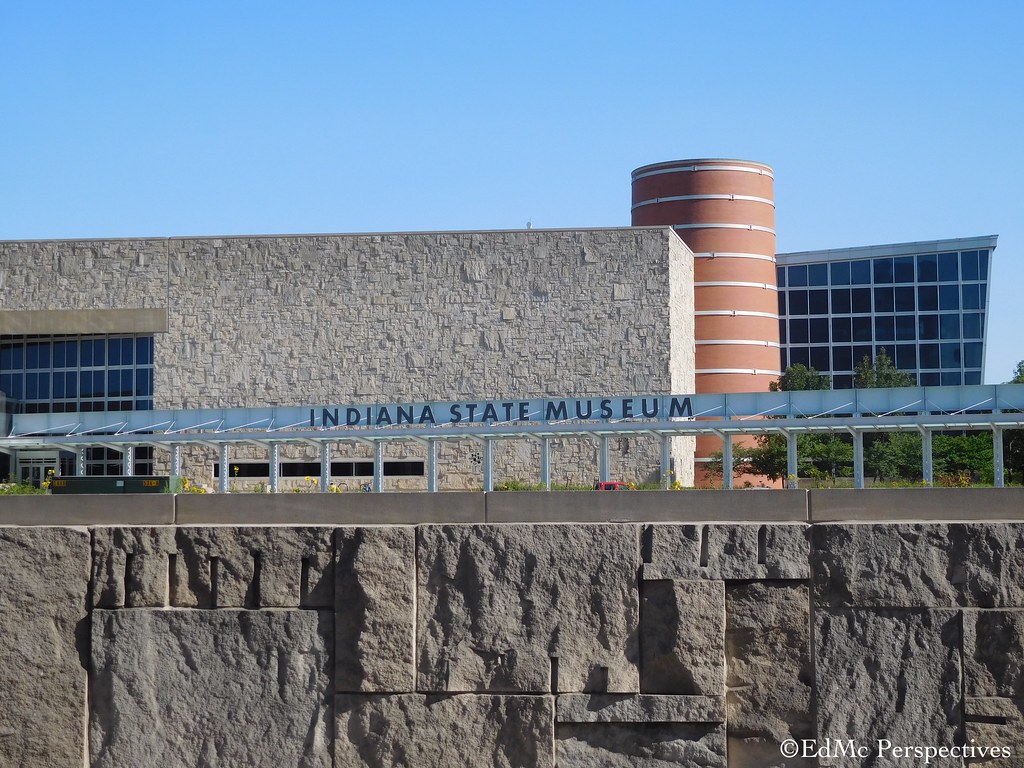
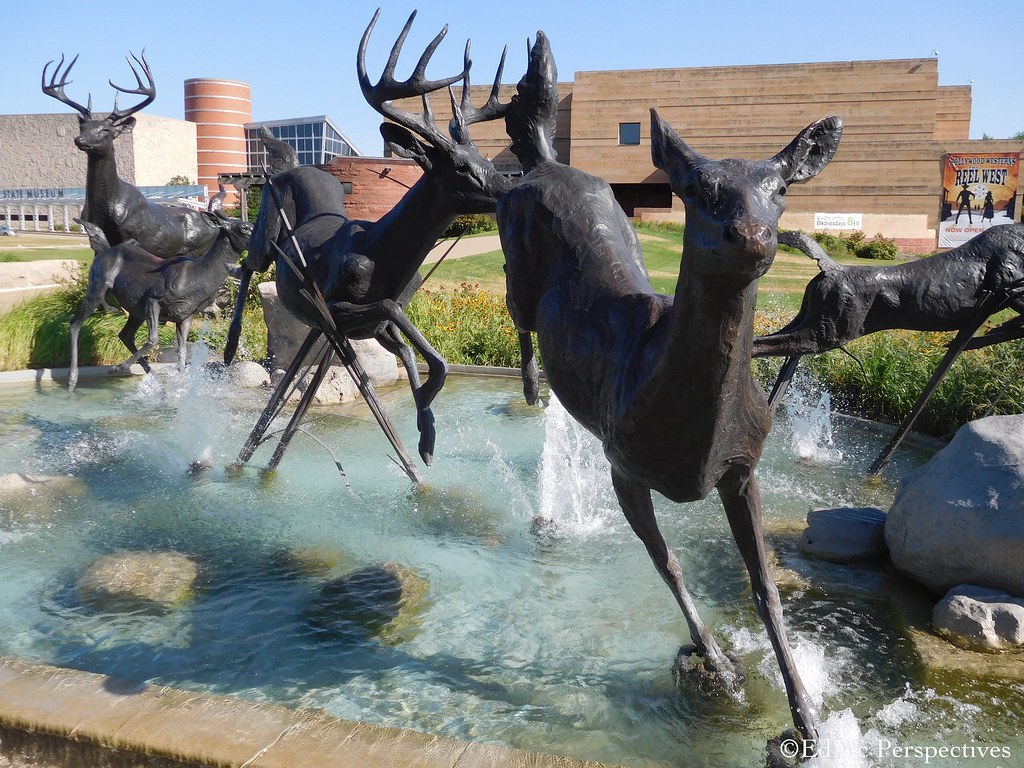
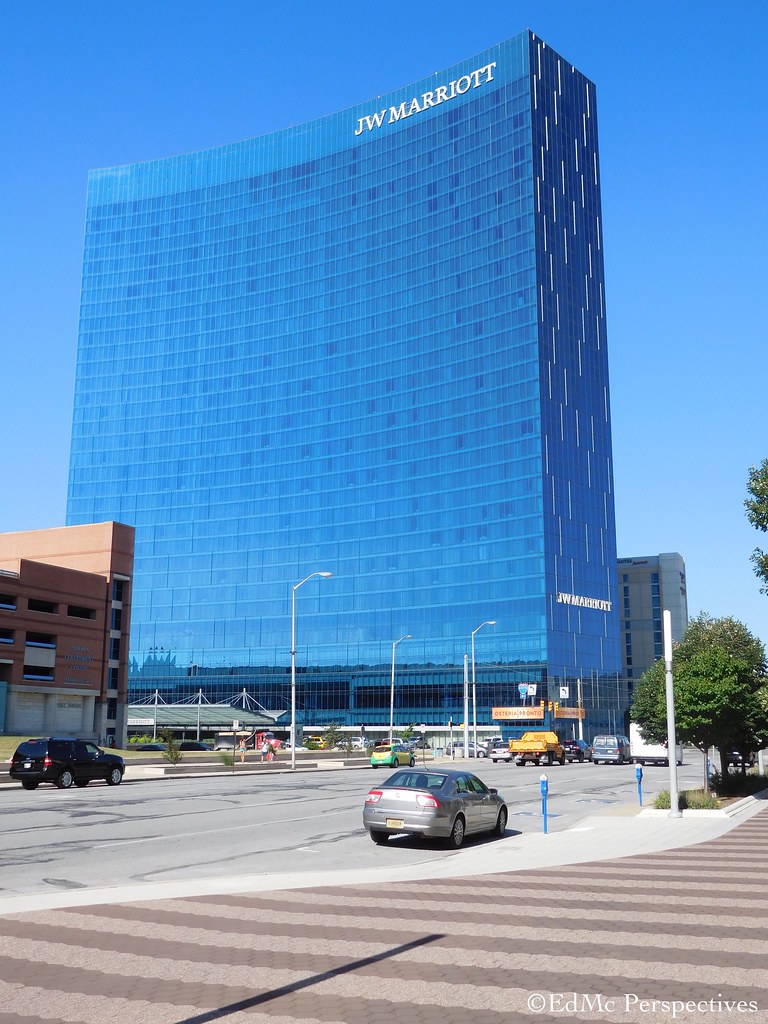
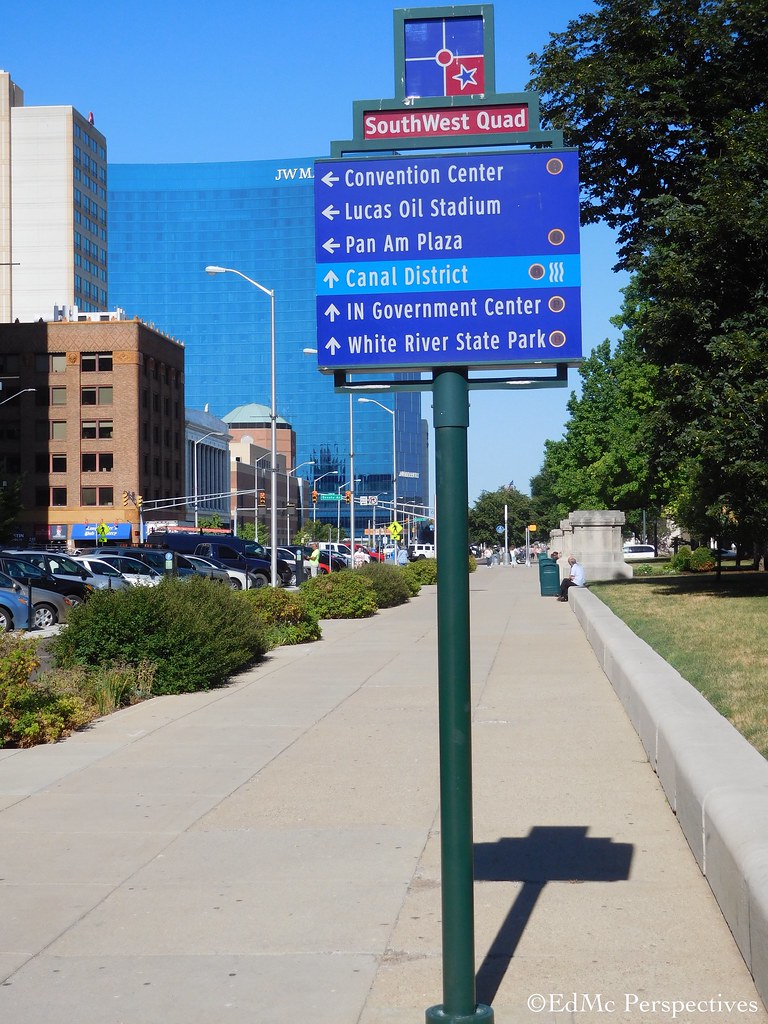
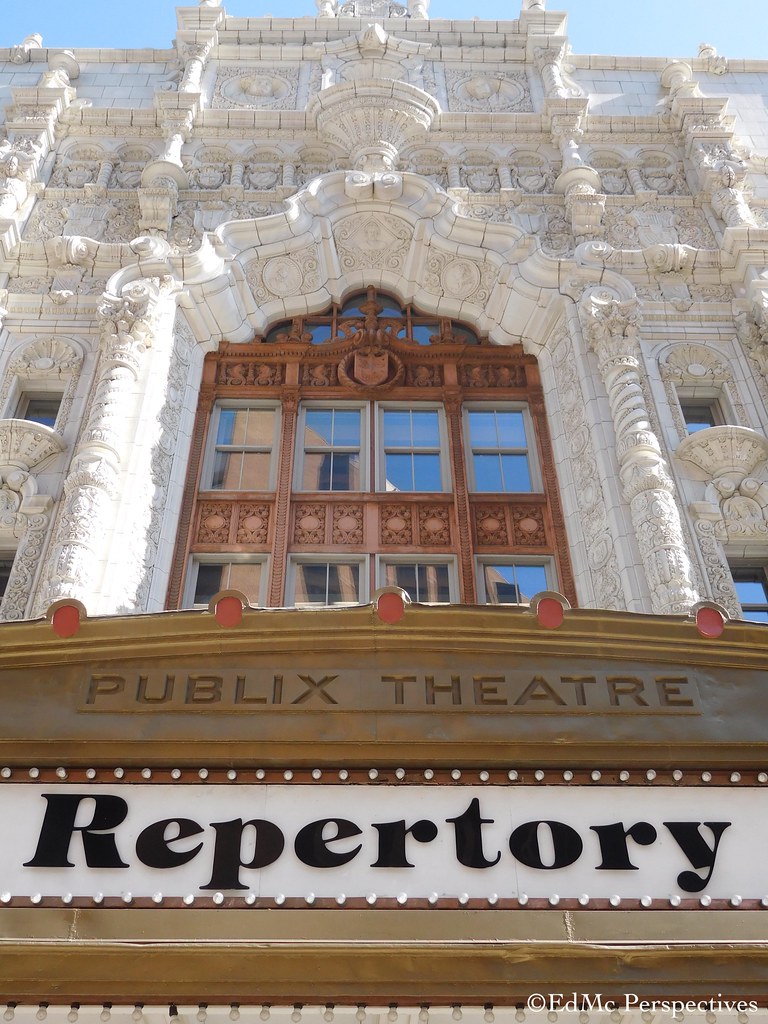
Half a block off the trail
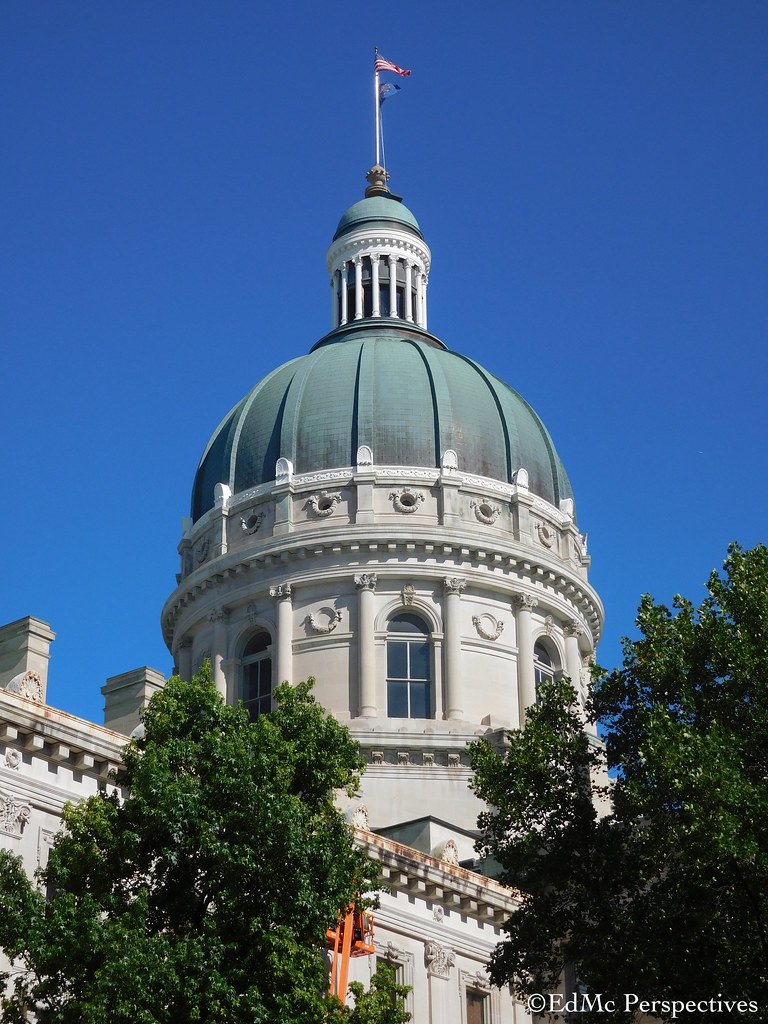
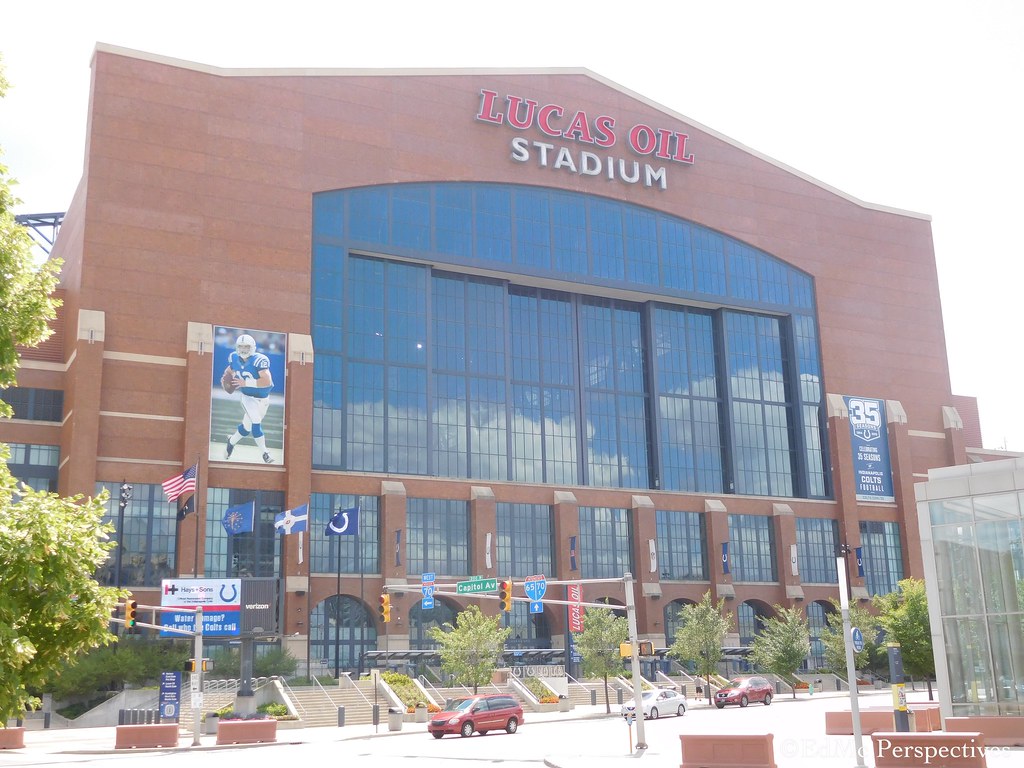
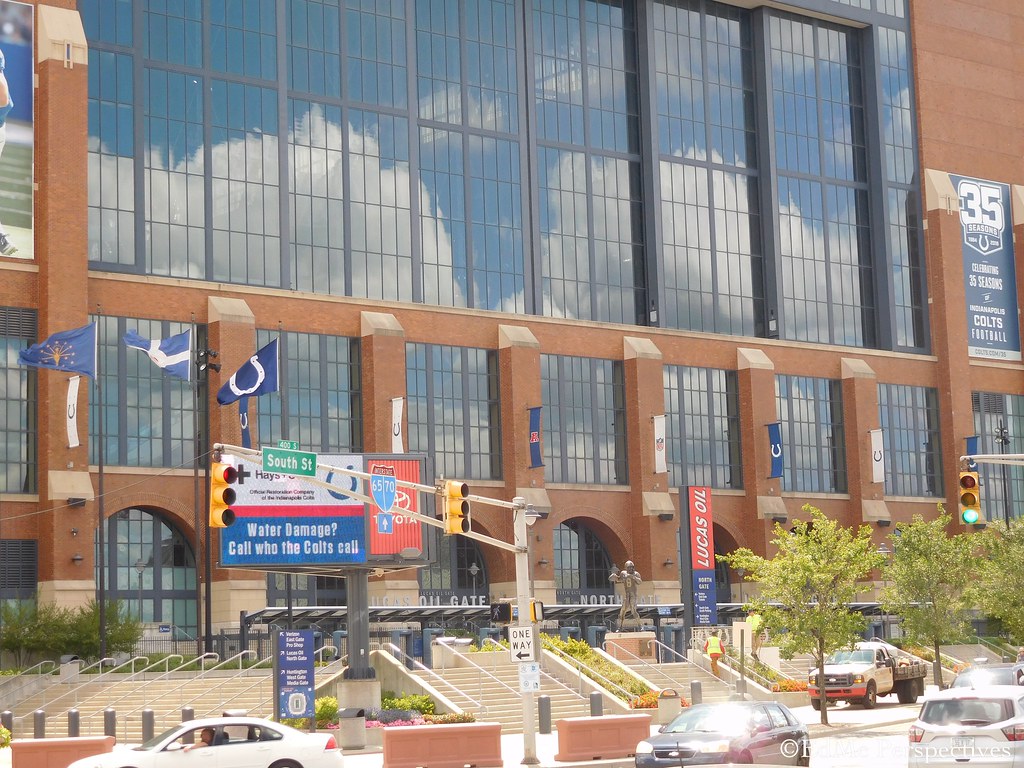
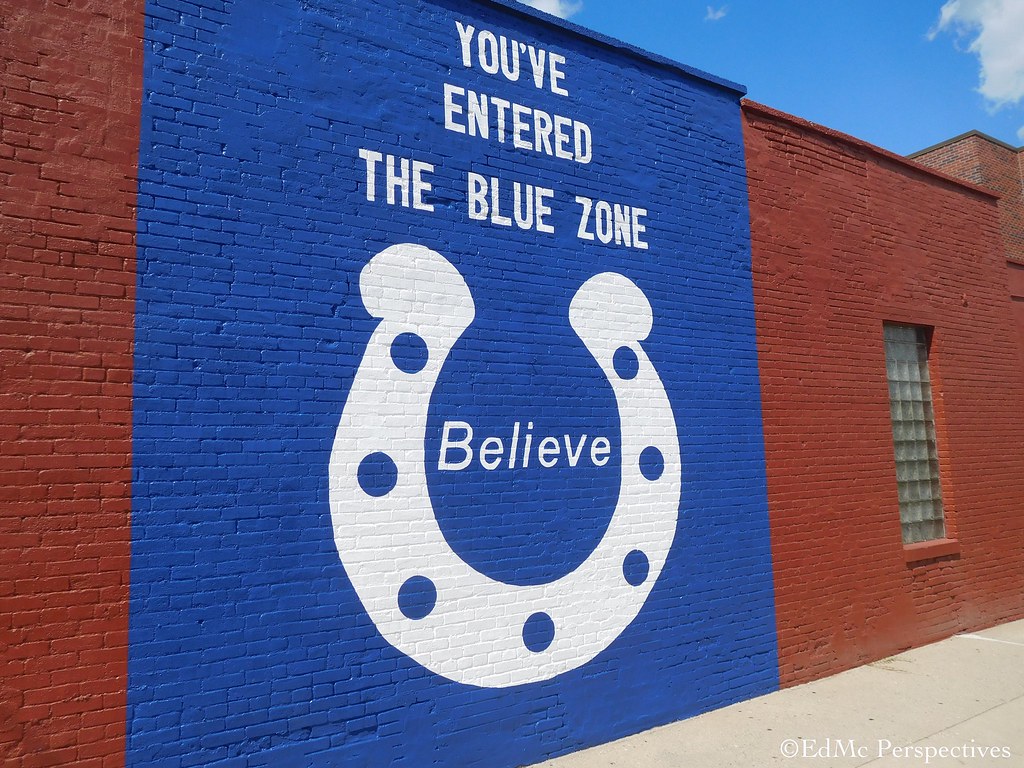
The heart of Downtown Indianapolis, Monument Circle, one block off the trail.
On Market Street looking east at Soldiers and Sailors Monument.
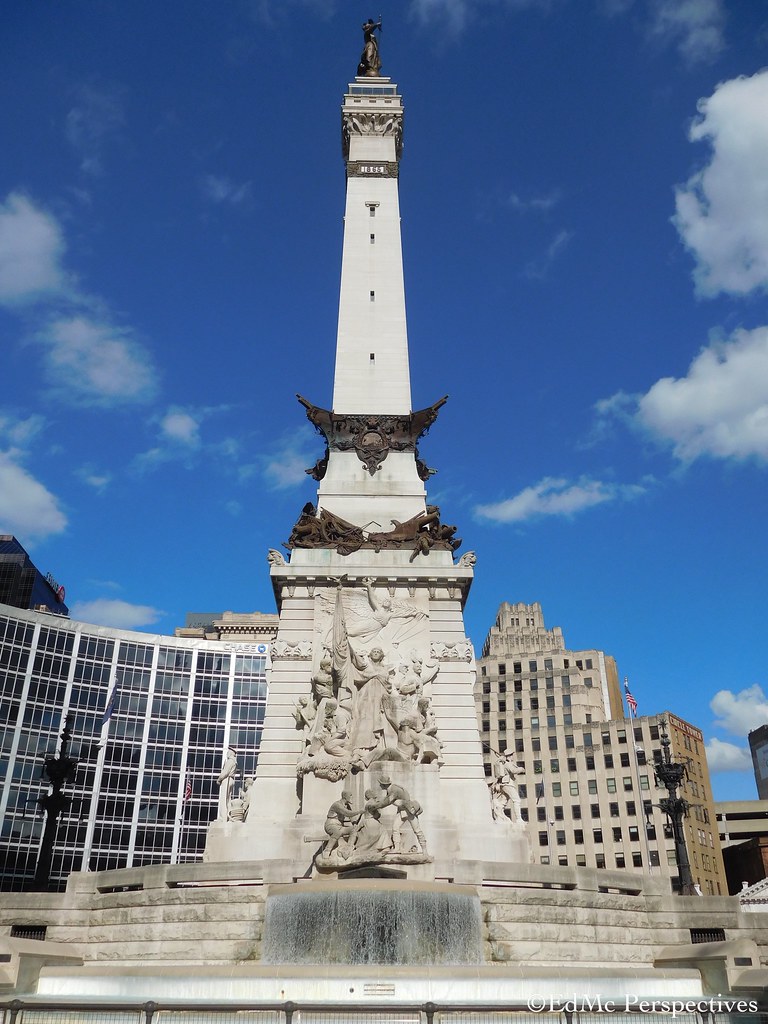
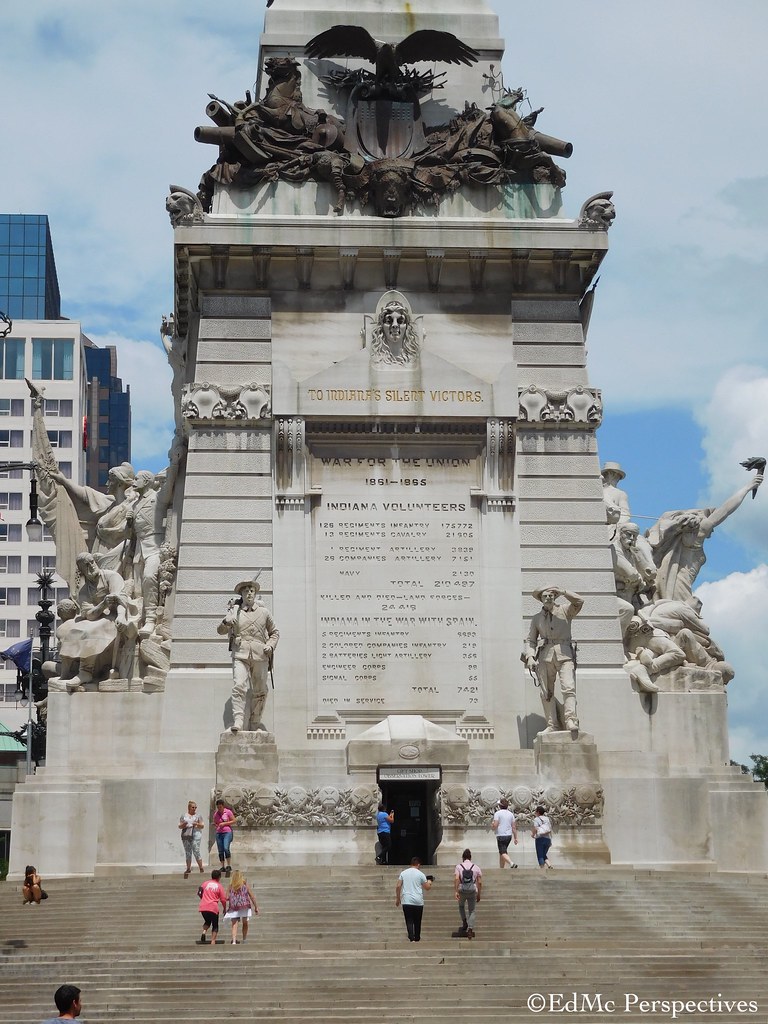
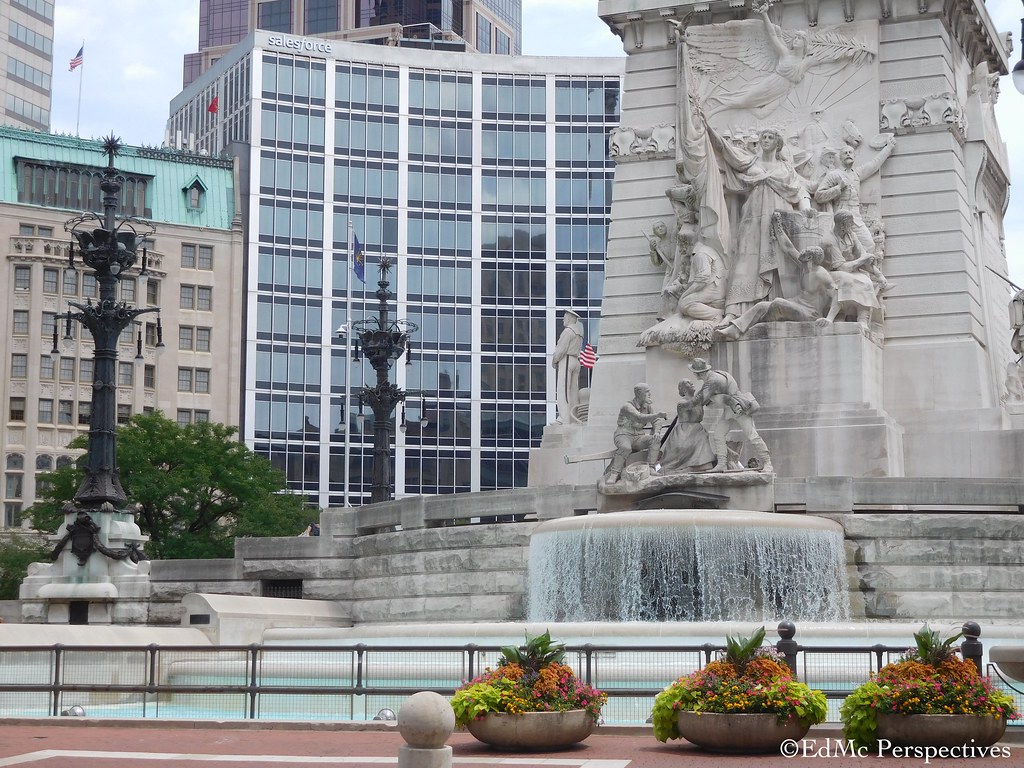

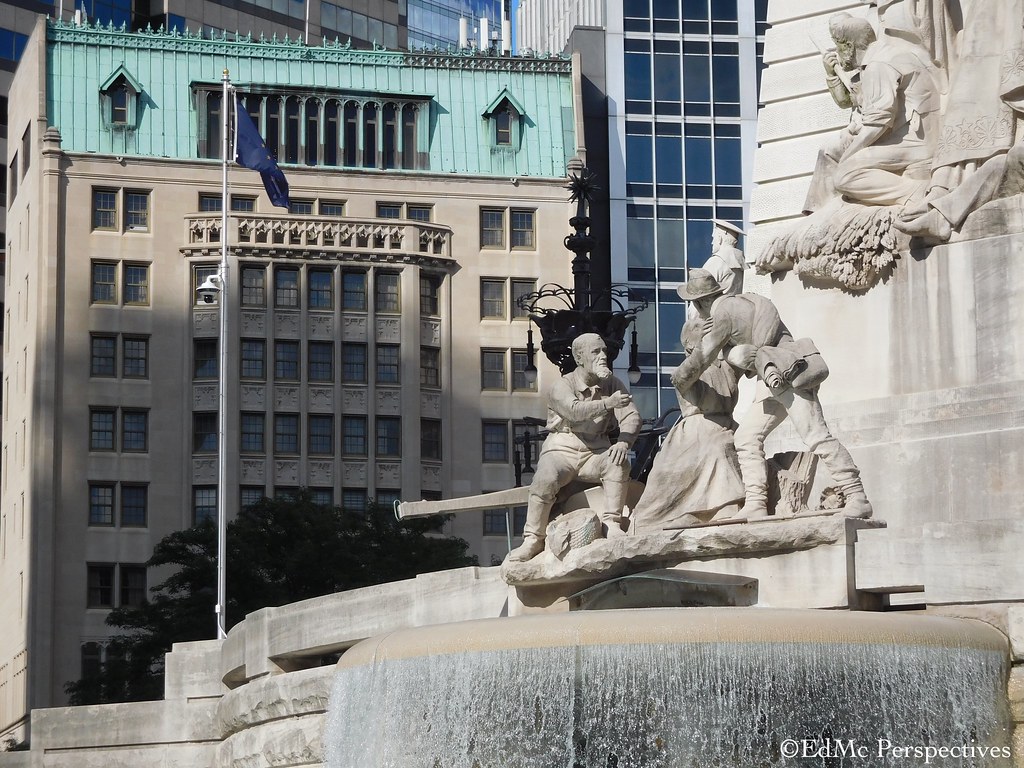
Salesforce Tower

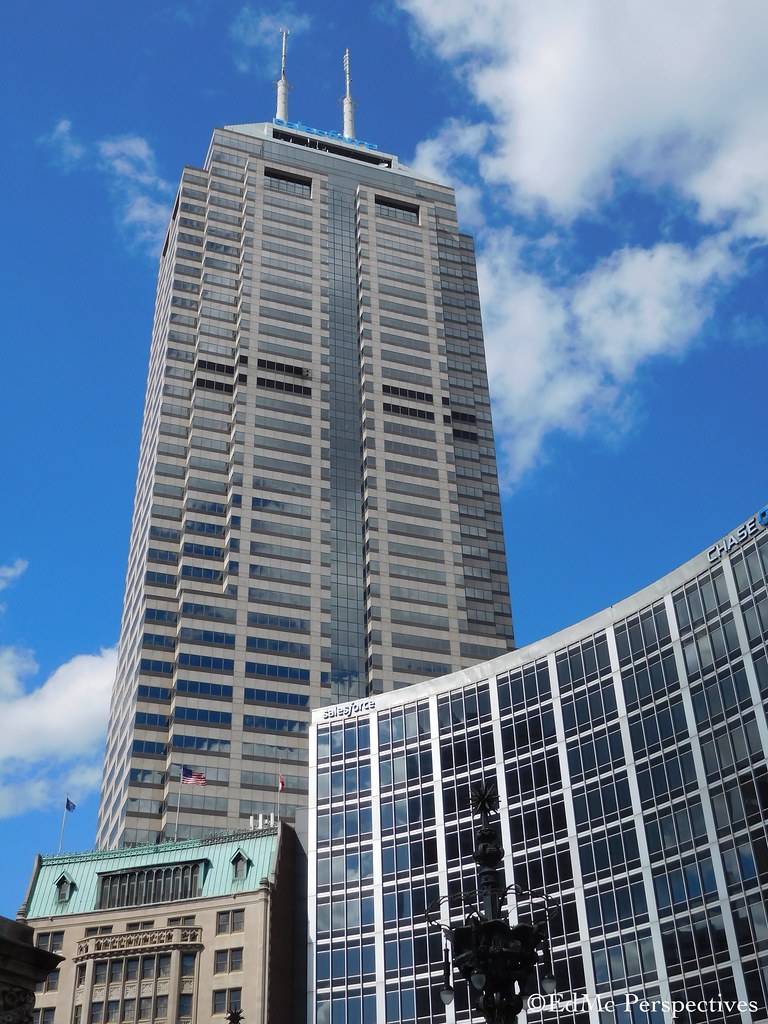
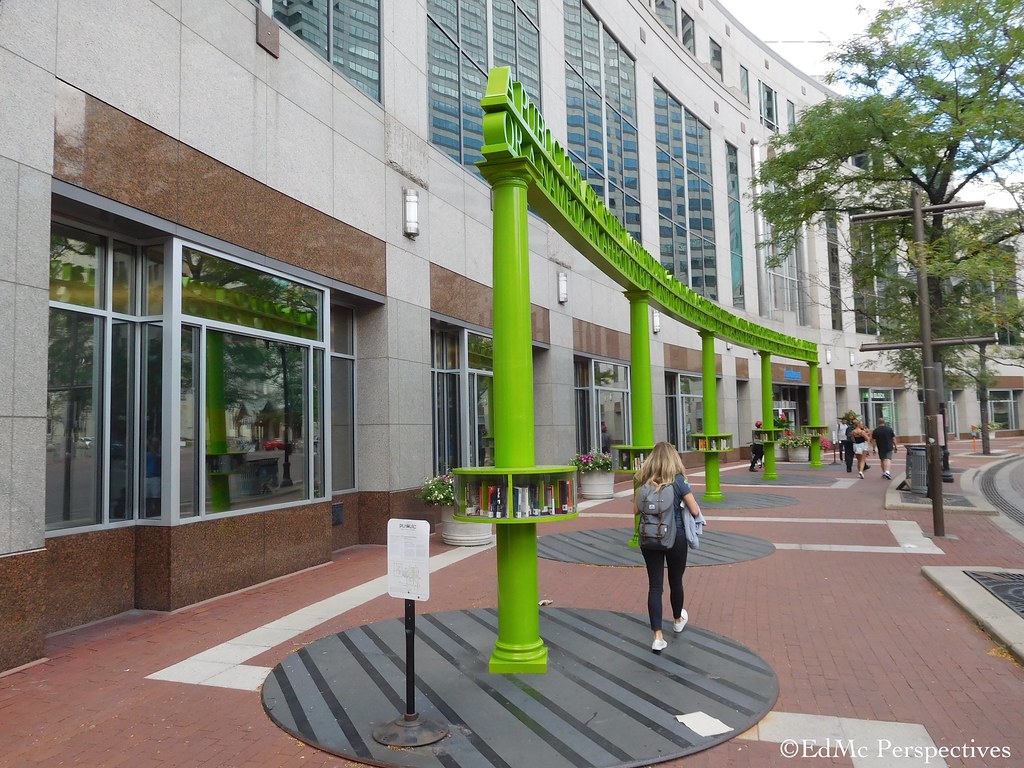

This Midwestern city had an advantage at the start for placing a bike path, that is, wide thoroughfares.
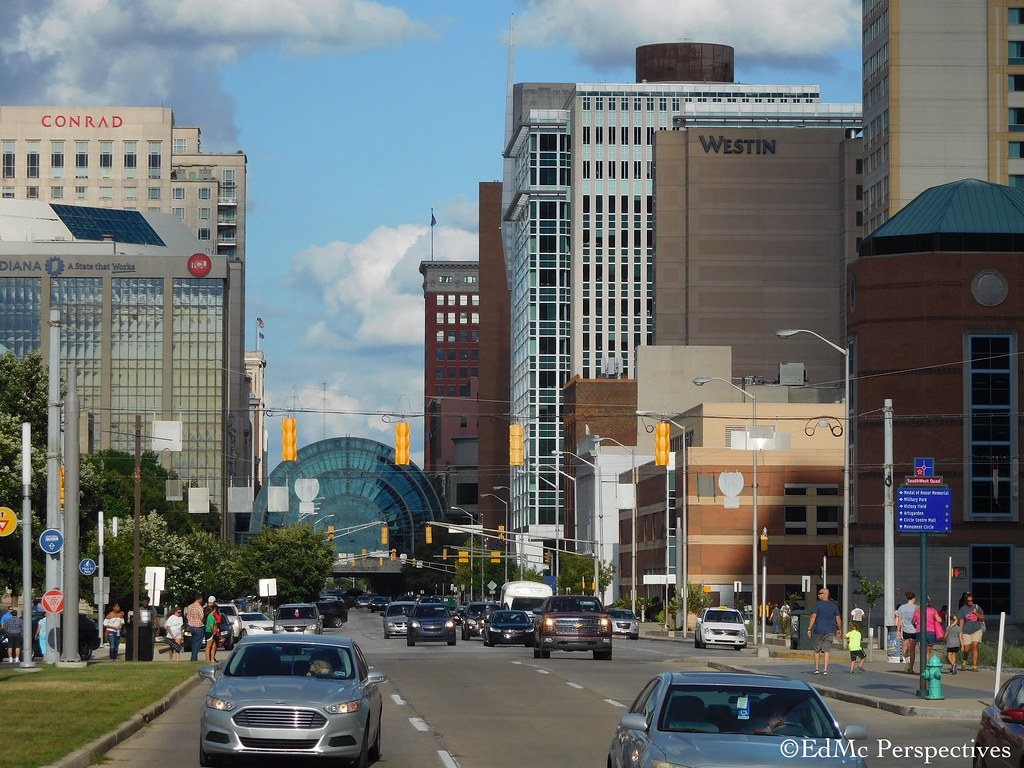

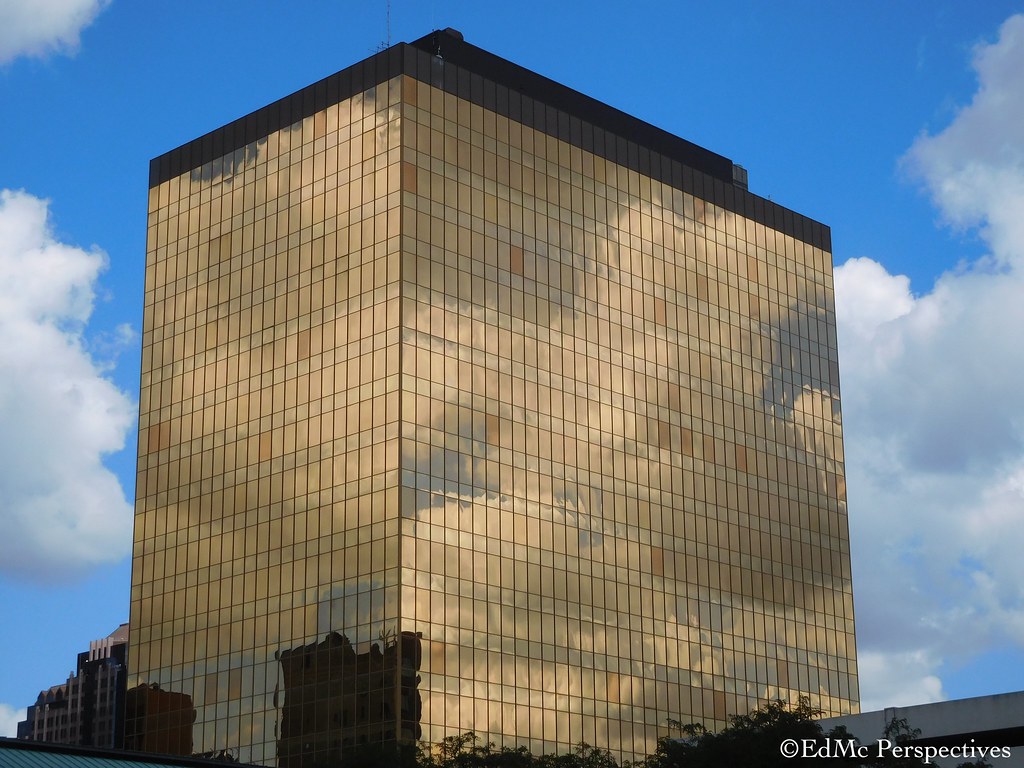
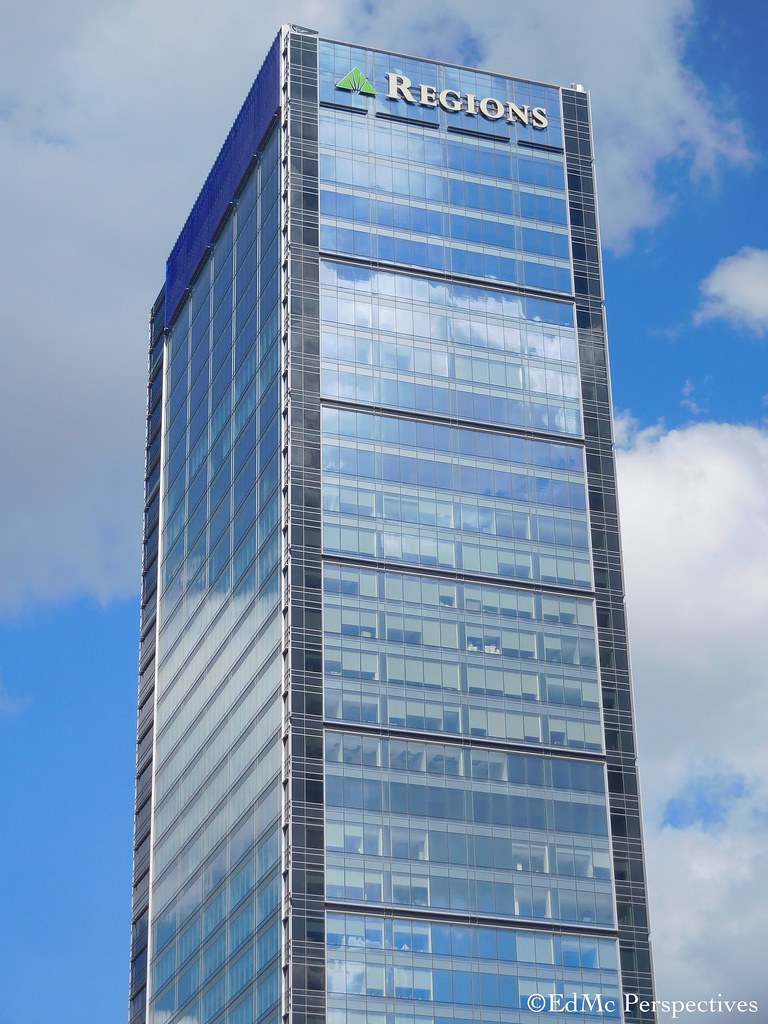
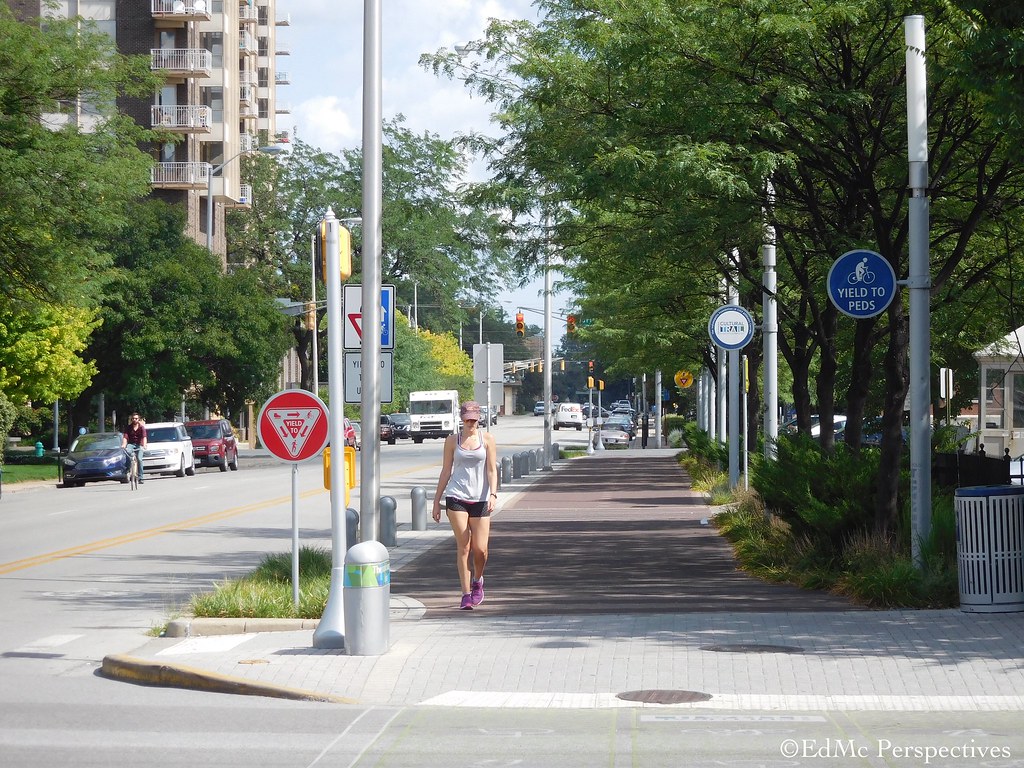
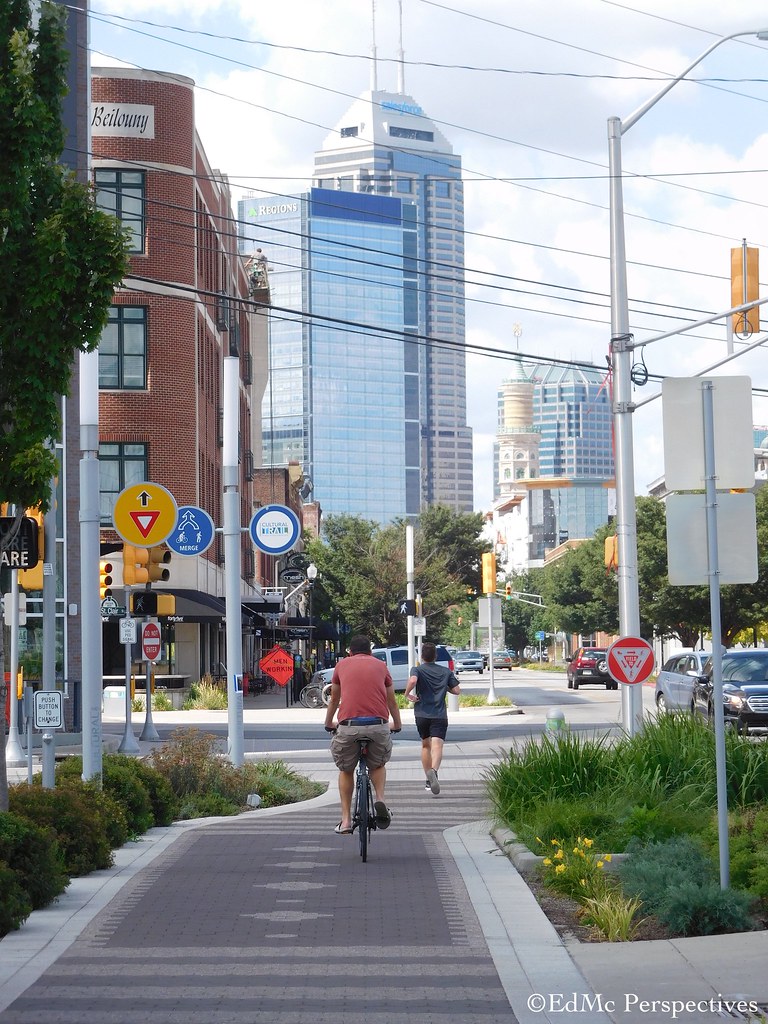
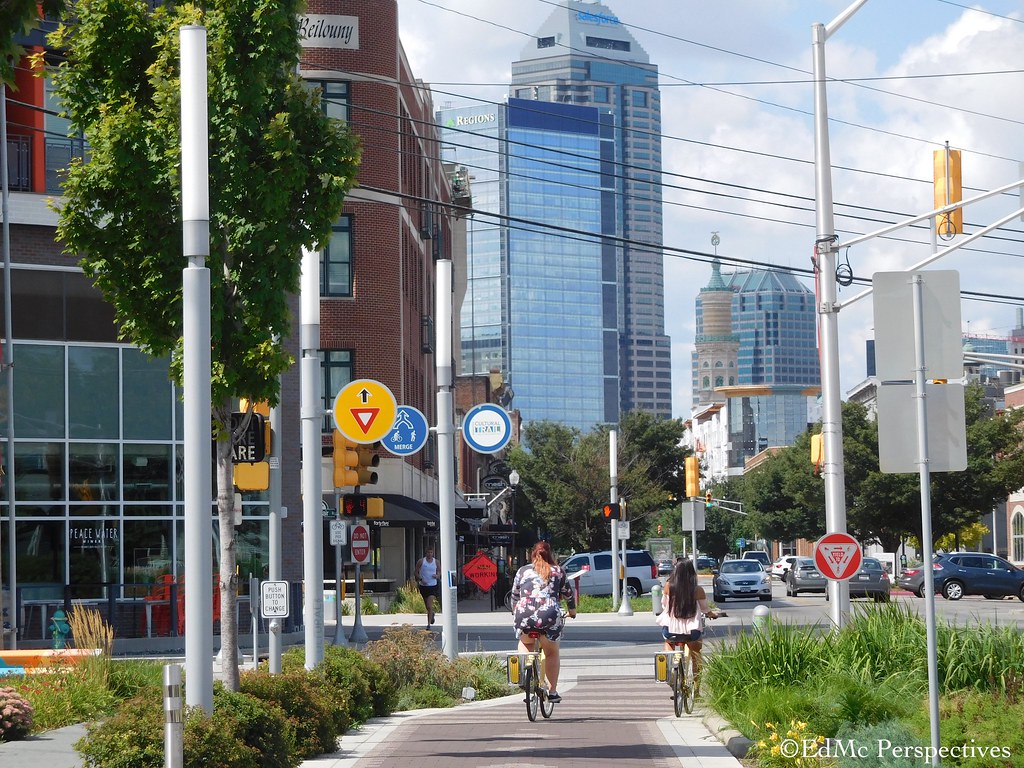

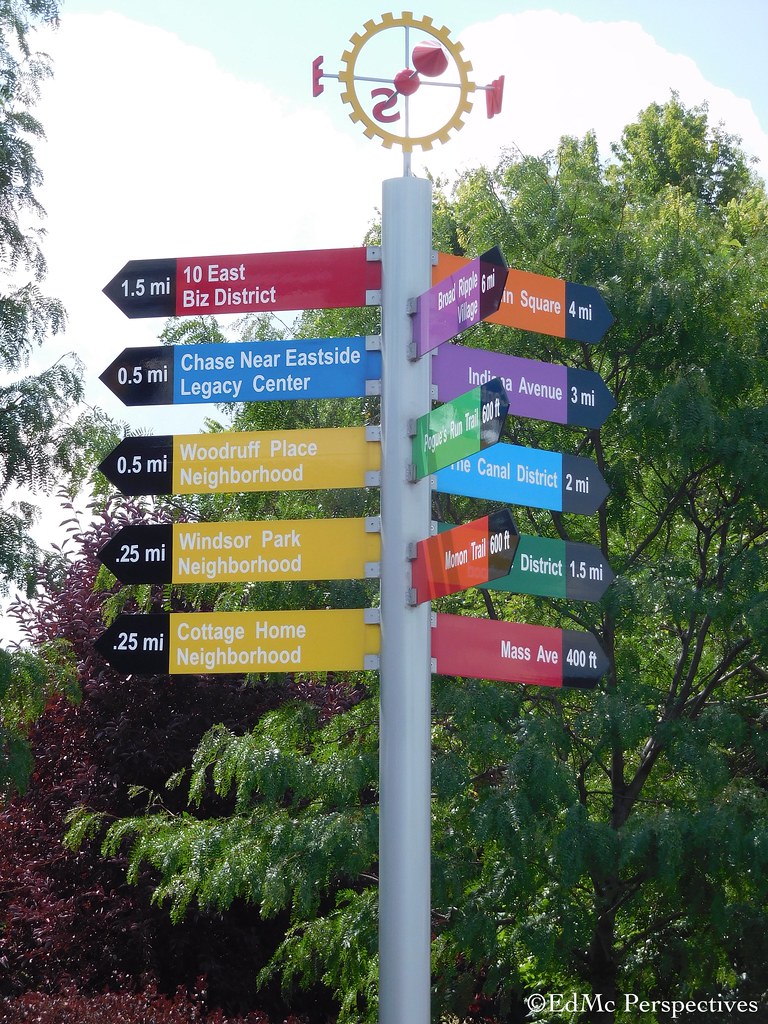
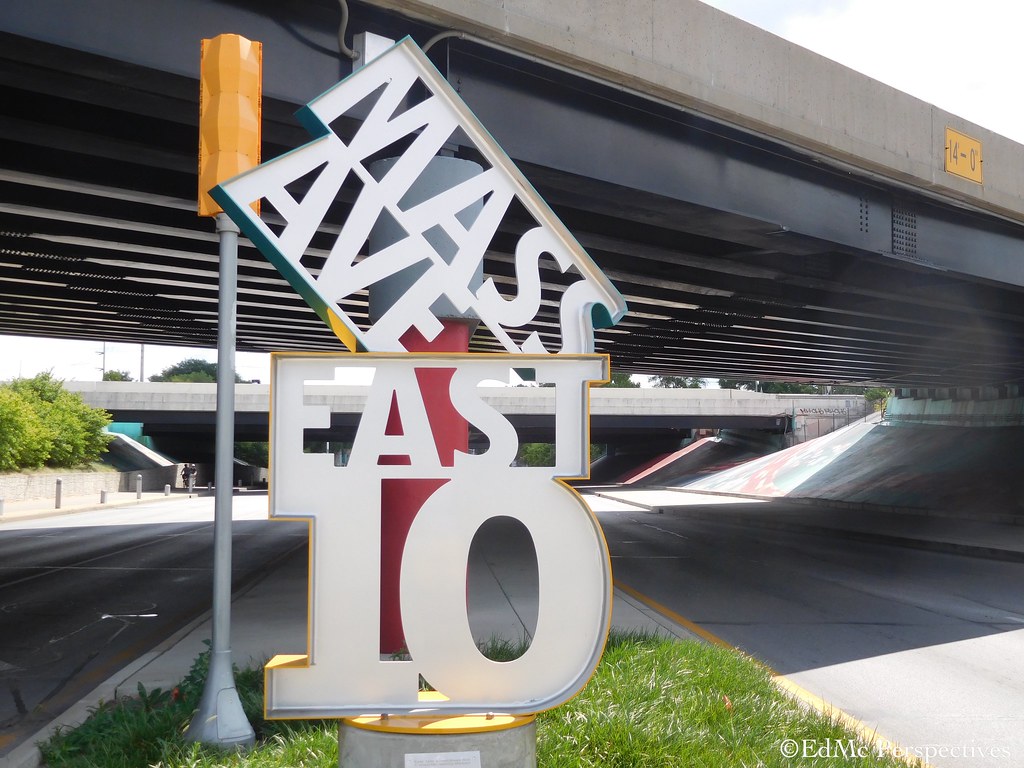
The Cultural Trail connects with the southern terminus of the 23 mile Monon Trail, a trail included in the Rails to Trails Conservancy’s ‘Top 100 US Trails’.
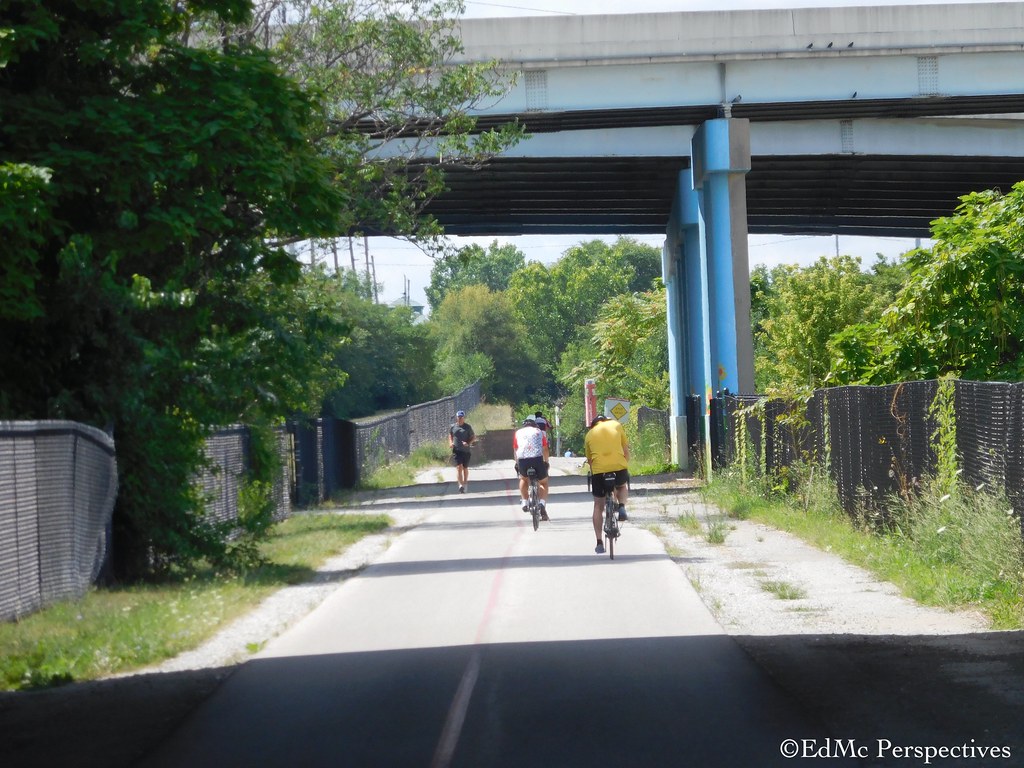
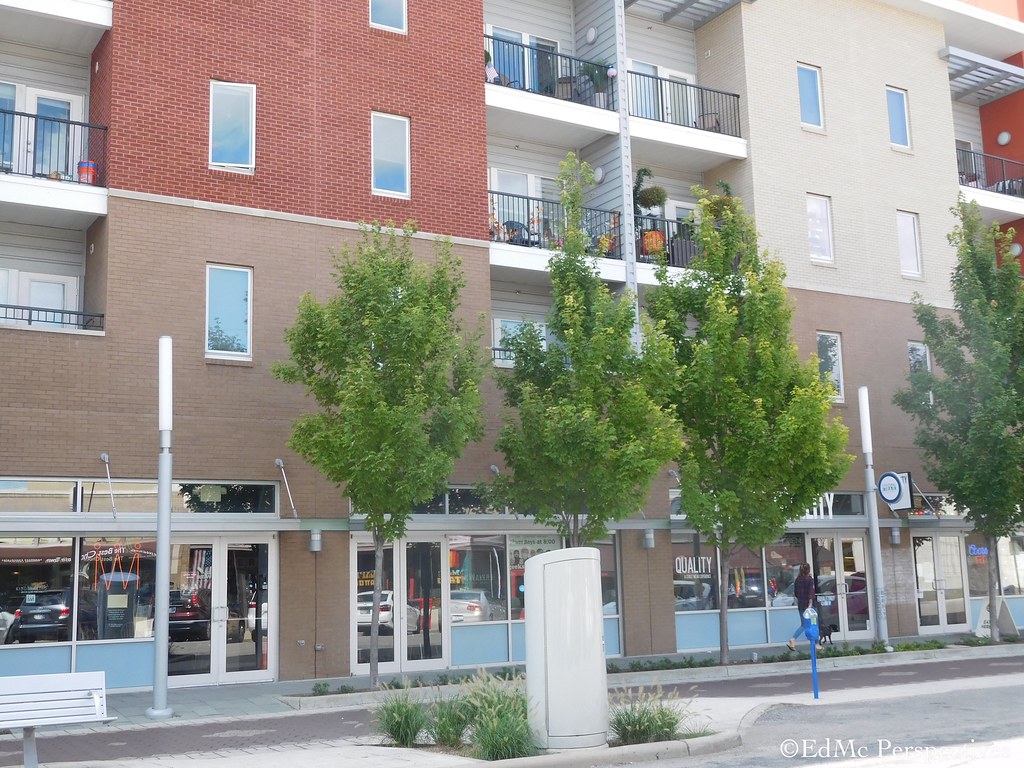
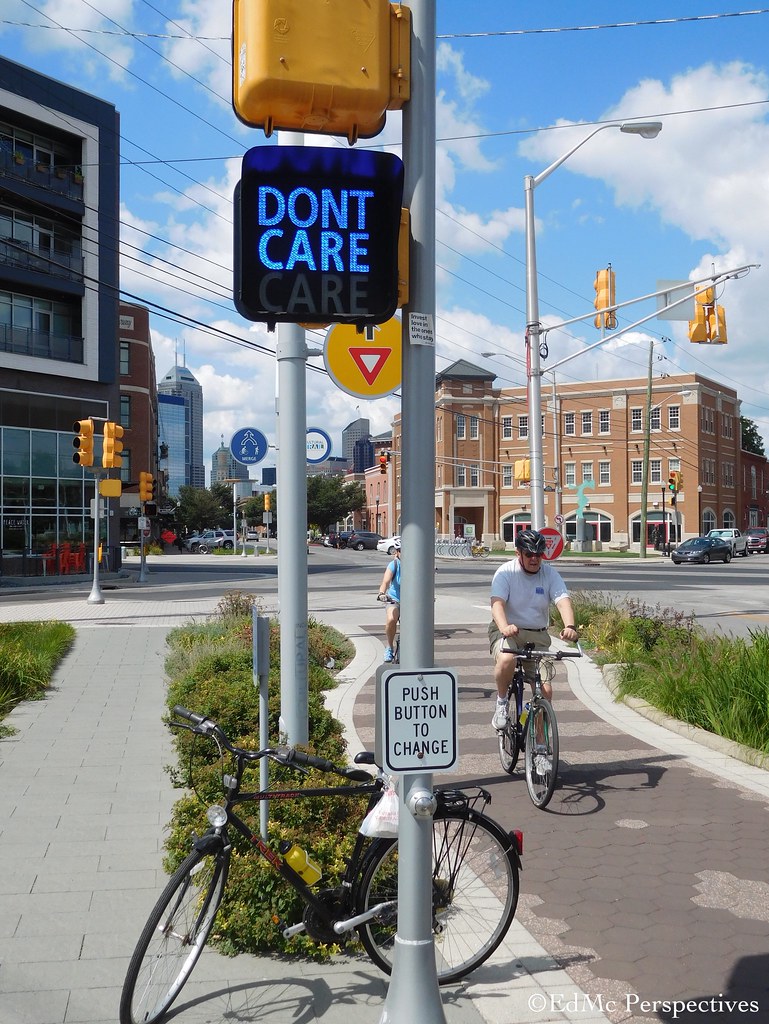
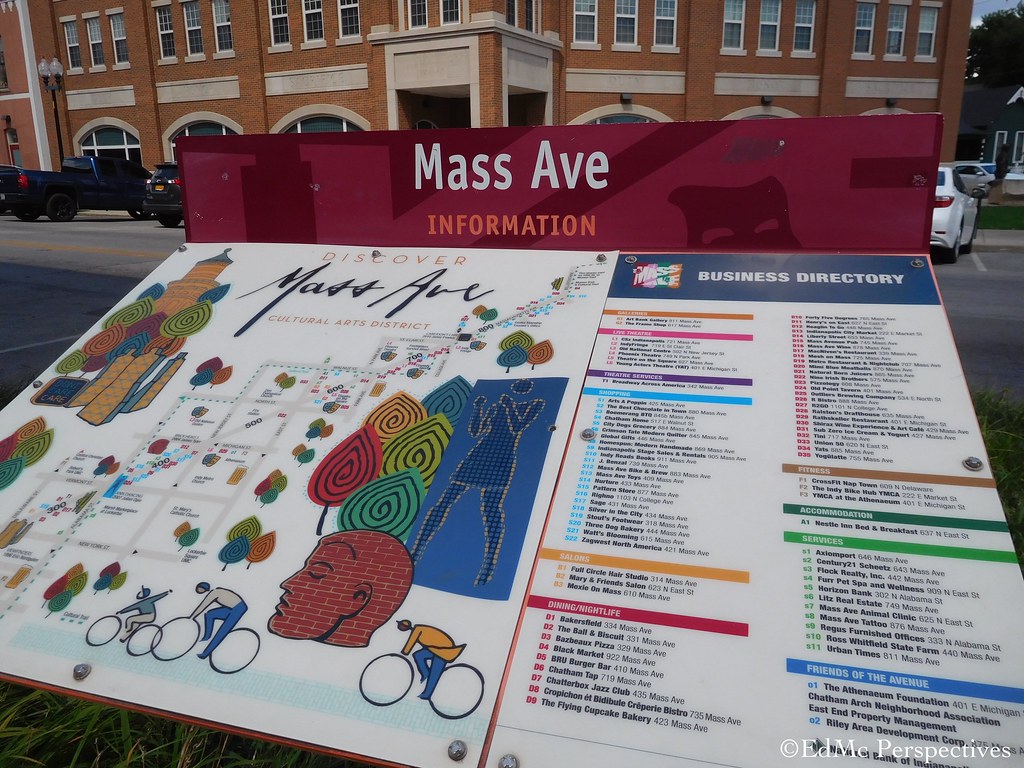
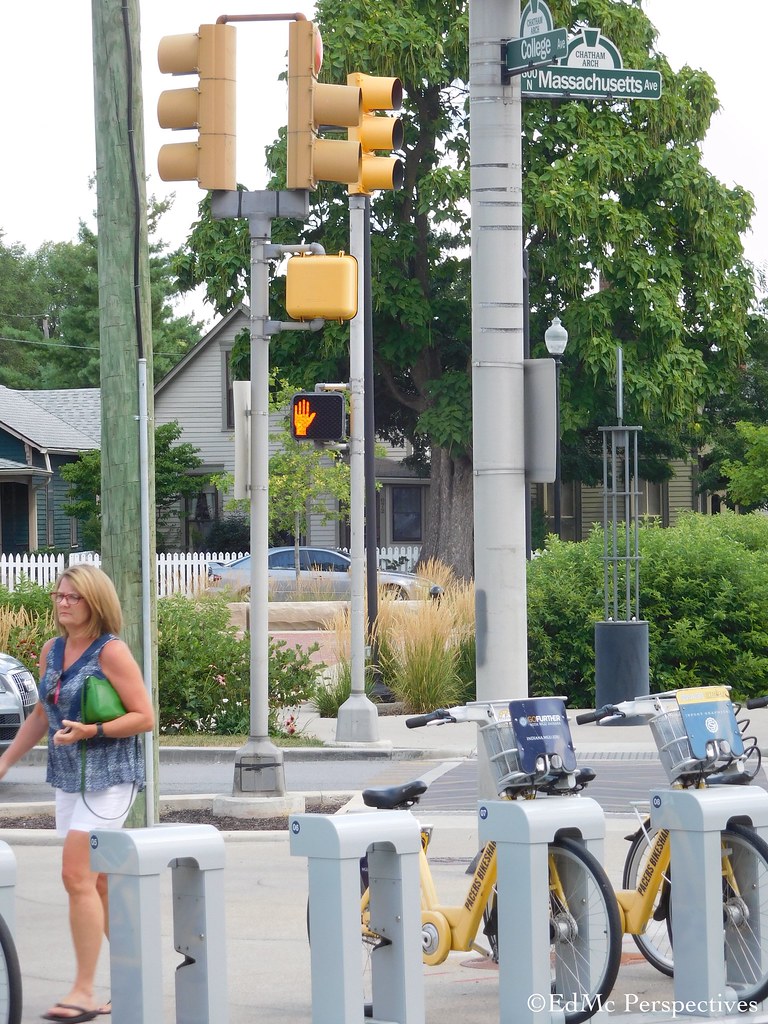
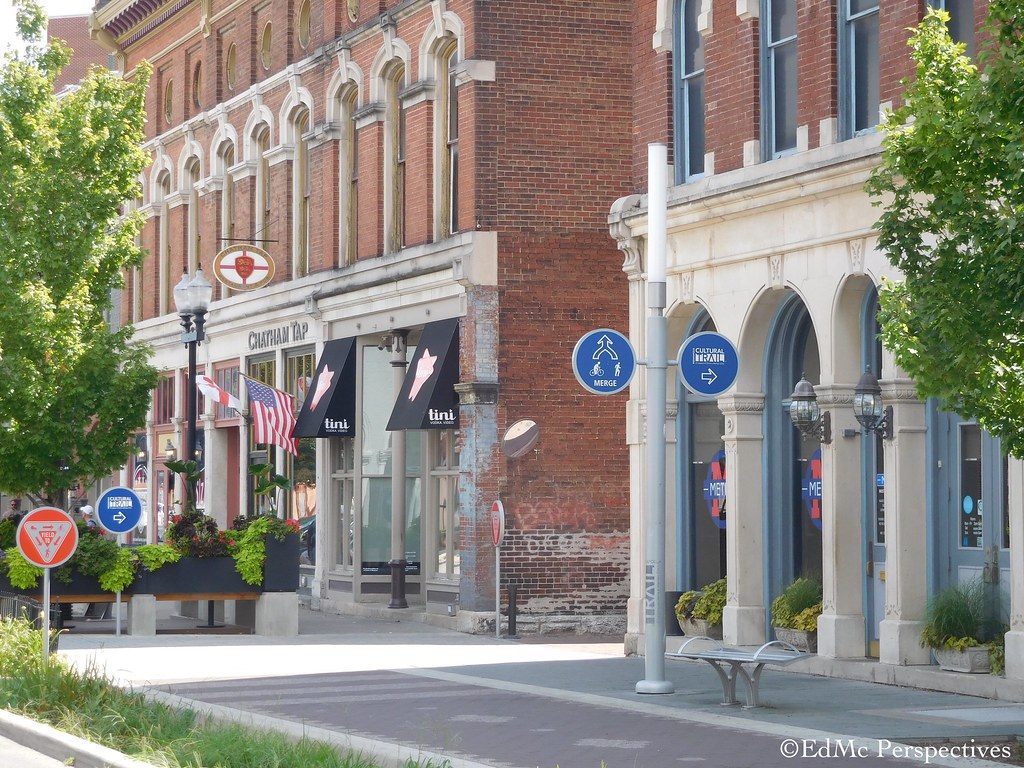

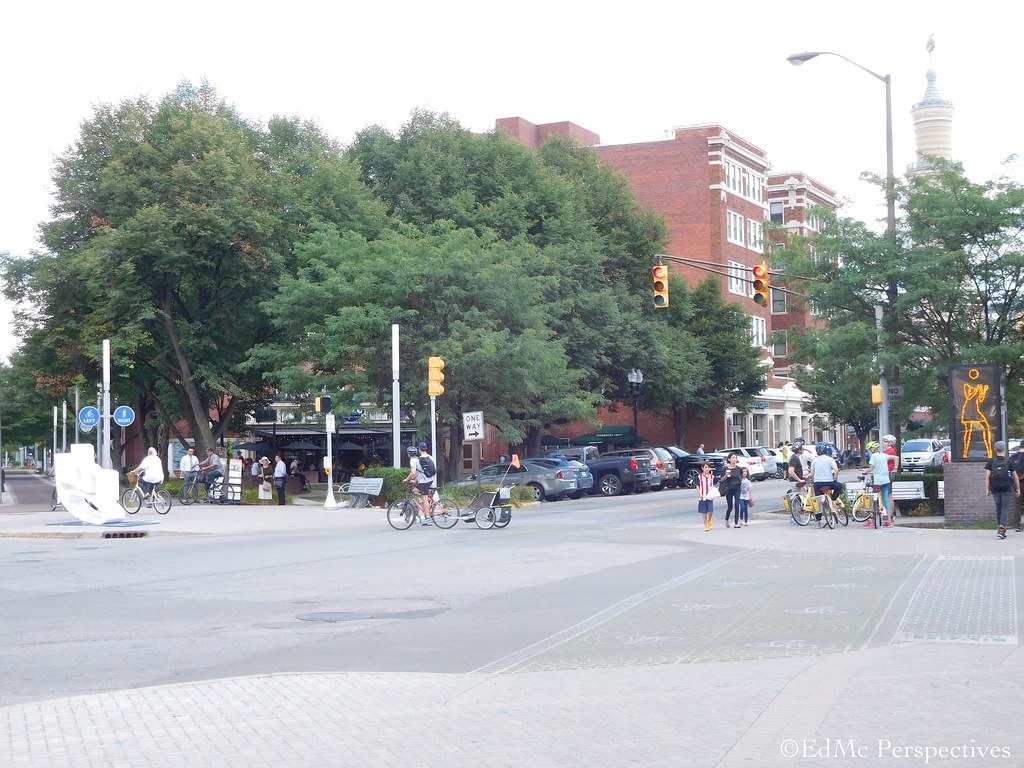
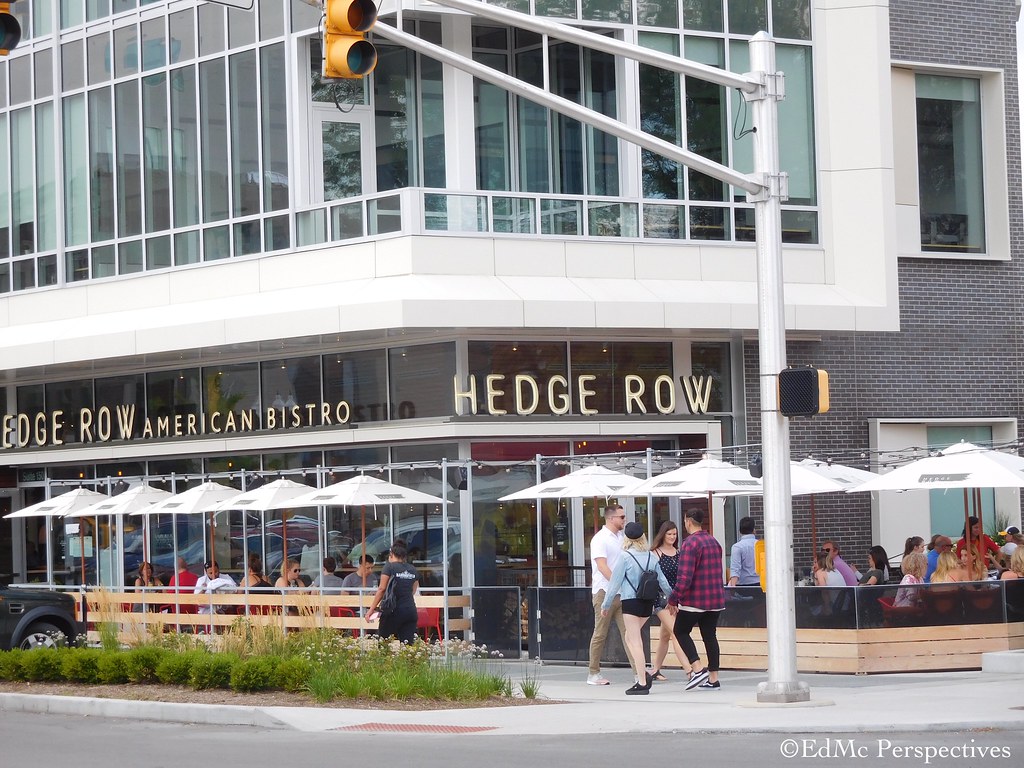
Open a flap, take a book
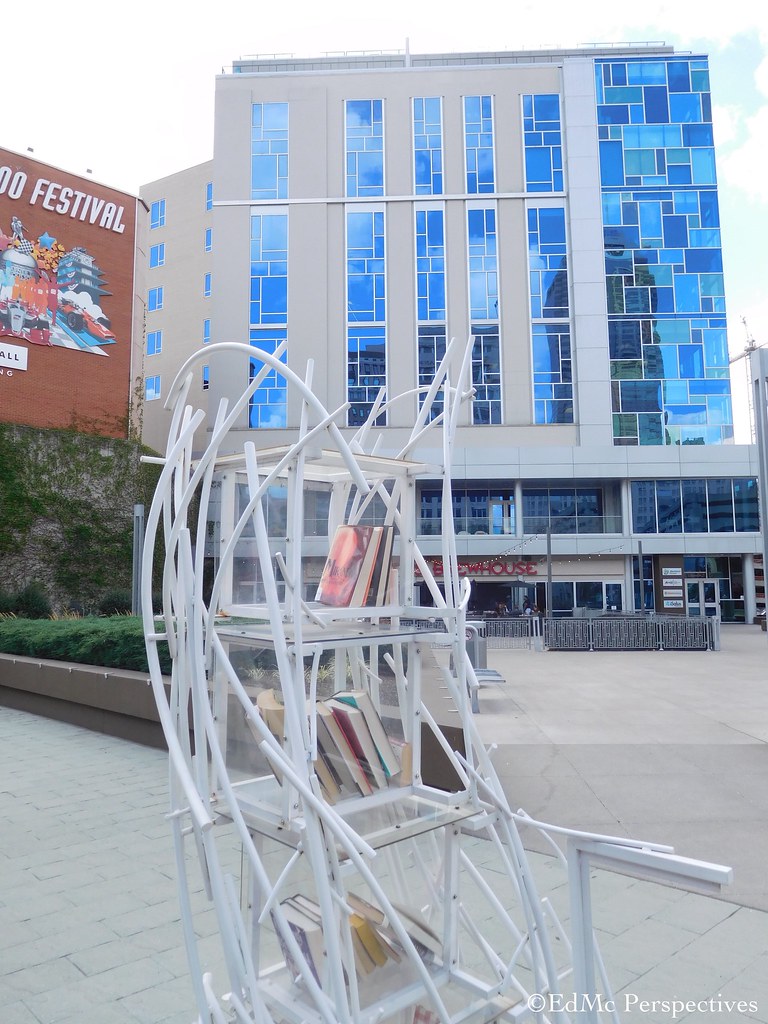
Lights turn on and off as the movement of a cyclist or pedestrian passes by
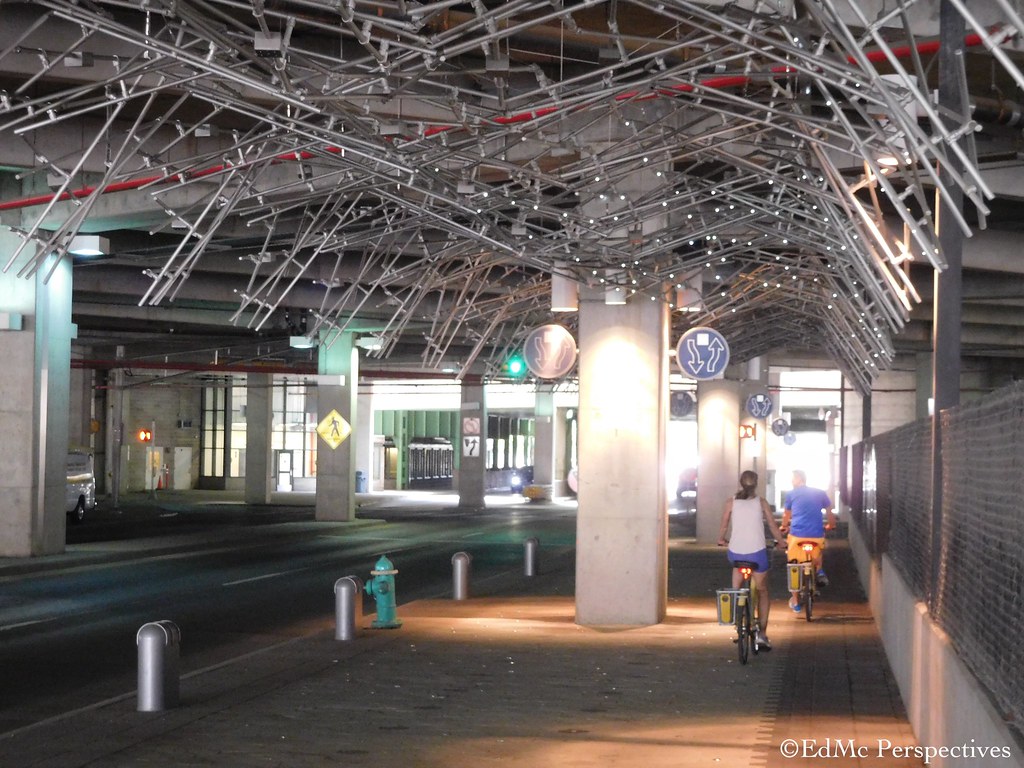
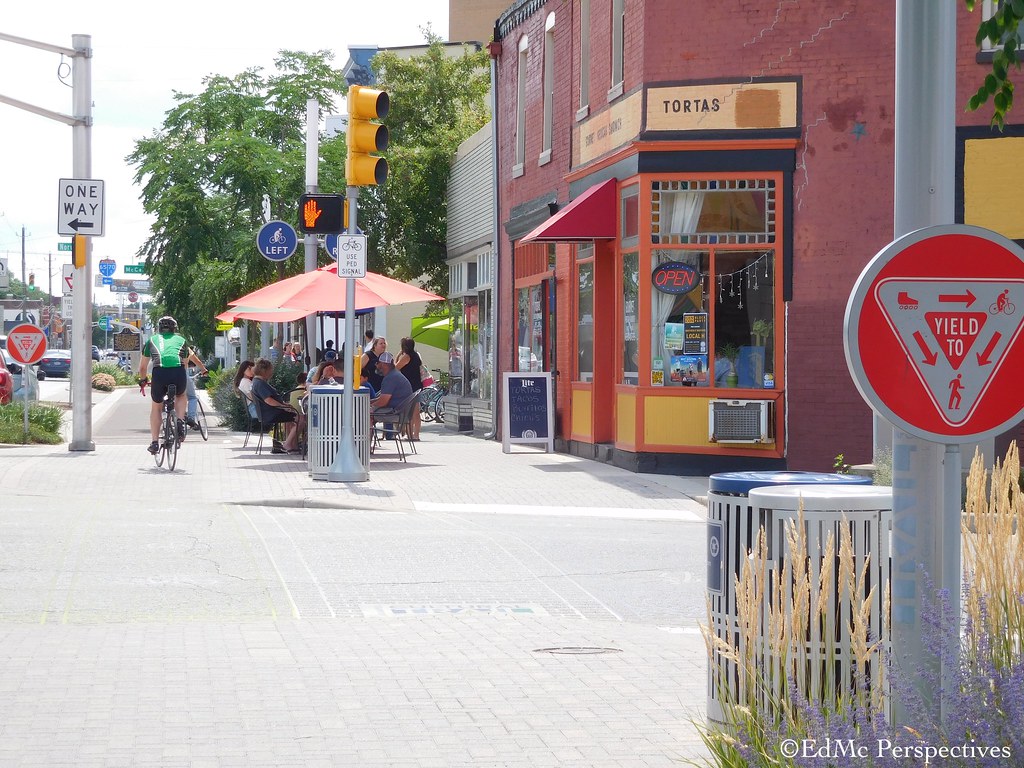
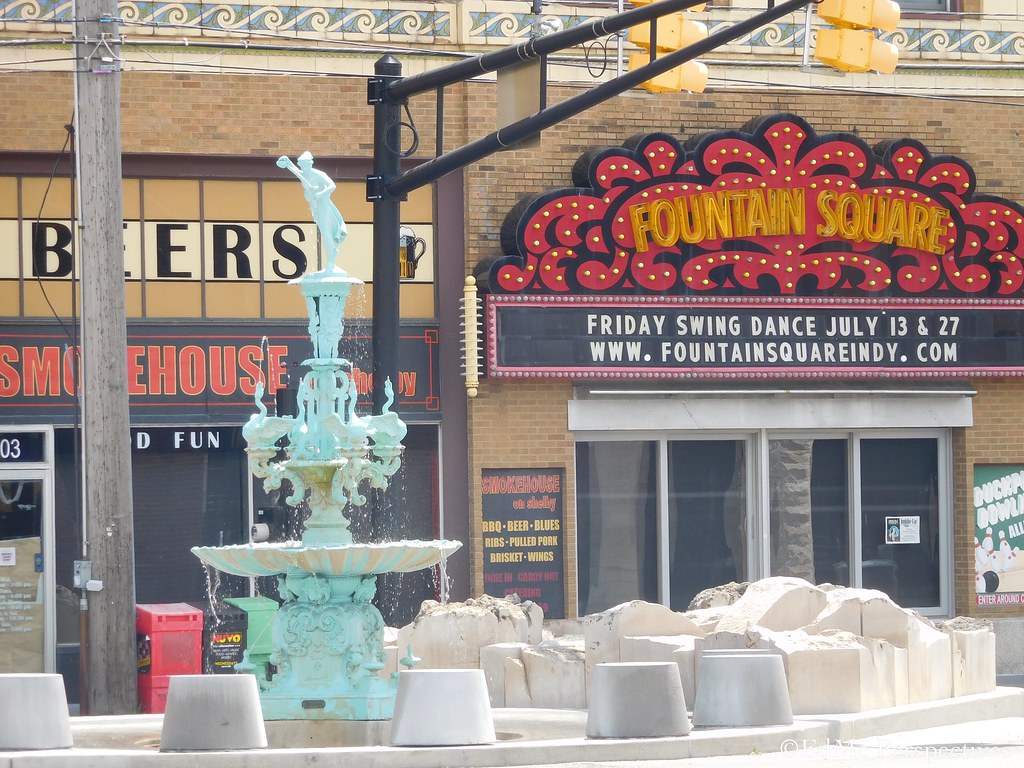
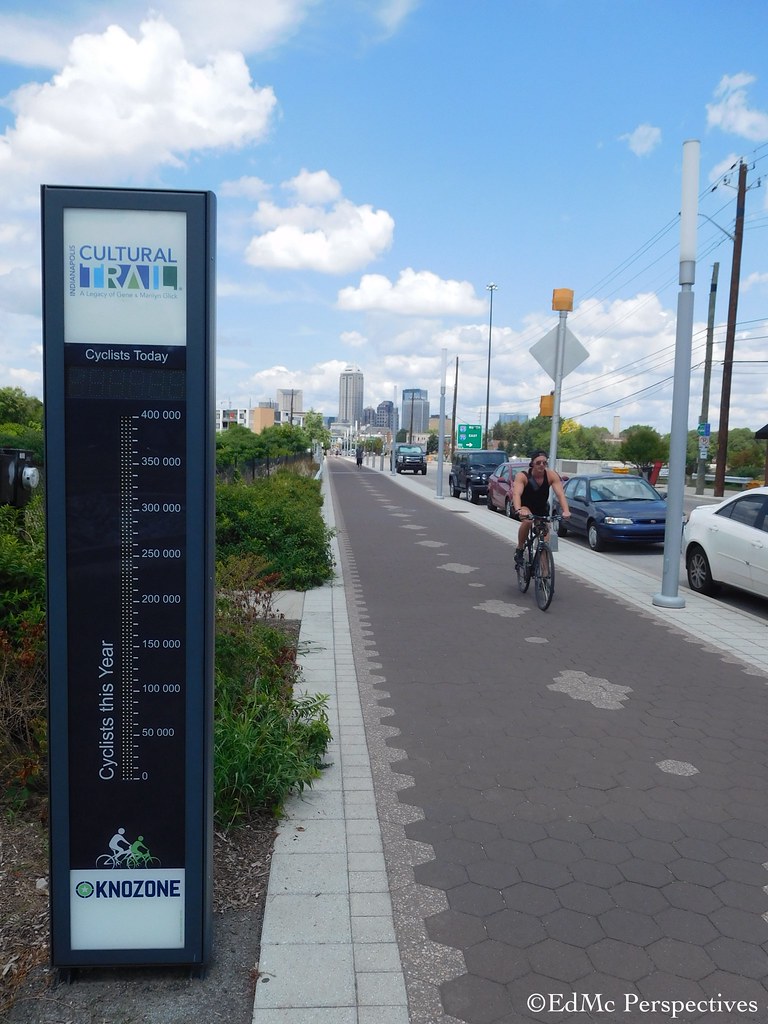
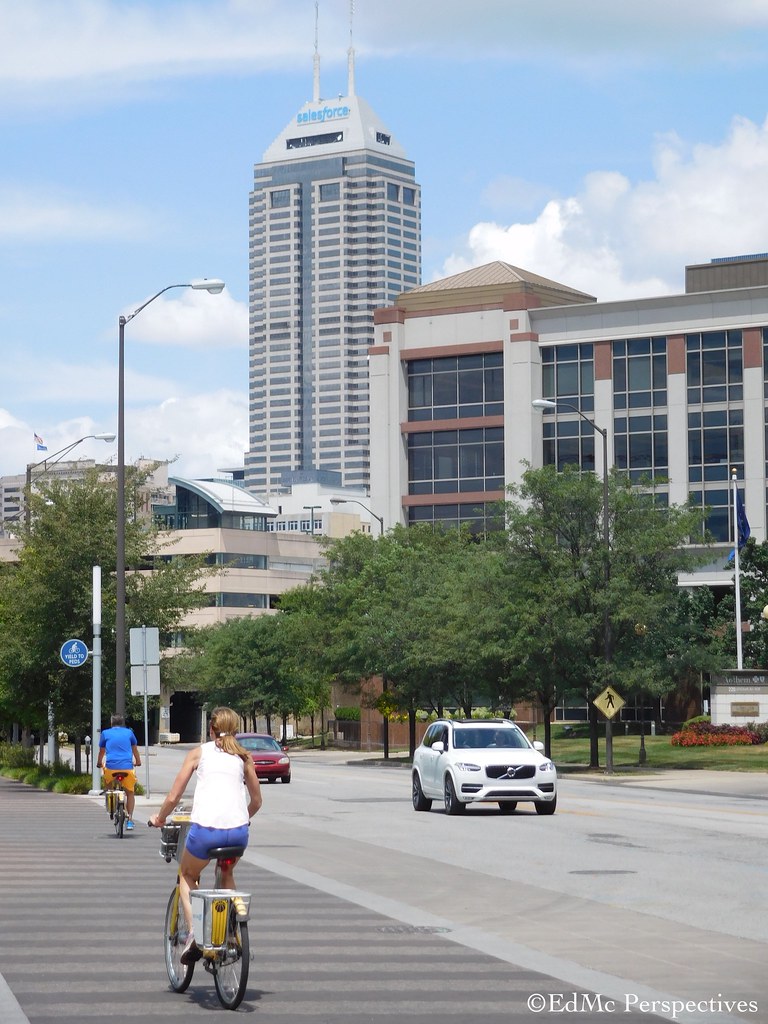
How does the Connect Historic Boston Bike Trail compare to the Cultural Trail?
http://indyculturaltrail.org/about/
If you are an avid two-wheeler, or not, you might like the 1979 charmer, “Breaking Away”. Filmed on the streets and roads of Bloomington, Indiana, home of the University of Indiana. Four young buds trying to find their direction.
Winner, Academy Awards, Best Writing, Screenplay Written Directly for the Screen. Also, Best Picture nominee.
Ranked #8 on the American Film Institute's 100 Most Inspiring Movies of All Time (2006). - IMDB
Also, while the Cultural Trail is a terrific public space, check out this beautifully presented program for “10 Homes, Parks, Towns, Streets, Monuments, and Modern Marvels That Changed America”. https://interactive.wttw.com/ten/#.XB1-nopMGhA
Indianapolis is probably best-known for the Indianapolis 500 Mile Race,


but, should also be recognized for its ambitious downtown Cultural Trail.
A beautiful bike and pedestrian trail with an eight mile length, I don’t think that this trail takes a back seat to any city. Visit Indy - $2 million dollars in public art, 5 acres of plants and trees, transforming the landscape, impacting the environment, bioswales, natural storm water management, promoting fitness, connecting people and places, the Journey is the Destination.
With a lead gift of $15 million dollars from Eugene and Marilyn Glick, ground-breaking began in 2007 and the trail was completed in 2013.
In February, 2008, the organization, Projects for Public Spaces, published the article, BOLD MOVES AND BRAVE ACTIONS, and stated, ”Indianapolis, Indiana, is taking what may be the boldest step of any American city towards supporting bicyclists and pedestrians”. After looking at before-and-after pictures, one can reach the conclusion that this trail was a game-changing project for Indianapolis.
Indianapolis Star, July 23, 2015
Study: Property values along Cultural Trail up $1B
“Property values have increased by $1 billion, businesses report more customers and higher sales, and residents feel safer Downtown since construction of the 8-mile Cultural Trail, according to a survey conducted by Indiana University Public Policy Institute.”
“Twenty-six percent of businesses said they now open on weekends, and 23 percent said they close later.”
“You can look around today, especially on Virginia Avenue, and see how the Cultural Trail already has changed our city,” Mayor Greg Ballard said in a prepared statement. “The impact is significant, and it will continue to grow in the years ahead.”
“The $63 million Cultural Trail was created through a public-private partnership between the city of Indianapolis and Central Indiana Community Foundation, which raised $27.5 million in private support. An additional $35.5 million came from federal transportation grants.”
Indianapolis Business Journal, Nov 4, 2017
Cultural Trail becomes unique drawing card for conventions and trade shows
“Indianapolis’ Cultural Trail has been called “a linear welcome mat,” “a directional sign” and “a marketer’s dream.”
“Of the $63 million total, $6 million was set aside in an endowment, which pays out 5 percent—or $300,000—annually for maintenance and improvements.”
“In 2014, the Indiana University Public Policy Institute placed counters on the Cultural Trail that estimated 1 million people used it that year.”
““We see people on the trail at all hours,” said Visit Indy Vice President Chris Gahl. “At 9 or 10 o’clock on a warm night, the trail can be pretty crowded.”
“About 4,500 volunteers also signed up to help maintain the trail.”
“There are already more than 20 cities that want to copy it.”
“Then the New York Times weighed in with two articles. One came in an early 2014 travel section that touted Indianapolis as one of 52 must-see destinations around the world. The reason, the Times raved, was the Cultural Trail.”
“You can’t buy publicity like that,” “... we realized what the Cultural Trail would mean from the standpoint of attracting visitors. But The New York Times article blew the lid off of that.”
“But there’s an important distinction between Indianapolis’ Cultural Trail and those urban trails (High Line in New York, the BeltLine in Atlanta, and the 606 in Chicago).” “We built this trail where people wanted to go, not just where there was a rail corridor or other available land,”
All views are from the trail except where noted. They are interspersed with photos of the trail.



On Washington Street looking east



Artsgarden over Washington Street, Cultural Trail on right side of picture




Circle Centre Mall is an attractive, solid-looking mall, I liked the food court setting.

This picture is from the Circle Centre Mall garage, parking starts at $3 for up to 3 hours - take that Boston! Mall opened in September, 1995. Garage one block off the Trail, mall entrance across the street from the Trail.





East side of downtown looking west





North side of downtown looking south






Memorial for the World War II heavy cruiser USS Indianapolis, accessible via a ramp off the Trail.



Movie clip of actor Robert Shaw’s monologue describing the USS Indianapolis sinking from the blockbuster 1975 movie, “Jaws”. Some people think that it is the best scene in the movie.
https://m.youtube.com/watch?v=u9S41Kplsbs
The date mentioned of the ship sinking is one day off and the number of men onboard is 1196 according to the memorial, not 1100 as spoken in the movie. The tour guide for the Indianapolis Speedway tour said that 17 survivors were alive as of July 27, 2018. They have a yearly reunion at the Memorial Day race.

Trail passes over canal









Pacers Bikeshare



The Downtown Canal Walk is a 3-mile loop.
West side of downtown looking east



This part of The Canal Walk is a couple of blocks from the Trail






This walkway connects the Cultural Trail to the east side of the White River Trail

The art installations make the trail more interesting


A short piece of the Cultural Trail runs through White River State Park

The Cultural Trail connects with the west side of the White River Trail and the Indianapolis Zoo over this bridge.

White River, there is a bike trail on each side.




Looking back at White River State Park

South side of the trail looking north, have looped around downtown





Half a block off the trail




The heart of Downtown Indianapolis, Monument Circle, one block off the trail.
On Market Street looking east at Soldiers and Sailors Monument.





Salesforce Tower




This Midwestern city had an advantage at the start for placing a bike path, that is, wide thoroughfares.










The Cultural Trail connects with the southern terminus of the 23 mile Monon Trail, a trail included in the Rails to Trails Conservancy’s ‘Top 100 US Trails’.









Open a flap, take a book

Lights turn on and off as the movement of a cyclist or pedestrian passes by





How does the Connect Historic Boston Bike Trail compare to the Cultural Trail?
http://indyculturaltrail.org/about/
If you are an avid two-wheeler, or not, you might like the 1979 charmer, “Breaking Away”. Filmed on the streets and roads of Bloomington, Indiana, home of the University of Indiana. Four young buds trying to find their direction.
Winner, Academy Awards, Best Writing, Screenplay Written Directly for the Screen. Also, Best Picture nominee.
Ranked #8 on the American Film Institute's 100 Most Inspiring Movies of All Time (2006). - IMDB
Also, while the Cultural Trail is a terrific public space, check out this beautifully presented program for “10 Homes, Parks, Towns, Streets, Monuments, and Modern Marvels That Changed America”. https://interactive.wttw.com/ten/#.XB1-nopMGhA
Last edited:

